Nomadic Matt's Travel Site
Travel Better, Cheaper, Longer

Morocco Travel Guide
Last Updated: September 2, 2023
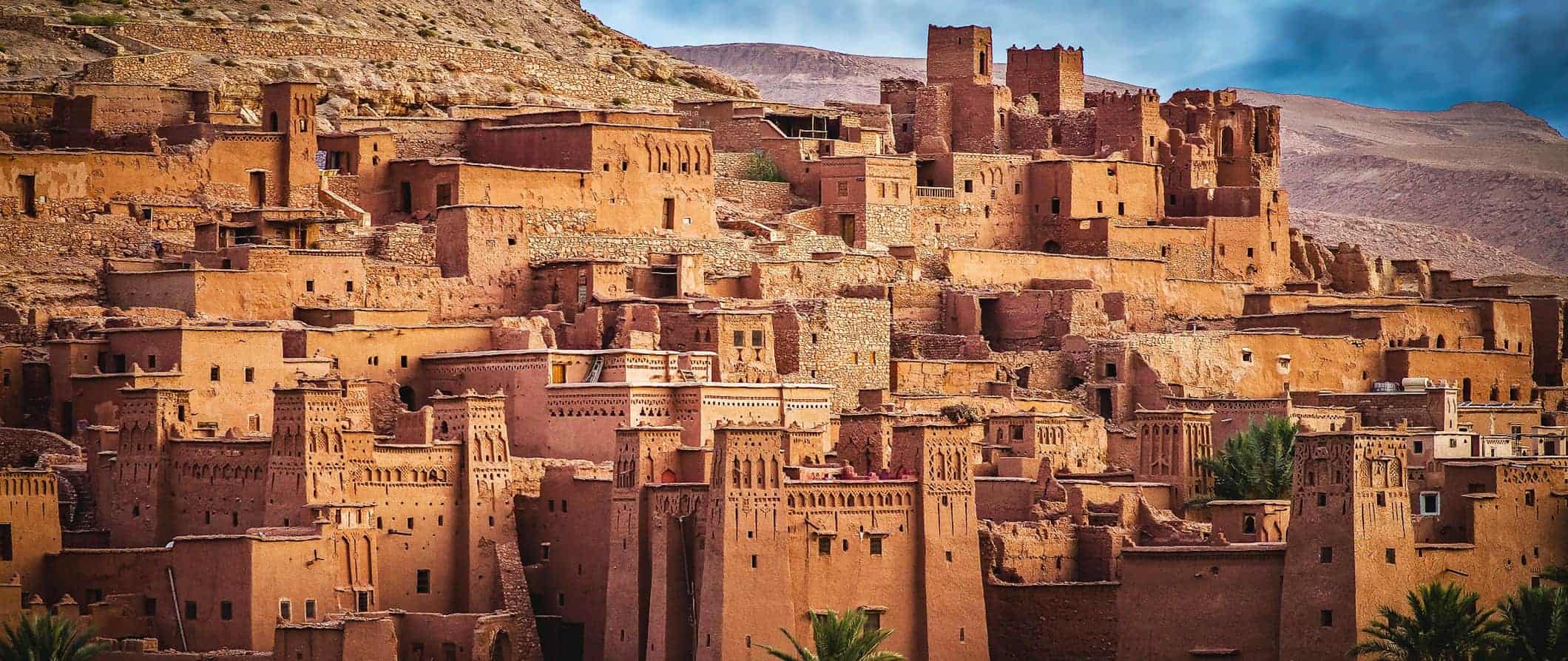
Chaotic. Colorful. Eye-opening. Visiting Morocco is an intense experience. My time there was challenging, but it was also a reminder that the best part of travel is embracing the uncomfortable.
Once part of the Carthaginian Empire, the first independent Moroccan state emerged around 225 BCE as the Berber kingdom of Mauretania. That kingdom eventually became a Roman province, though, by the 7th century CE, Muslim conquest of North Africa was in full swing. A French Protectorate from 1912-1956, Morocco gained its independence in 1956 and has been an independent state ever since.
I loved my time in Morocco. I gorged on couscous, drank my body weight in mint tea, hiked, and absorbed the hectic sights and sounds of the country.
From the high Atlas Mountains to the desert to the coasts, Morocco is a marvelous country that mesmerizes. True, the sprawling and disorderly medinas can test your patience, but they reward your senses each and every visit.
Use this Morocco travel guide to plan your trip, see the best the country has to offer, save money, and avoid the common pitfalls that waylay unsuspecting travelers!
Table of Contents
- Things to See and Do
- Typical Costs
- Suggested Budget
- Money-Saving Tips
- Where to Stay
- How to Get Around
- How to Stay Safe
- Best Places to Book Your Trip
- Related Blogs on Morocco
Click Here for City Guides
Top 5 things to see and do in morocco.
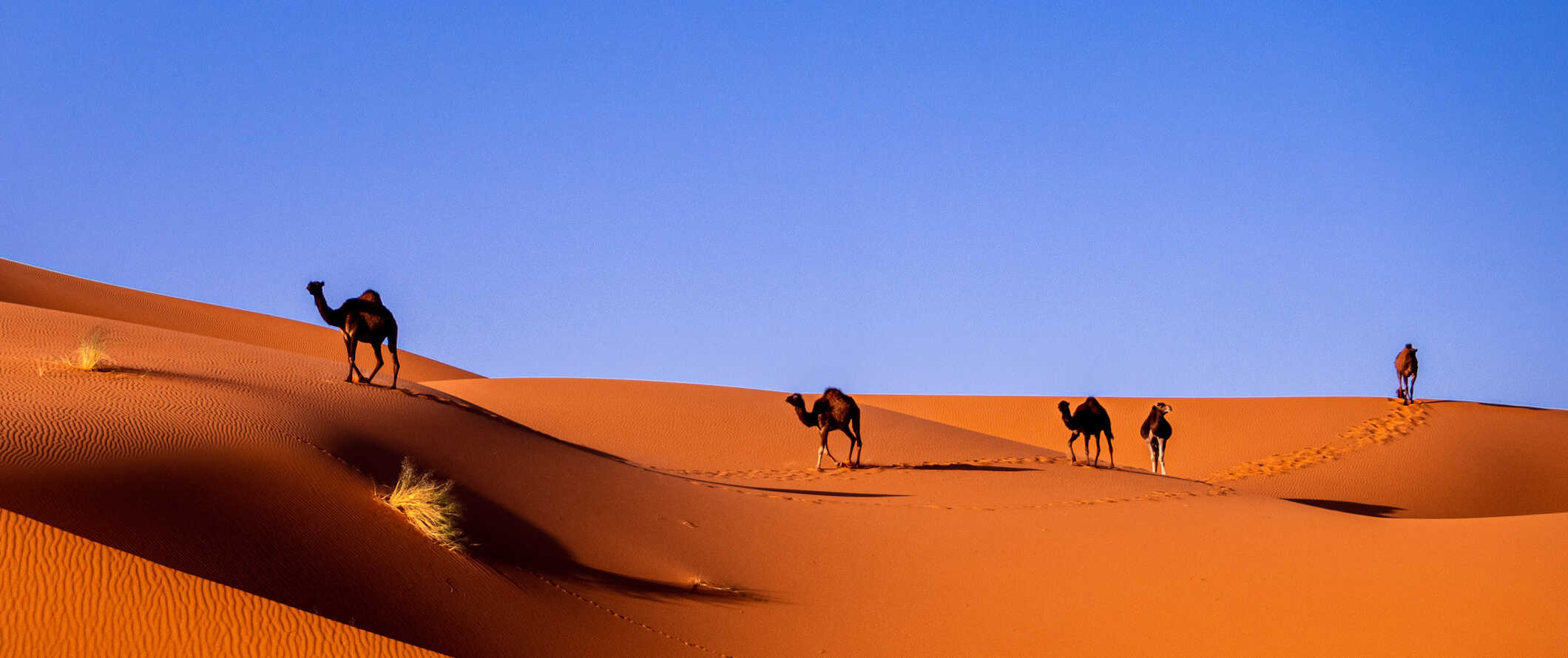
1. Explore Marrakesh
Spend some time in the Djemaa el-Fna, where you can find exotic street performers, tattoo artists, musicians, and chefs. After that, wander around the medina, explore the souks, eat in the market, see the old city, and enjoy Morocco’s most international city. Marrakesh has it all.
2. Sleep in the Sahara Desert
The Sahara is vast, empty, and spectacular. Spending the night in a simple tent on the dunes was my favorite activity while in the country and I highly recommend you try it too. The stars go on forever and there’s no light pollution to block them out. (Skip the camel ride, though!)
3. Explore the blue streets of Chefchaouen
Chefchaouen is a small city located in the middle of the Rif Mountains. It is very relaxed, offers reasonable accommodations, and is visually stunning as the streets and buildings are all painted a vibrant sky blue (you’ve probably seen it on Instagram). It’s a great place to wander, shop, and sip mint tea.
4. Visit Fez
This old and powerful city is one of the best places in the country. Its narrow streets are filled with wonderful aromas, mosques, craft shops, and crowds upon crowds of people. Though Fez can be a bit overwhelming, once you get used to the pace of the city, it’s simply magical.
5. Relax in a traditional hammam
A hammam is a steam bath popular in North Africa. They are usually found near mosques or toiletry shops and can be upscale or public (traditional). Visit a no-frills traditional bath for an authentic and enlightening experience. Public hammams cost about 10 MAD, while hotel hammams cost 300-500 MAD.
Other Things to See and Do in Morocco
1. get lost in the medinas.
The medinas are the historic hearts of each city in Morocco, part residential area, part shopping center, part food market. Shops, restaurants, markets, and homes all line the twisting and turning streets in buildings seemingly too close together and too old to stay up much longer. As someone who loves to get lost, the medinas were heaven. Word of caution: The Fez Medina is a bit unsafe, so do not go too far off the beaten path. Stick to streets with lots of people or hire a guide to show you around.
2. Trek the High Atlas
The rugged and beautiful Atlas Mountains stretch over 2,400 kilometers (1,500 miles), from the West Coast of Morocco all the way to Tunisia. This mountain range is home to Jebel Toubkal, North Africa’s tallest peak at 13,671 feet. You can hike all year round, but the best time is from April to May. The Toubkal Circuit (7 days) and M’Goun Traverse (3 days) are some of the more popular treks.
3. Trek through the Todra Gorge
Located near Tinerhir in the High Atlas Mountains, this gorge is one of the most recognized in the world and has become very popular with travelers looking to hike the canyon. It’s a challenging hike and takes around 4 hours but if you’re looking for something truly different and outdoorsy in Morocco, don’t miss out on this. For an even more unique experience, skip the day trip and stay overnight in the nearby village of Ait Baha.
4. Visit the Hassan II Mosque
The Hassan II Mosque, located in Casablanca, is a huge mosque with a minaret that stands 60 stories. It’s the second-largest mosque in Africa and the seventh-largest in the world. The walls are made of marble and the roof is retractable (the minaret also has a laser that points to Mecca at night). It took thousands of Moroccan artists a total of five years to build this detailed architectural masterpiece. Its mosaics, plaster moldings, marble and stone columns and floors, and wood ceilings are utterly impressive. It is big enough for 105,000 worshipers! Combined entry to the mosque and museum is 140 MAD.
5. Learn to cook traditional Moroccan food
Traditional Moroccan food is a blend of Berber, Arabic, Turkish, Middle Eastern, and French cuisine. Many hotels and guesthouses offer cooking classes in the big cities like Marrakesh and Fez. You can buy fresh produce from the local market and then make a traditional dish. Café Clock offers some of the best classes. With locations in Marrakesh, Chefchaouen, and Fez, this Western-influenced café is famous for its gigantic and delicious camel burger (which tastes a lot like spicy shawarma).
6. Wander thru Kasbah les Oudaias
Located in Rabat, this 12th-century Kasbah is found in the oldest part of the city. The citadel, with its narrow streets of white houses, and a great place to wander around and take some pictures. Its elevation offers beautiful views of the river and ocean.
7. Go surfing
Morocco is extremely popular among surfers. The best time to go is during the winter months when the waves are bigger and more consistent, and the air and water temperature is mild. Head to Taghazout, the most popular surf town, to catch some of the best surf in the country. A week-long stay at a surf camp, including lessons, equipment, accommodation, and airport transfer costs around 5,000 MAD.
8. Visit Tangier
This major city in northern Morocco is located on the North African coast at the western entrance to the Strait of Gibraltar. The city’s location means that many civilizations and cultures have left their mark on Tangiers since at least the 10th century BCE. From 1924-1956, Tangier was an international zone separate from Morocco, and thus became a destination for many European and American diplomats, businessmen, writers, and spies during this time. Don’t miss the Grand Mosque, the Kasbah, and strolling down the beach promenade.
9. See Atlas Studios
Named for its proximity to the Atlas Mountains, Atlas Film Studios in the city of Ouarzazate is the largest film studio in the world, covering more than 322,000 sq ft of the desert. Many big films have been shot here including: Lawrence of Arabia (1962), The Last Temptation of Christ (1988), The Mummy (1999), Gladiator (2000), Kingdom of Heaven (2005), Hanna (2011), and part of the TV series Game of Thrones . Be sure to visit the nearby Ksar of Aït Benhaddou kasbah too! It plays into what people think a ksar (fortified village) should look like. I enjoyed roaming the streets and climbing to the top for the view.
10. See the Ancient City of Volubilis
A major trading center and the southernmost settlement during Roman times, Volubilis is one of the best-preserved (and least frequented) such ruins in the world. It originally dates to the 3rd century BCE and became the capital of the ancient kingdom of Mauretania, growing even more during Roman rule. I found it empty of tourists, not built up, and open in a way that lets you see the structures up close without being behind ten feet of barriers and jostled by crowds. Most of the city is still unexcavated so the site has a very “Indiana Jones” feel to it. I’ve been to a lot of Roman ruins in my travels, but this one is my favorite. Admission is 70 MAD.
11. Enjoy the Meknes Medina
Pleasantly stroll the Medina in Meknes without being pestered. Located in Central Morocco, this authentic market sells handicrafts made in Meknes such as embroidery and Meknes “Damascene” ironwork. If the Medinas of Fez and Marrakesh overwhelm you, this is the place to go.
12. Explore Essaouira
Essaouira is located a few hours from Marrakesh on the Atlantic coast and is a popular beach destination for tourists, especially Brits. I loved the relaxed atmosphere of the city, the lack of pushy touts, the sea air, and all the fresh fish. Be sure to visit the wonderful fish market in town, where all the small fishermen sell their day’s catch. Afterward, check out the small fish stalls nearby in the main square where you can enjoy fresh, grilled seafood for cheap.
For more information on specific destinations in Morocco, check out these guides:
- Fez Travel Guide
- Marrakesh Travel Guide
Morocco Travel Costs
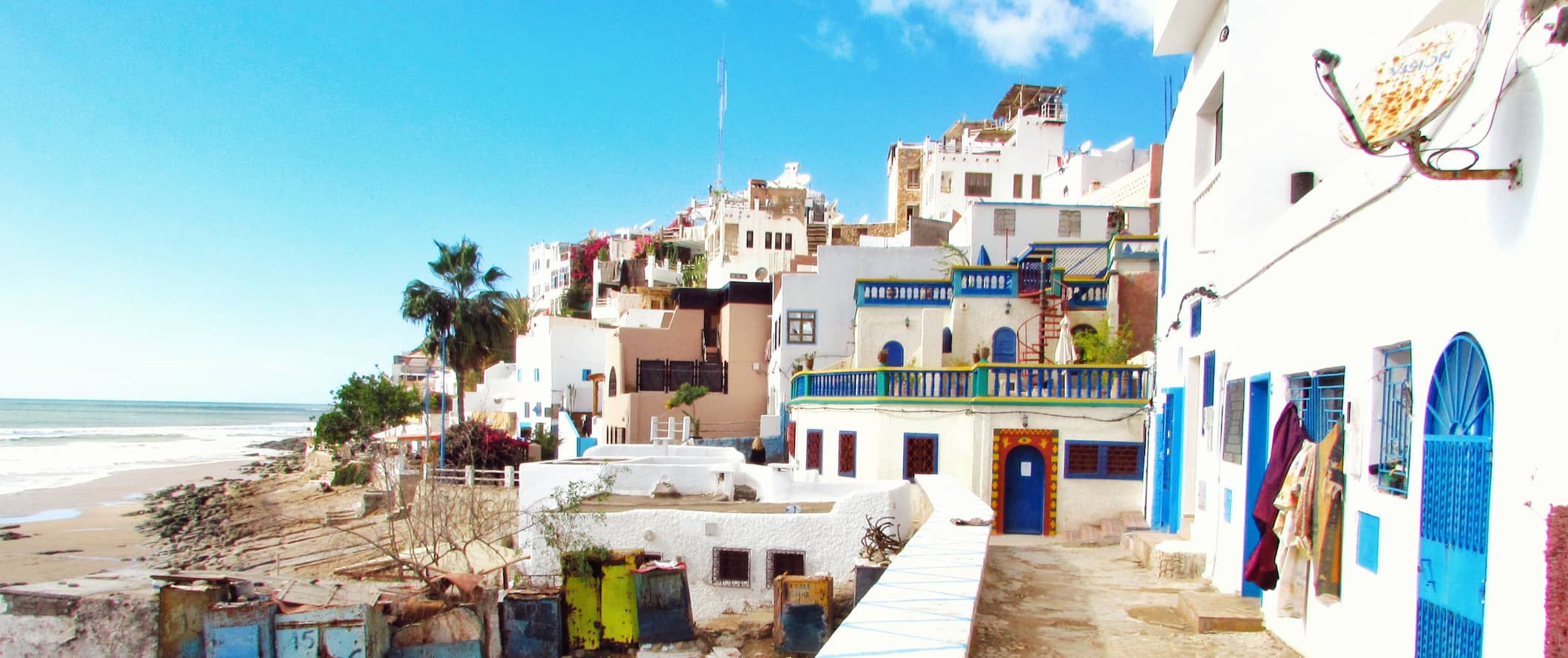
Accommodation – Dorm rooms with 6-8 beds cost between 80-110 MAD per night in the big cities like Marrakesh and Fez, and about 50-60 MAD in smaller places. Private rooms in hostels cost around 260-380 MAD. Free Wi-Fi is standard and many hostels also include free breakfast.
Budget hotels in Marrakesh and Fez cost around 270-410 MAD per night for a double room. Expect basic amenities like free Wi-Fi, TV, free breakfast, and sometimes even an outdoor pool.
Wild camping is legal in Morocco for those traveling with a tent. Locals usually don’t like people camping on or near their property, however, so only take advantage of this if you’re not going to disturb anyone. Don’t be surprised if nomads or police stop by to check on you.
Food – Moroccan cuisine is a colorful, flavorful mix of Berber, Andalusian, and Mediterranean traditions with a pinch of French and sub-Saharan cuisine to round things out. It is a land of spices, so expect flavorful meals at every turn (the traditional ras el hanout spice mix is composed of 27 different spices). Beef, goat, and lamb are some of the most common meats, usually eaten with couscous. Fish like mackerel and anchovy are also quite common, owing to the country’s location on the coast. Be sure to try pastilla , a pastry filled with meat or seafood.
Eating in Morocco can be extremely cheap, especially if you eat at the many markets. A pot of mint tea costs between 8-10 MAD. Indulge in local food, including the popular tagine , a meat and vegetables dish for about 35-55 MAD. Sandwiches, pizza, and most other dishes range between 30-50 MAD.
A fish dish in coastal cities like Essaouira costs about 100-150 MAD while a lobster is about 350-400 MAD. Seafood dinners come with drinks, salad, and bread.
For more touristy or Western restaurants, expect to spend at least 150 MAD or more per main dish.
Beer and wine cost around 70 MAD for a drink (however, there aren’t that many opportunities to drink in Morocco, so I wouldn’t factor it much into your budget).
There’s no need to buy groceries here as the food is cheap and it’s far easier to eat out! But if you do, expect to pay 200 MAD per week for groceries that include pasta, vegetables, chicken, and other basic staples.
Backpacking Morocco Suggested Budgets
On a backpacker’s budget expect to spend around 285 MAD per day. This assumes you’re staying in a hostel, eating at market stalls and cooking some meals, limiting your drinking (which is very easy to do here), using local transportation to get around, and sticking to free and cheap activities like free walking tours and public hammam visits.
On a mid-range budget of 525 MAD per day, you can stay in a private Airbnb, eat out for all your meals, take the train between cities, and do more paid tours and activities like museum visits and camping in the Sahara.
On a “luxury” budget of 1,120 MAD or more per day, you can stay in a hotel, eat out anywhere you want, enjoy a few drinks, fly between cities or hire a driver, and do whatever tours and activities you want. This is just the ground floor for luxury though. The sky is the limit!
You can use the chart below to get some idea of how much you need to budget daily, depending on your travel style. Keep in mind these are daily averages — some days you’ll spend more, some days you’ll spend less (you might spend less every day). We just want to give you a general idea of how to make your budget. Prices are in MAD.
Morocco Travel Guide: Money-Saving Tips
It doesn’t cost a lot of money to travel Morocco — though it’s also easy to splash out here if you want. Here are my tips for saving money in Morocco:
- Eat from street stalls – It’s extremely easy to eat cheaply in Morocco. While restaurant meals typically cost as little as 30 MAD, street food is even cheaper. For just a few dollars, you can indulge in delicious kebabs, sausages, barbecued corn on the cob, roasted chicken, huge sandwiches, and more. Stick to eating at the local markets in the medina to spend very little money on food.
- Negotiate your cab fare – Be sure to negotiate a price before you get into the taxi. There aren’t set prices and you need to bargain hard. Ask your hotel/hostel staff for price estimates so you don’t get ripped off.
- Avoid faux guides – Faux guides (or false guides) linger in the medinas and offer you tour services. Be forceful in saying no while walking away. They are persistent but eventually give up if you keep walking.
- Be careful of thieves – Petty theft, mostly involving wallets, watches, and cameras, is prevalent in the crowded medinas around the country. Stay alert and keep your valuables out of sight.
- Avoid drinking – Even though drinking is frowned upon in the country, you can still find plenty of places that allow you to drink. They are overpriced (since alcohol is not common here) and the drinks aren’t that good. Avoid drinking during your visit, save money, and align yourself closer to local norms.
- Stay with a local – If you want to save money and get some local insight into the city, use Couchsurfing. Staying with a local is the best way to get a feel for the country and learn some insider tips in the process.
- Bring a water bottle – The tap water here is generally safe to drink but you should bring a reusable water bottle with a filter just in case. LifeStraw is my go-to brand as their bottles have built-in filters to ensure your water is always clean and safe.
Where to Stay in Morocco
Looking for a place to rest your head in Morocco? Here are some of my favorite places to stay in Morocco for your next visit:
- Riad Dia (Marrakesh)
- Riad Jennah Rouge (Marrakesh)
- Kasbah Red Castle Hostel (Marrakesh)
- Funky Fes (Fez)
- Aline Hostel (Chefchaouen)
- The Chill Art (Essaouira)
- Atlantic Hostel (Essaouira)
- Baytalice (Tangiers)
How to Get Around Morocco
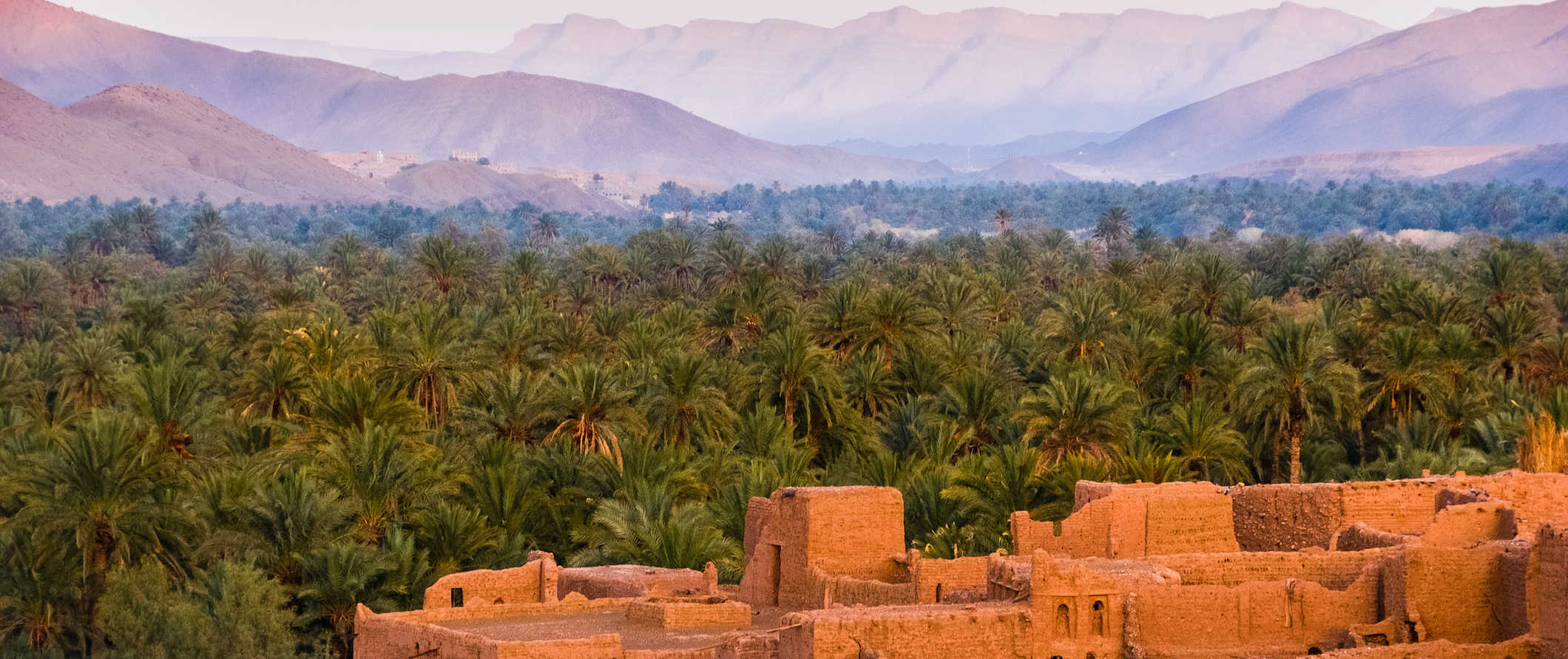
Public transportation – Public transportation can be hit or miss in Morocco. The bigger cities, like Marrakesh and Casablanca, have public bus services, but the buses are old and overcrowded and the routes are hard to figure out.
Instead, most people use petits taxis to get around town. These are small vehicles that can hold up to three people and are prevalent all over the country. They’re very cheap, although there may be a surcharge after 8pm. To ensure you get a fair fare, negotiate your price upfront.
Metered taxis are also available in bigger cities like Marrakesh. Fares start around 7 MAD and then they charge 4 MAD per kilometer.
Grand taxis – Grand taxis are shared taxis that can carry up to six passengers and are used to go longer distances between neighboring towns/cities. They won’t leave until the taxi is full but generally wait times aren’t so bad. You can locate one near just about any taxi stand or bus/train station. If you have a lot of luggage, you may have to pay extra. You should arrange your fare ahead of time.
Bus – Intercity buses are a cheap and efficient way to get around Morocco, especially compared to other methods of transportation. The four most popular operators are:
- SATAS (regional)
- Ghazala (regional)
CTM and Supratours are the most reliable and have comfortable buses with air conditioning. You can book your tickets online or simply show up at the bus station. The websites aren’t terribly reliable or efficient to use. A 4-hour bus ride from Marrakesh to Casablanca is about 75-110 MAD, while a 6.5-hour ride from Marrakesh to Tangier is 260-275 MAD. Casablanca to Fez is 95-120 MAD.
Train – Morocco’s national rail network is operated by ONCF and services some of the country’s major cities like Marrakesh, Casablanca, Rabat, Meknes, and Fez. The trains are comfortable and they’re usually on time, but disruptions do occasionally happen. There is now a high-speed rail running between Casablanca to Fez too. You can look up schedules and prices on ONCF .
The 2.5-hour train trip from Marrakesh to Casablanca costs about 50 MAD, while the 4.5-hour journey from Marrakesh to Rabat starts around 150-180 MAD. Traveling from Casablanca to Fez takes 4 hours and is 50-120 MAD. The journey from Fez to Marrakesh takes 6.5 hours and costs 195 MAD.
Flying – Royal Air Maroc is the main domestic airline, and they sometimes have good sales. An hour flight from Marrakesh to Casablanca starts at around 870 MAD, while a one-hour flight from Marrakesh to Fez starts at 520 MAD.
Car rental – Car rental isn’t typically recommended in Morocco. Drivers are aggressive and accident rates are high! But if you want to venture off the beaten path, it’s a good way to go. You can find rentals starting from 200 MAD per day (sometimes cheaper).
When to Go to Morocco
The best time to visit Morocco is during the country’s shoulder seasons, which run from April to May and September to November. The temperatures are nice and warm during this time and there is less tourist traffic. (However, this changes if you plan on spending most of your time surfing the coast or hiking the Atlas Mountains.)
Summer lasts from June to August, and it can be ridiculously hot all over the country during this time — especially the further south you go (including in Marrakesh and Fez). A lot of people head to the coast to enjoy places like Tangier, Rabat, and Essaouira. Expect highs above 35°C (95°F).
Winters (December-February) are mild, but it can get quite cold in the evenings. Temperatures drop as low as -3°C (27°F) in Marrakesh and the Atlas Mountains receive heavy snowfall. Winters in the north and along the coast are very wet. Overall, it’s not a great time to be here.
The best time to go hiking in the Atlas Mountains is from April to May (spring) and September to October (fall). It’s mild during these months and there’s little risk of severe weather. Summer is the best time to enjoy the coast, where temperatures go as high as 27°C (80°F) but the ocean breeze offers plenty of relief.
How to Stay Safe in Morocco
Overall, Morocco is a safe destination but traveling here requires vigilance. You’re unlikely to ever be in any real physical danger in Morocco, but the petty crime and harassment require you to stay on guard — more so than in other countries.
Women traveling alone attract a lot of attention here and the chances of being followed and possibly groped are high. This is a particular problem in crowded medinas. Always be watchful and trust your gut. Do not bring valuables with you and keep your belongings tight to your body. Dress conservatively and avoid wearing a lot of jewelry.
Walking alone at night is generally not a good idea in the cities. If you’re unsure about an area, ask the hotel staff which areas are safe. If you need a taxi, always arrange the price in advance to avoid getting ripped off.
When out and about, locals might invite you into their shops or offer to guide you around. Always politely but firmly decline otherwise you might end up getting ripped off.
If you’re worried about getting scammed, you can read about common travel scams to avoid here.
If you experience an emergency, dial 19 for assistance (112 for mobile phones).
Always trust your gut instinct. If a taxi driver seems shady, stop the cab and get out. If your hotel is seedier than you thought, get out of there. Make copies of your personal documents, including your passport and ID. Forward your itinerary along to loved ones so they know where you are.
For more in-depth coverage of how to stay safe in Morocco, check out this post that answers frequently asked questions and concerns.
The most important piece of advice I can offer is to purchase good travel insurance. Travel insurance will protect you against illness, injury, theft, and cancellations. It’s comprehensive protection in case anything goes wrong. I never go on a trip without it as I’ve had to use it many times in the past. You can use the widget below to find the policy right for you:
Morocco Travel Guide: The Best Booking Resources
These are my favorite companies to use when I travel. They consistently have the best deals, offer world-class customer service and great value, and overall, are better than their competitors. They are the companies I use the most and are always the starting point in my search for travel deals.
- Skyscanner – Skyscanner is my favorite flight search engine. They search small websites and budget airlines that larger search sites tend to miss. They are hands down the number one place to start.
- Hostelworld – This is the best hostel accommodation site out there with the largest inventory, best search interface, and widest availability.
- Booking.com – The best all around booking site that constantly provides the cheapest and lowest rates. They have the widest selection of budget accommodation. In all my tests, they’ve always had the cheapest rates out of all the booking websites.
- Get Your Guide – Get Your Guide is a huge online marketplace for tours and excursions. They have tons of tour options available in cities all around the world, including everything from cooking classes, walking tours, street art lessons, and more!
- SafetyWing – Safety Wing offers convenient and affordable plans tailored to digital nomads and long-term travelers. They have cheap monthly plans, great customer service, and an easy-to-use claims process that makes it perfect for those on the road.
- LifeStraw – My go-to company for reusable water bottles with built-in filters so you can ensure your drinking water is always clean and safe.
- Unbound Merino – They make lightweight, durable, easy-to-clean travel clothing.
- Top Travel Credit Cards – Points are the best way to cut down travel expenses. Here’s my favorite point earning credit cards so you can get free travel!
Morocco Travel Guide: Related Articles
Want more info? Check out all the articles I’ve written on backpacking/traveling Morocco and continue planning your trip:
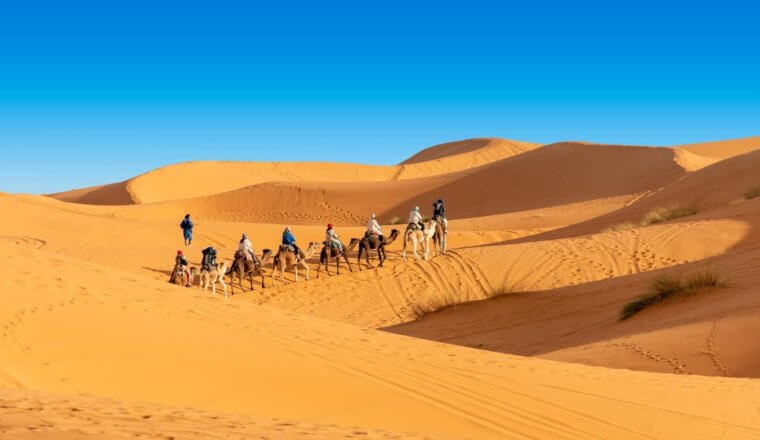
The Best Tour Companies in Morocco
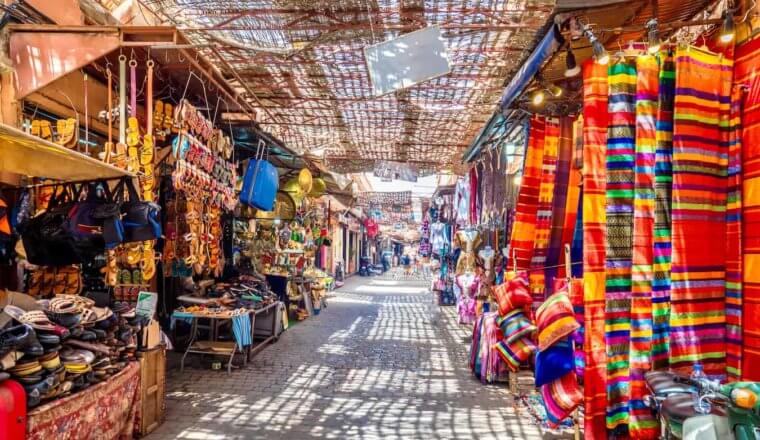
Is Morocco Safe? 11 Ways to Stay Safe During Your Visit
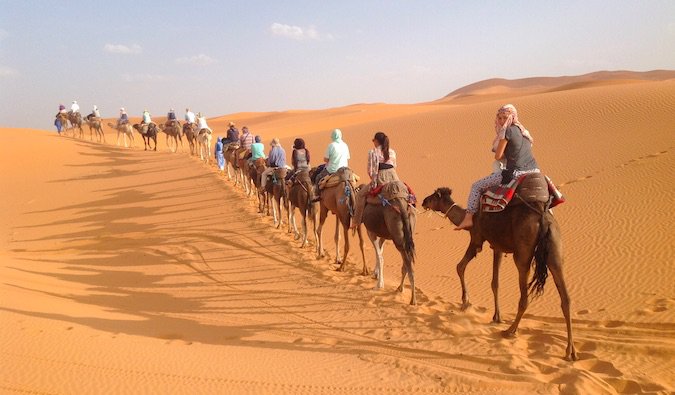
A Journey of 1,000 Mint Teas: Reflections on Traveling Morocco
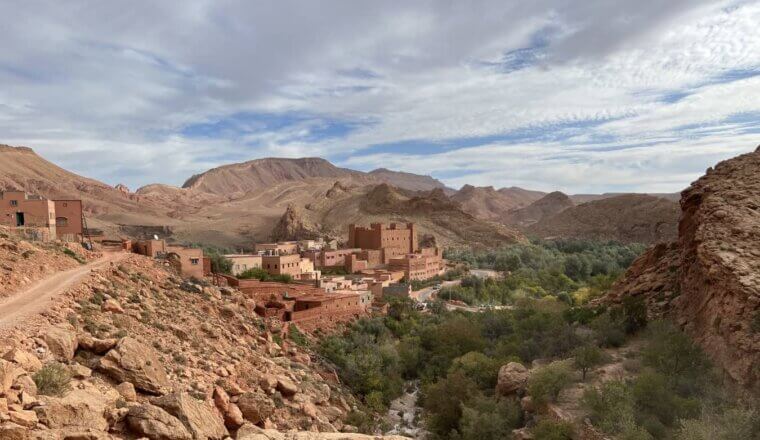
11 Reasons Why I Fell in Love With Morocco
Get my best stuff sent straight to you, pin it on pinterest.
- Where To Stay
- Transportation
- Booking Resources
- Related Blogs
18 things to know before traveling to Morocco

Oct 15, 2023 • 7 min read
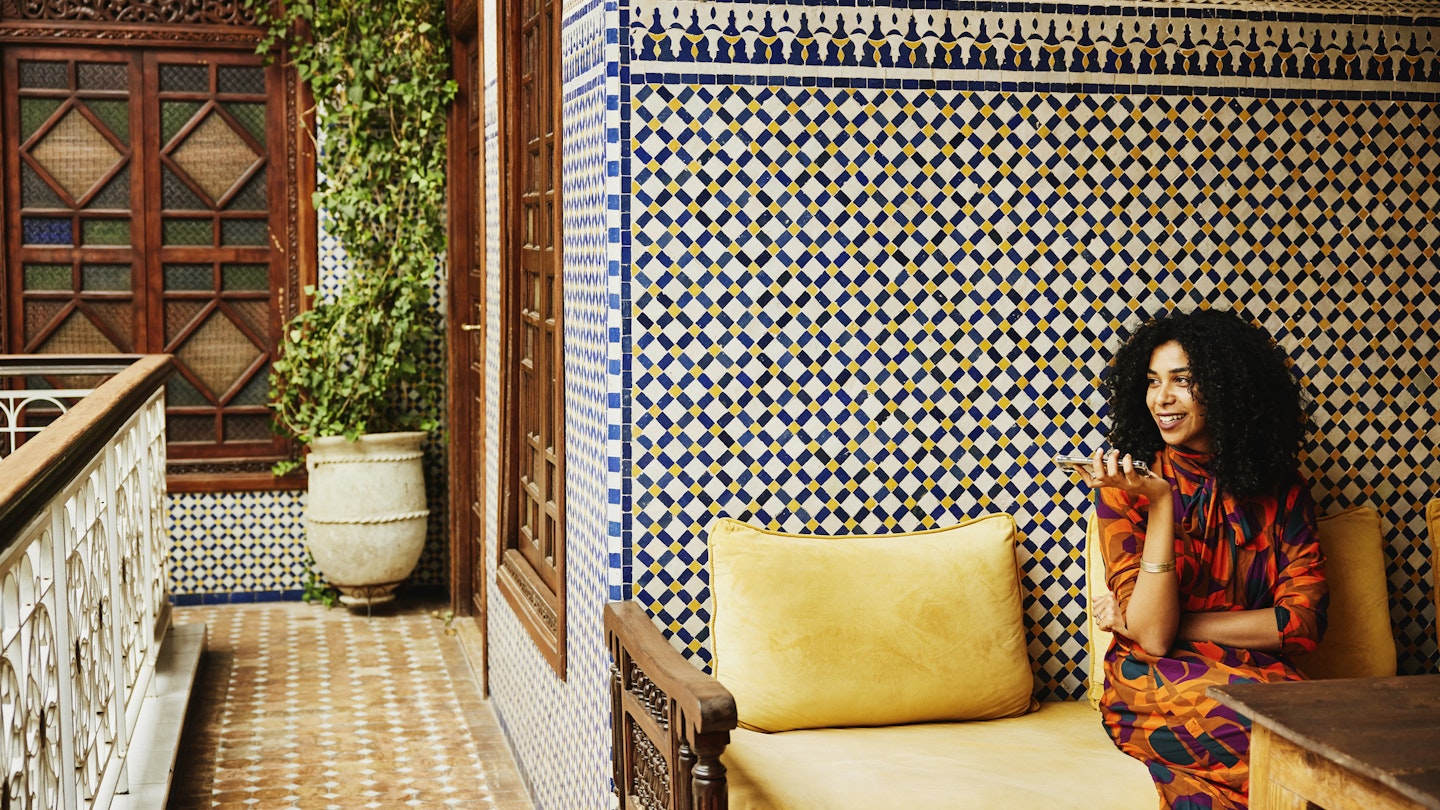
It helps to learn a little lingo: here's what to know before your trip to Morocco © Thomas Barwick / Getty Images
I am originally from the UK and have been living in Morocco since 2018. There are things I wish I'd known before jumping headfirst into the seemingly lawless world of Moroccan taxis and bargaining in the souqs.
Morocco reveals the full spectrum of real life: the good, the bad, the ugly and the oh-so beautiful. For some visitors, Morocco can be a huge culture shock. But with some awareness and understanding, it is possible to appreciate these differences, connect more deeply and see the country through a different lens without trying to change it.
1. Plan your itinerary loosely and allow for changes
Research the places in Morocco you’d like to visit but leave wiggle room for changes along the way and enjoy the spontaneity that Morocco allows. While it’s possible to pre-book tours and activities, it’s usually just as easy to reserve them when you arrive in the country.
2. Take public transport, especially in cities
Driving in cities such as Casablanca and Marrakesh is best left to the locals. Getting around Morocco is easy, even without a car. An excellent train network links many cities, including Africa’s first high-speed train, Al Boraq , between Casablanca and Tangier . A comfortable and reliable bus network connects towns big and small. Book train and bus tickets a day or two in advance to ensure the travel time you'd like.
3. Book professional guides
To get the most out of your trip to Morocco, use a guide who has in-depth expertise and speaks your language. In cities, check with the local tourism office or your accommodations for recommendations for licensed guides in the area. If you’re surfing, check ISA’s directory of certified instructors .
Hiking guides are mandatory for climbing Mt Toubkal in the High Atlas. Check with Bureau des Guides .
4. Understand the written and unwritten rules of the road
In Morocco, you drive on the right side of the road and seatbelts are mandatory, even though some taxis don't have them. Car horns are used often - not in an aggressive way, but as a means of communication.
Watch out for people, bicycles, motorcycles and animals coming from all sides. Avoid driving at night because some vehicles do not have or use their lights. Take notice of the speed limits and the roundabouts that have stoplight systems. If you’re stopped for speeding – police speed checks are common – or other penalties, having cash on you to pay fines (usually between Dh150 ($15US) and Dh300) is preferable to going to a local police station.

5. Practice the art of haggling
Haggling is a game and part of the shopping experience in Morocco . Try not to get frustrated – the ideal scenario is that both sides come away feeling like they got a fair price.
For big purchases, do your research, have a price in mind or shop around until you do. Sometimes vendors say to pay what you feel like, so if you don't have a price, ask some questions: how many hours did it take to make? Where did the materials come from and at what price?
The souqs are filled with fake tennis shoes, which are just that: fakes. Many Moroccans don't care whether their Nikes are original; they just want the best price for the latest styles.
6. Cash or card?
The Moroccan dirham is a closed currency, which means you cannot use or get it outside the country. Morocco’s rural areas still operate on a cash economy, but cards are widely accepted in towns and cities.
7. Learn some of the lingo
A mixture of French, Arabic, Amazigh and English is spoken in Morocco, depending on where you are in the country. Don't expect everyone to speak English. Apps like Google Translate can be useful, but learning some basic Arabic phrases will reward you with feeling more connected and engaged with people you meet.
8. Respect the motto of ‘God, king and country’
These words are etched on hills around the country. Islam is the state religion, and the rules of Islam are applied to personal matters in the same way that state law works in other countries. It is illegal to speak disrespectfully about religion or the king. Non-Muslims are not permitted to enter mosques or cemeteries, except the Hassan II Mosque in Casablanca . Friday is a holy day across the country, and most people take a few hours off in the afternoon to go to the mosque and eat couscous with their families afterward. Check business opening times before you visit if you're heading to a particular place on a Friday.
The holy month of Ramadan and the celebrations of Eid offer a different cultural experience, and during these times many places will be closed.
9. Things to know before going to Marrakesh
Marrakesh is the most popular city in Morocco for visitors, so pre-book entrance tickets to major attractions such as Jardin Majorelle and Musée Yves Saint Laurent online to avoid waiting in line. The Marrakesh medina comes to life around 5 p.m., but the 'pink city' is more than just the medina – spend time exploring Gueliz and step off the main boulevards onto the leafy side streets to discover pretty street cafes, bistro restaurants and small indie boutiques.

10. The dress code depends on where you are
To visit the Hassan II Mosque and other religious sites, visitors – both men and women – must cover to their shoulders and knees. Dress modestly in cities and towns to avoid unwanted attention. At bars and nightclubs, almost anything goes, but in rural areas, cover up and be respectful of the local customs.
At the beach, you can wear shorts, dresses, vest tops and swimwear including bikinis. Pack comfortable footwear that’s suitable for uneven roads and a scarf to cover your shoulders.
11. Ask before taking photos of people
No matter where you are in the world, it’s best to ask permission before taking someone’s photo. Many people are fine with it, but others aren’t. Some may ask for money. Do not take photos of military or government buildings. Drones are not allowed in Morocco without special permission.
12. Learn how to deal with the hassle
Simply ignore people who offer goods that you do not want. There's no need to be polite to everyone who wants to sell you something. By not reacting, they'll get bored and walk away.
In some places you may receive comments and, at worst, inappropriate behavior, but shouting ‘Police!’ will send these people away. In Marrakesh, there's also a high chance you will alert the undercover tourist police.

13. Can you drink alcohol in Morocco?
Even though alcohol is forbidden by Islamic law, it is widely available and sold in licensed wine shops and international grocery stores. Not all bars and restaurants serve alcohol.
14. Eat with your right hand
Moroccan cuisine such as tagines and grilled fish are traditionally eaten with bread using your right hand. The left hand is considered unclean because it’s typically the hand used when going to the toilet.
15. It’s okay to get lost
Getting lost is part of the joy of exploring Morocco with its unmarked roads, the maze of souq alleys and areas of no cell phone reception. Relax but be aware of your surroundings and ask for help if you need it.
In medinas, it’s helpful to know that if the street sign is a hexagon, it's a dead end. If it’s a square, it’s a through street.
16. Don’t drink the tap water
Morocco’s tap water is not safe to drink. Bring a water bottle with a filter to avoid buying plastic.
17. Bring tissues for public toilets
Some public toilets do not have toilet paper. Unless you are comfortable using water to clean yourself, keep a pack of tissues and some anti-bacterial hand gel or wipes on you.
18. Street cats and dogs are everywhere and part of the community
It’s best not to feed street animals from your table because they might not leave, but you can keep leftovers and feed them elsewhere on the street.
See whether a rescue center is set up in the communities you’re visiting and show your support with donations or by volunteering your time.
Explore related stories
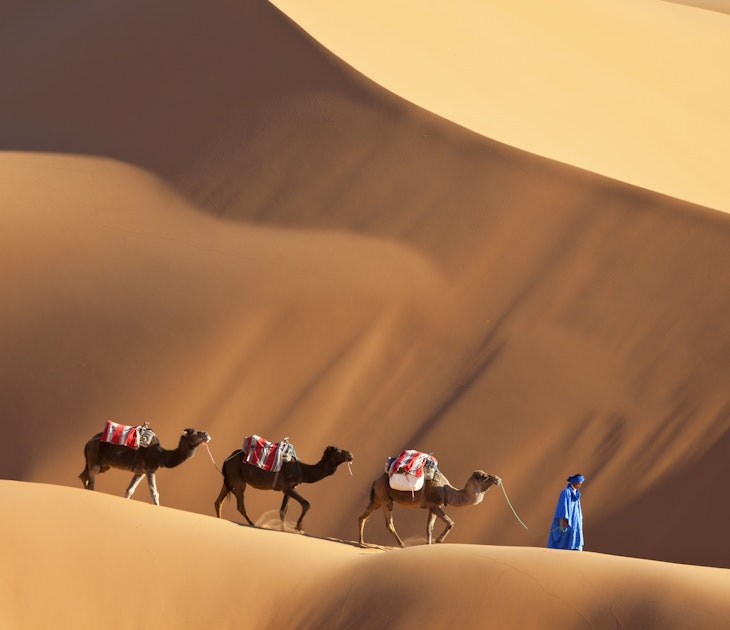
Festivals & Events
Mar 11, 2024 • 5 min read
Morocco is a fantastic year-round vacation destination, but the best time of year to travel will depend on your interests and holiday needs.

Feb 7, 2024 • 5 min read
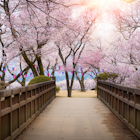
Jan 31, 2024 • 6 min read

Jan 27, 2024 • 15 min read

Jan 17, 2024 • 8 min read
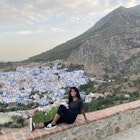
Jan 17, 2024 • 6 min read
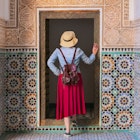
Nov 29, 2023 • 6 min read
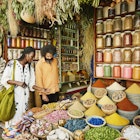
Nov 24, 2023 • 8 min read
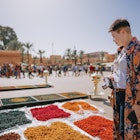
Nov 20, 2023 • 5 min read

Oct 11, 2023 • 7 min read

The 15 BEST Places to Visit in Morocco (2024 Edition)
- Last Updated: February 5, 2024
Planning a trip to North Africa? Don’t miss our complete list of the best places to visit in Morocco!
Some of the best Morocco destinations are already world-famous, though you may not realise.
Morocco is full of rich history, intense culture, breathtaking natural beauty and endless opportunities for travellers to excite the senses.
Walking through any Moroccan destination, you can smell fresh mint leaves, incense, perfume, leather and smoky coals sizzling underneath a roasting tagine.
You can hear locals speaking Arabic and French, sometimes Spanish in the north. Sultry Arabic music floats from shops and the daily “Call to Prayer” bellows from Mosque speakers five times a day.
You can feel the heat of northern Africa warming your skin while your feet trod along stone alleyways, or along sandy coastlines.
Your line of vision is full of colourful traditional clothing, patterned pottery and ceramics, towering piles of spices, bustling fruit markets and streets congested with cars, motorbikes and donkeys.
Travelling through the country you’ll stumble across gorgeous beaches, rugged mountain ranges, golden desert sands, winding roads, farming villages, waterfalls, forests, Mosques, museums, ancient Roman ruins, tanneries, Medinas and so much more.
With such diversity, it can be overwhelming trying to plan a trip to visit Morocco.
The country is full of famous tourist attractions and hidden gems, but luckily there is something for everyone.
Table of Contents
1) Marrakech
5) casablanca, 7) chefchaouen, 8) al hoceima, 11) essaouira, 12) the atlas mountains, 13. ouarzazate, 14) sahara desert, 15) ouzoud waterfalls, the best places to visit in morocco.
This article lists some of the most iconic and must-see places to see in Morocco.
The destinations are organised into three categories: cities, beach towns, and places of natural beauty.
Hopefully, this list will help you pick the best places to visit in Morocco that suit your travel style, and will persuade you to book a trip to visit Morocco.
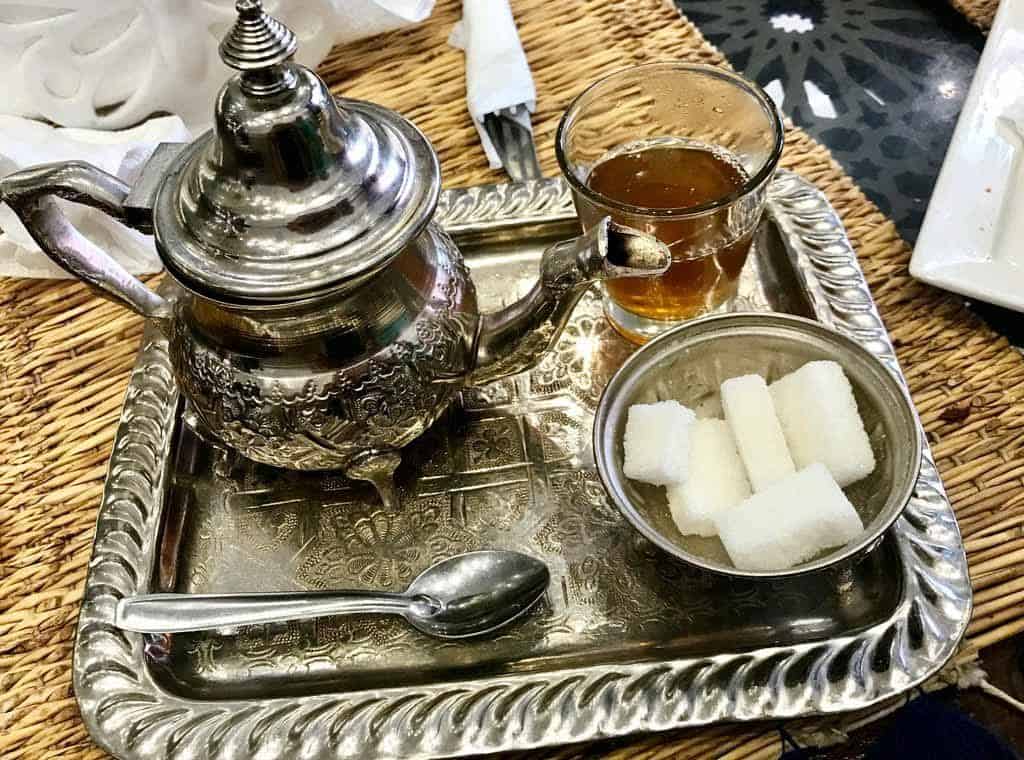
The most visited city in Morocco, Marrakech is a bustling hub of travellers and locals alike.
It showcases traditional Moroccan culture in an accessible way for tourists, with a sprawling Medina selling handicrafts and souvenirs and the Instagram-famous Jardin Majorelle boasting gorgeous architecture and landscaping.
Jema El Fnaa is the main square of Marrakech, though I believe the true charm of the city lies outside this area.
Jema El Fnaa is insanely touristy and locals here exploit animals for tourist photos.
Try to avoid this mess and venture to other areas of Marrakech for a better experience.
Visit Saadien’s Tombs for 70 Dirhams and marvel at the intricate artwork and design that adorns the tombs of the Moroccan Saadien Dynasty from the 16th and 17th centuries.
Afterward, stroll through the local street market on Derb Demnat Street and indulge in fresh dates, cactus fruits and juicy peaches.
Sip mint tea in a cafe, browse through unique natural remedies in a herbal medicine shop, and enjoy the artwork in the Museum of Photography .
Marrakech is the perfect gateway into Moroccan culture so it’s a great first stop for travellers.
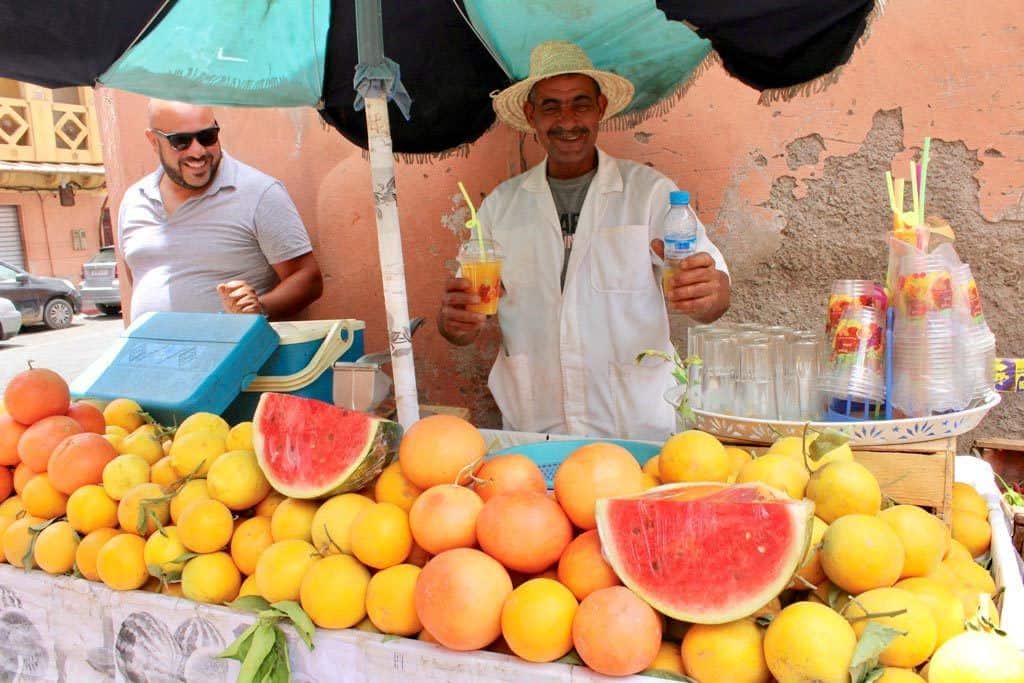
Morocco’s capital city is packed with attractions and historical monuments making it one of the best places to visit in Morocco.
Visit the Modern Art Museum and National Archaeological Museum for an enlightening insight into Moroccan culture and art.
Or tour the Royal Palace and see where Moroccan royalty lives.
Other impressive architectural structures include the Kasbah of the Udayas, the Mausoleum of Mohammed V and its neighbour, the Hassan Tower , which was meant to be the largest minaret in the world but to this day remain unfinished.
All three of these are located along the Bou Regreg River that snakes through the city.
After immersing yourself in the history of Rabat, head just south of the city to lounge on Temara Beach or Skirat Beach .
Temara is closer to the city and a bit more accessible.
But Skirat is known as being one of Morocco’s most beautiful and well-maintained beaches.
Known as the cultural capital of Morocco, Fez is famous for its historical significance and its well-preserved traditional culture.
Tourism is on the rise as Fez becomes more well-known.
There are plenty of backpacker hostels, nice hotels, and fancy Riads to suit every traveller.
However, Fez still feels very authentic and travellers may experience a bit of culture shock here.
Fez’s Medina is the oldest in the world and is said to have over 9,000 streets.
Prepare to get lost in the Medina because it is inevitable. But the sensory overload and cultural insight you’ll find in this maze of streets are well worth the chaos.
Having an offline navigation app like Maps.Me can very extremely helpful to help you find your way out of the Medina.
While gallivanting through the Medina, stop at the Chouara Tannery , the largest tannery in the world.
Here you can watch locals make leather using traditional methods.
Someone will usually hand you a mint sprig as you walk in so you can hold it under your nose and block out some of the strong, pungent aromas of the tannery.
Venture outside the Medina to see the more modern size of Fez.
Bab Bou Jeloud , or the “Blue Gate,” and the Royal Palace are two very beautiful and well-maintained sights to see in Fez.
Just have an open mind when travelling through Fez and appreciate the authenticity of the city.
Take a guided tour of the Fez Medina by booking this tour on Get Your Guide !
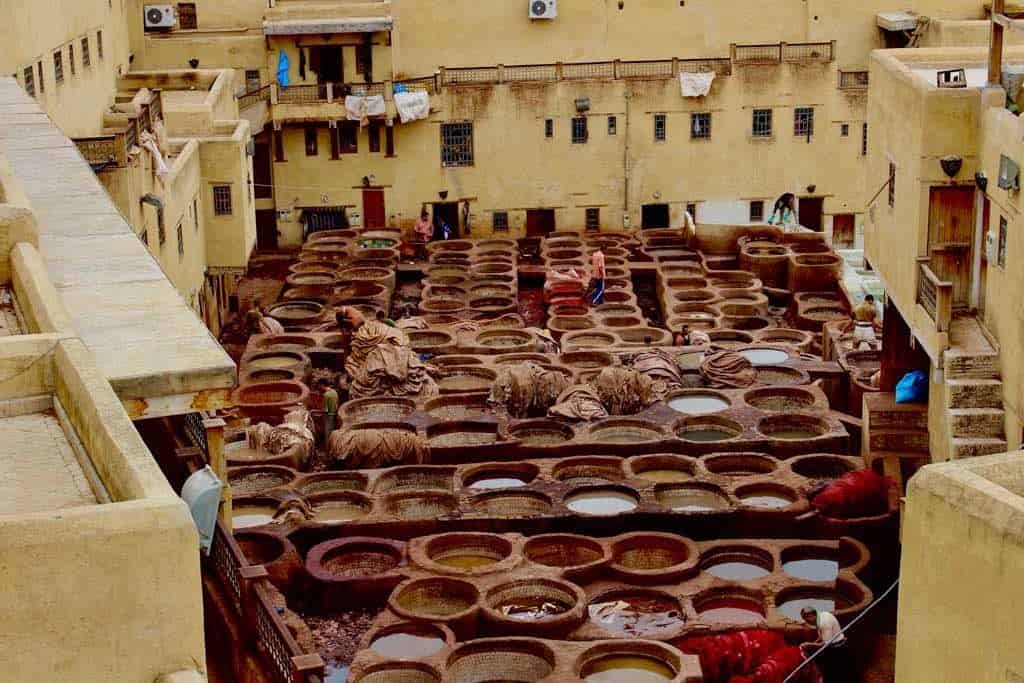
For anyone travelling to Morocco from southern Spain, this is the first Moroccan city you will experience.
Located on the Strait of Gibraltar, Tangier is a good transition city between Europe and Africa.
It is a port city on the water, but the beaches aren’t as nice as others in Morocco.
So travellers to Tangier should focus more on the historical and cultural aspects of the city.
A cultural crossroad, here you can find traditional north African influences in the Old Town and Medina, where the buildings are painted a classy white.
Visit Cafe Hafa , a famous seaside cafe that serves traditional drinks and snacks and offers a lovely view of the ocean.
In the Medina you can also find the Phoenician Tombs, the Old Kasbah, a Kasbah Museum and Dar el Makhzen , a historical masterpiece that used to be a sultans palace but its now a museum of artifacts.
For a local food experience, visit the Berber Farmer’s Market on Thursdays and Sundays for fresh produce.
Or venture to the massive Grand Socco Market , open every day.
There is also a New Town known as Ville Nouvelle , which exudes a classy French atmosphere with its intricate architecture and spacious boulevards full of shops.
Place De France is the beating heart of the Ville Nouvelle, and this is one of the best places to visit in Morocco for finding trendy cafes and restaurants.
READ MORE: Plan your trip to experience Porto, Portugal
Though Rabat is the country’s capital city, Casablanca is the biggest city with a population of about 3.4 million.
This busy coastal city is one of the more developed places in Morocco, with a thriving entertainment scene and growing business sector.
As Casablanca is one of the more modern cities in Morocco, here you can find international cuisine, casinos, nightclubs, high-end shopping and one of the world’s largest shopping centres, the Morocco Mall .
In contrast to the Old Medina, the city also has a New Medina built in the 1930s, called the Quartier Habous .
This New Medina is much cleaner and more refined than the Old Medina, though it showcases modern European influence rather than authenticity.
Casablanca’s ocean isn’t the nicest for swimming.
But a nice walk or jog along the Corniche , or oceanfront boulevard is a great way to enjoy the ocean breeze.
On this seaside sidewalk you can find the Hassan II Mosque , arguably the best attraction in Casablanca.
As one of the largest mosques in the world, the impeccable design and sheer size of this religious landmark is a feast for the eyes.
Because of the classic film of the same name, Casablanca is also perhaps the most well known and best places to visit in Morocco.
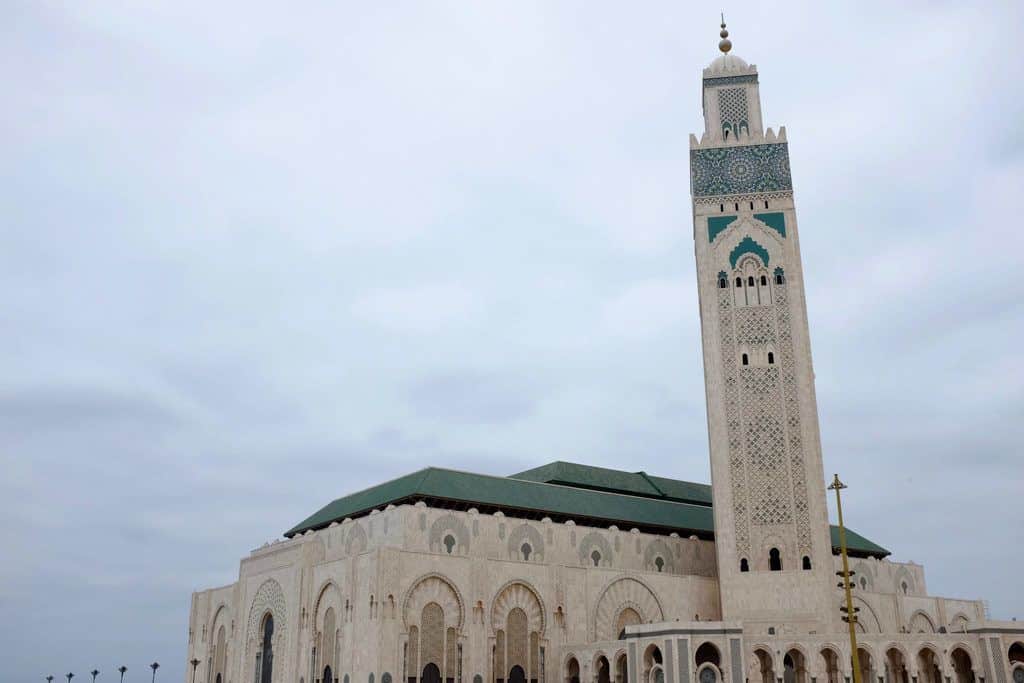
As a UNESCO World Heritage Site, Meknes is the perfect destination for history lovers and those with a cultural curiosity.
This is one of the four imperial cities of Morocco and was a Moroccan capital city in the 17th Century.
Because Meknes is less popular than nearby Fez, travellers can revel in the town’s historical significance without all the crowds of the bigger cities.
The Medina of Meknes dates back to the 9th Century and is guarded by the gorgeously tiled Bar Mansour Gate .
Wander through here for a look into Morocco’s past and indulge in a few local handicrafts.
Stop by the Meknes Museum to explore colourful Moroccan art including rugs and textiles, pottery and ceramics, and clothing and jewellery.
Other highlights of Meknes include the Museum of Moroccan Art , also known as Dar Jamai , the Borj Belkari Museum of Pottery, The Mausoleum of Sultan Moulay Ismail and the Royal Stables Ruins .
One of Morocco’s most famous and well-preserved ruins, Volubilis , lies just north of Meknes and makes an awesome day trip from the city.
Nestled against the Rif Mountains, Chefchaouen may be the most picturesque place in Morocco.
Travellers flock here from all over the world to photograph the “Blue Pearl of Morocco,” as this small city is often called because of its blue-painted dwellings.
Strolling through Chefchaouen feels like a dream because of all the blue paint.
Whether it be pale pastel blue or deep royal blue, the hue mixes with the graceful architecture to make every single street look like something from a postcard.
You will understand why it is one of the best places to visit in Morocco once you spend a few hours wandering through the city.
The most scenic place in the city is the Old Town, and the most photographed spots here are “ Blue Street, ” Place El Haouta and El Asri Street .
All of these reveal some gorgeous displays of blue paint and incredible design.
So it’s definitely worth waiting amongst the crowds to see these sights.
If you explore early in the morning, you’ll beat most of the crowds.
To see the more local side of Chefchaouen, venture anywhere outside the crowded Old Town and you’ll find super cheap cafes and local markets.
These will be better for your wallet than eating in one of the many tourist restaurants.
Check out this post for more great things to do in Chefchaouen !
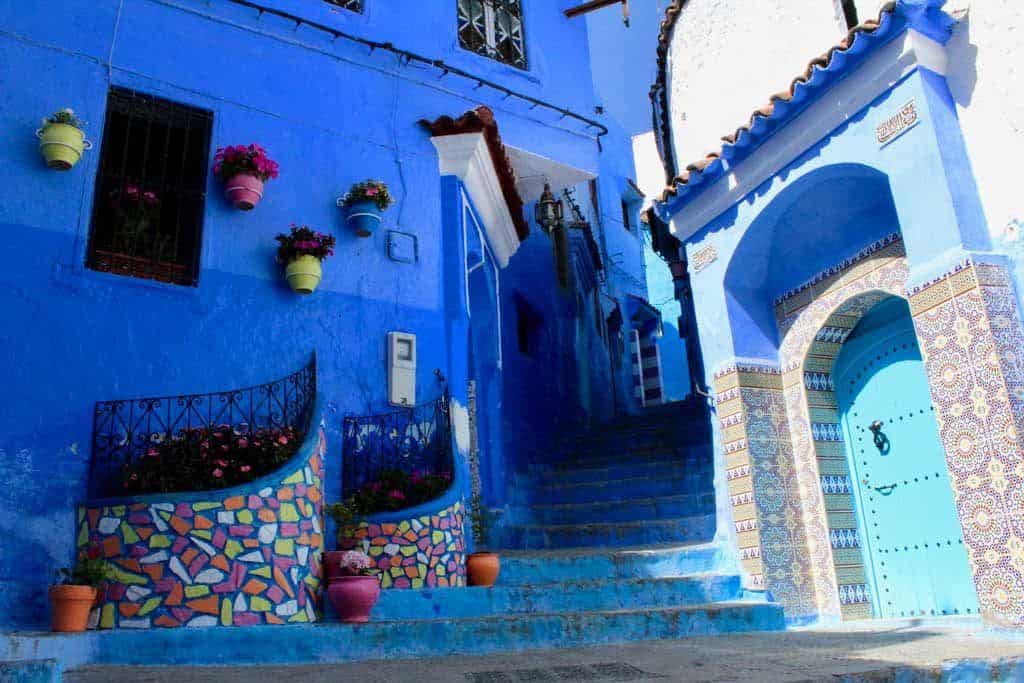
Located on the Mediterranean Sea, Al Hoceima is the perfect beach getaway for those travelling through the north of Morocco.
The Spanish helped to develop the city in the early 1900s, and nowadays Al Hoceima serves as an important port town and has a thriving fishing industry.
The beaches here are some of the nicest and cleanest in the country.
Quemado Beach is just a short walk from the city centre. Calabonita Beach is known for its crystal clear, turquoise water.
Other lovely beaches in the area include Thara Youssef, Sfiha, Matadero, and Souani.
Al Hoceima is also situated on the northern edge of the Rif Mountains, so there are lots of rugged cliffs to enhance the scenery.
Al Hoceima National Park has lots of opportunities for hiking, mountain biking, and admiring the dramatic, seemingly untouched natural beauty.
This lesser-known Moroccan coastal city is ideal for surfers and beach bums.
Safi isn’t very touristy, which is great for experiencing the local culture.
The Medina is full of shops selling gorgeous ceramics and traditional cafes selling fresh sardines, sugary mint teas and hearty tagines.
The Main Beach consists of a massive stretch of golden sand framed by a long sidewalk and hipster cafes.
During winter, the waves attract surfers from all over the globe, and all year round the water is cold and refreshing.
Drive about 15 minutes north of Safi Main Beach to Lalla Fatna Beach for a more secluded sunbathing spot.
You will notice at the beaches that most local women dress conservatively.
If you are a woman, there are no concrete rules as to what you can and can’t wear at the beach.
But you may choose to cover up as much as possible to blend in with the locals and show respect for their culture.
READ MORE: 25 things to know to help you plan your trip to Iran
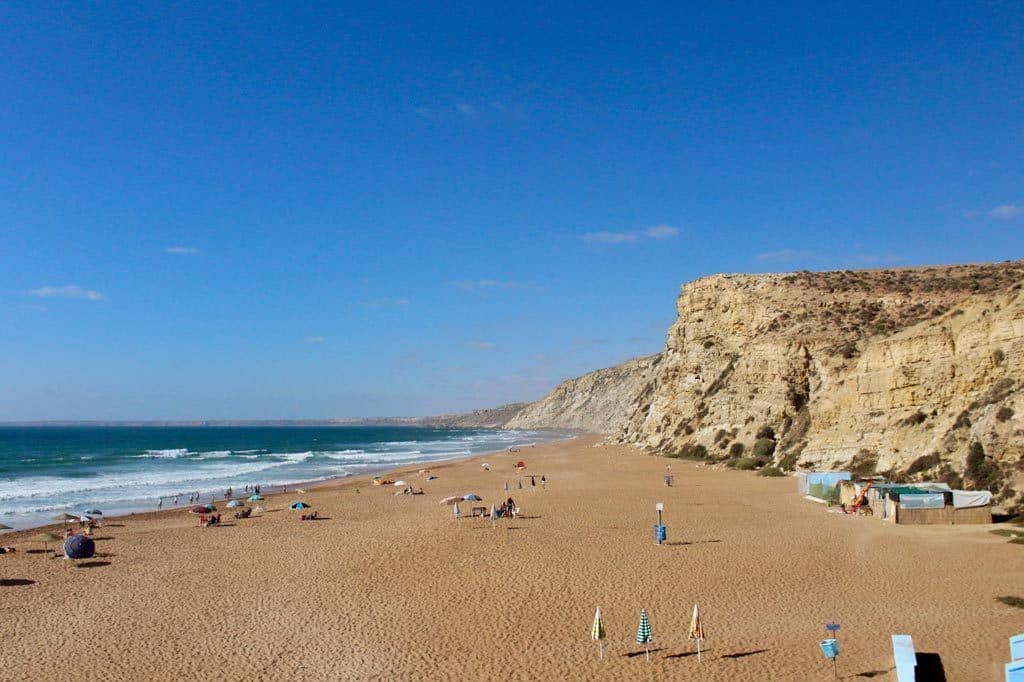
Asilah is a cultural melting pot residing on the Atlantic Ocean, making it one of the best places to visit in Morocco.
Here you can find fortifications built by the Portuguese, an Old Town with Spanish influence, and whitewashed buildings that resemble those of Greece.
Through all this multiculturalism, the Moroccan charm still shines through with the traditional markets of the city.
Thursday, in particular, is the busiest market day, where local artists showcase their work and travellers can shop for traditional goods and souvenirs.
Art lovers can also visit the famous art gallery known as Aplanos , or attend the Annual Arts Festival in August.
To enjoy the ocean, the two closest beaches to the city centre are Asilah Beach , about 4km north of the city center, and Paradise Beach , about 7km south of the city center.
The extra distance to Paradise Beach may be worth it, as this beach is bigger and less crowded than Asilah beach.
This charming coastal town is a popular day trip from Marrakech, though some travellers prefer to stay there a few days.
Previously known as Mogador, this port town has a rich history in the Caravan Trade Route.
Locals from the Sahara Desert and the Atlas Mountains used to travel to Essaouira to export their goods to the world.
Although nowadays the city has become more of a relaxed tourist destination and one of the best places to visit in Morocco.
The city is framed by fortifications that King Mohammed III of the 18th Century built to protect the important trade center.
Climb up these walls to feel the fierce Atlantic wind on your skin and look out over the ocean and the nearby beach.
Make sure to explore the colourful and charismatic Medina, which has been named a UNESCO World Heritage Site.
And check out the local fish market if you can stand the pungent seafood smell.
Whether you are driving to Essaouira or taking a day trip from Marrakech, you will most likely pass goats in trees on the outskirts of the city.
This area of Morocco is sprawling with Argan trees, and goats literally climb into the trees to eat the nuts, seeds and fruits.
You may need to tip the local farmer who owns the goats if you want to take photos. But it’s worth it to capture this outrageous sight.
Book your trip to Essaouira today on Get Your Guide !
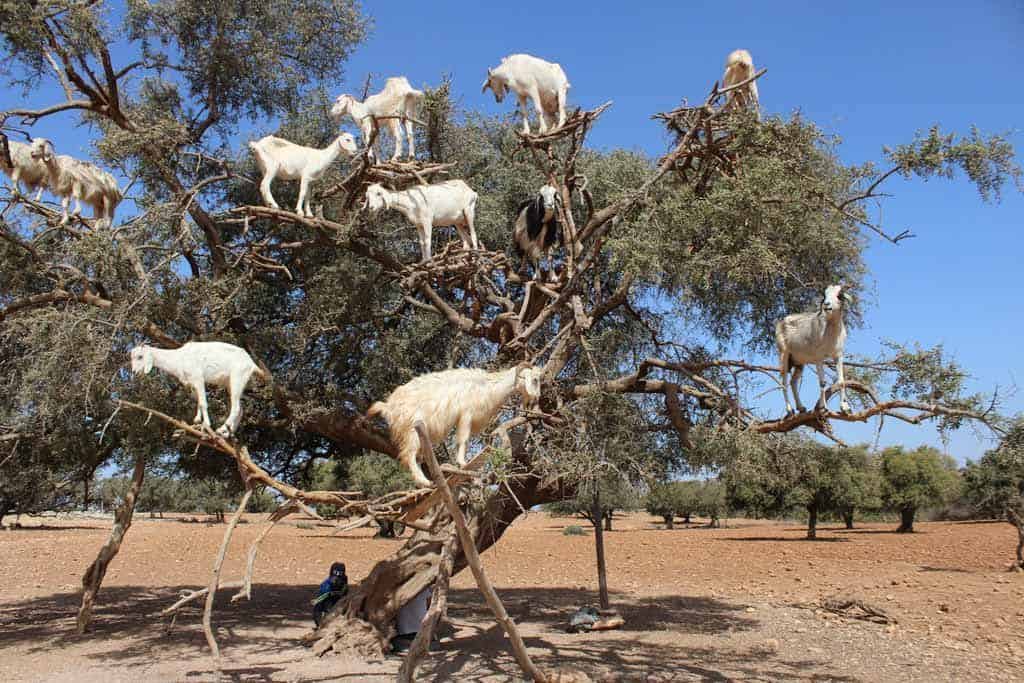
A trip to Morocco would be incomplete without exploring the breathtaking Atlas Mountain Range.
Many people view Morocco as hot and arid. But at the high altitudes of the Atlas you can find cooler temperatures and sometimes even snow.
The Atlas Mountains are full of little Berber villages and towns, but Imlil makes a great starting point for adventures into the area.
Imlil is easily accessible from Marrakech by a shared taxi. And you will find that there are a few cheap hostels and lots of nice guesthouses for travelers.
From Imlil you can begin the multi-day trek to the summit of Mount Toubkal , the highest mountain in northern Africa.
There are also many day hikes in Toubkal National Park available from Imlil, including a circuit around the hills of the village and a full day hike to a waterfall.
Whether you choose a few shorter hikes or one long trek, you are guaranteed to find majestic mountain peaks, tiny remote villages with friendly locals, and lots of wildlife including sheep, donkeys and goats.
Asni is another nearby village to Imlil, which is a bit smaller and less touristy.
You can also use this town as a base for hiking Toubkal National Park.
Oukaimeden is another popular destination in the Atlas Mountains, as it is one of the few skiing destinations in Morocco.
On the drive into the mountains from Marrakech, you will most likely travel along the Tizi n’ Tichka Pass , which is a heart-stopping, winding road slicing straight through the cliffs.
The drive is not for the fainthearted, but the views and stunning and you can always trust your local Moroccan drivers.
Visit the Atlas Mountain Range with a camel ride, only found on Get Your Guide
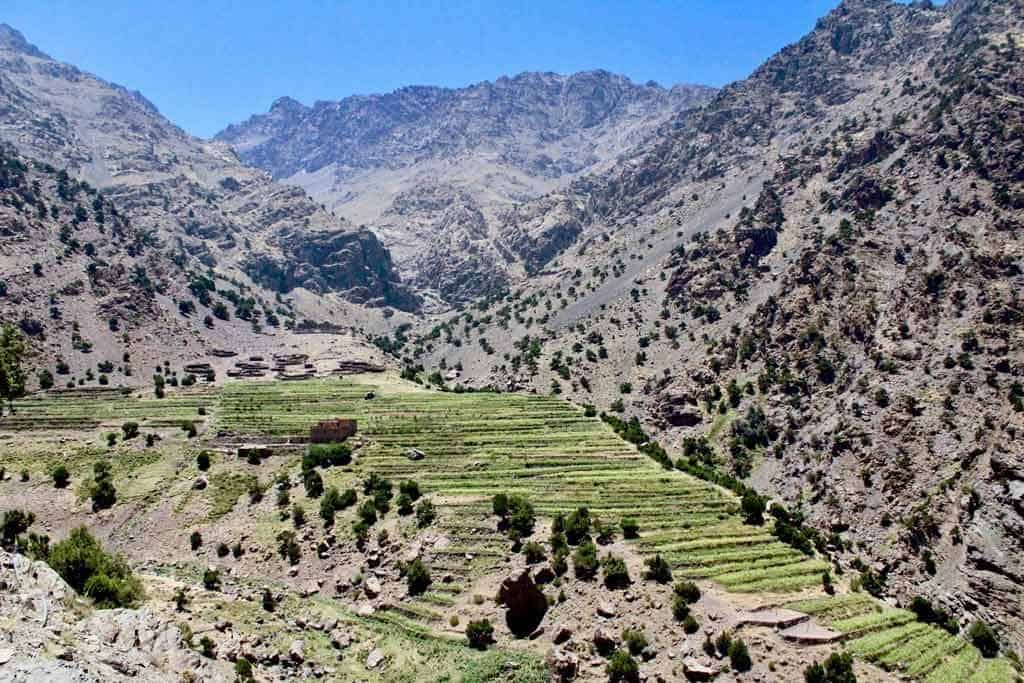
Located in between the Atlas Mountains and the Sahara Desert, many desert tours pass through here on the way to the Sahara.
If you aren’t doing an organized tour, try and venture out here to the “Hollywood of Morocco.”
The area’s rugged, dusty desert-like landscape filled with kasbahs, palaces and rustic dwellings attracts filmmakers from all over the world.
Movies and shows filmed in Ouarzazate include Gladiator, Game of Thrones, Ben Hur, Mummy, The Hills Have Eyes and Kingdom of Heaven.
You can take a guided tour of Atlas Film Studios to learn about the film making process. Plus there is also a Cinema Museum that showcases artwork used in films.
About 30km northwest of Ouarzazate lies another traditional Moroccan hilltop town also used for filming movies.
Aït Benhaddou is a UNESCO World Heritage Site, and few local families still live in the tiny village, selling their traditional souvenirs to tourists.
About 130km northeast from Ouarzazate is the scenic Dades Valley .
Though it’s a bit far from Ouarzazate, it is on the route to the Sahara. So if you are driving past it anyways you should definitely stop here.
The Dades River has carved winding curves and valleys into the arid cliffside, and Todra Gorge , in particular, is a popular photo opportunity here.
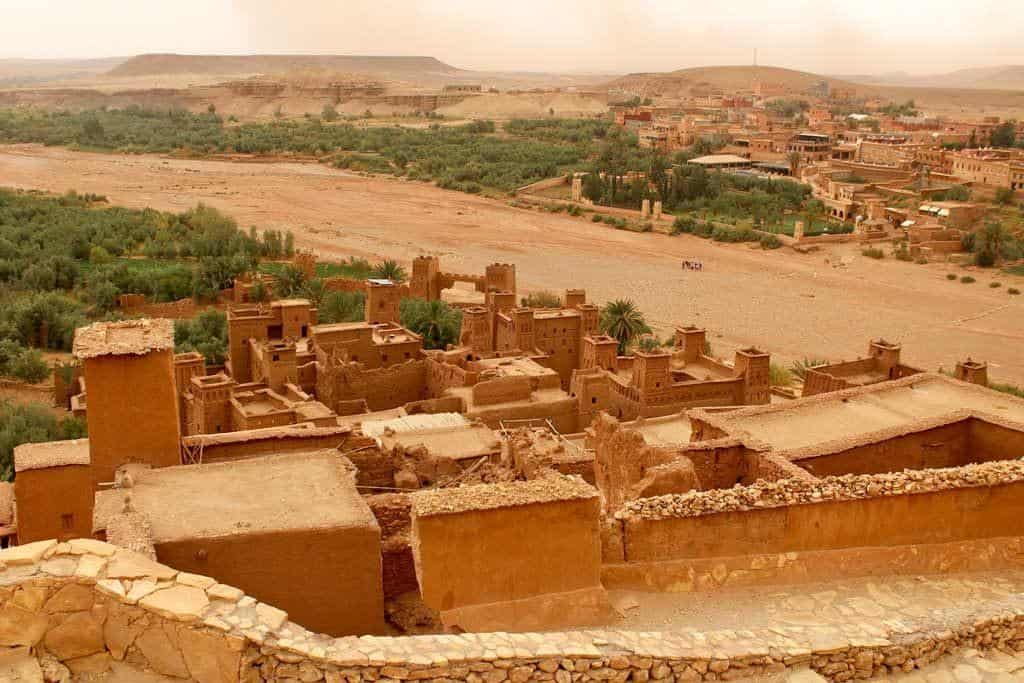
Some people visit Morocco solely to see the Sahara Desert .
As the largest hot desert on the planet, the Sahara is truly a natural phenomenon.
Morocco is perhaps the most convenient gateway into this sea of sand.
The easiest way to visit the desert is to book a tour from Marrakech.
Although it is possible to do on your own through public transport and finding accommodation in one of the nearby towns.
Most tours include round trip transport from Marrakech, which takes about 10 hours so be prepared for a long day of travel.
But upon reaching the desert, you can enjoy camel treks, free time to explore the dunes, traditional meals, stargazing, and wonderful hospitality.
Merzouga is one of the most popular desert towns as it’s located right next to the massive Erg Chebbi Dunes .
Though this spot is very close to the Algerian Border, country lines don’t seem to matter at all as you gaze across seemingly endless ripples of soft golden sand.
Another location for seeing the Sahara is the desert town of Mhamid , which leads to the Erg Chingaga Dunes.
Both dunes are beautiful, though the latter is a bit less touristy. No doubt the Sahara Desert is one of the best places to visit in Morocco.
Book a 3-day Safari Desert today !
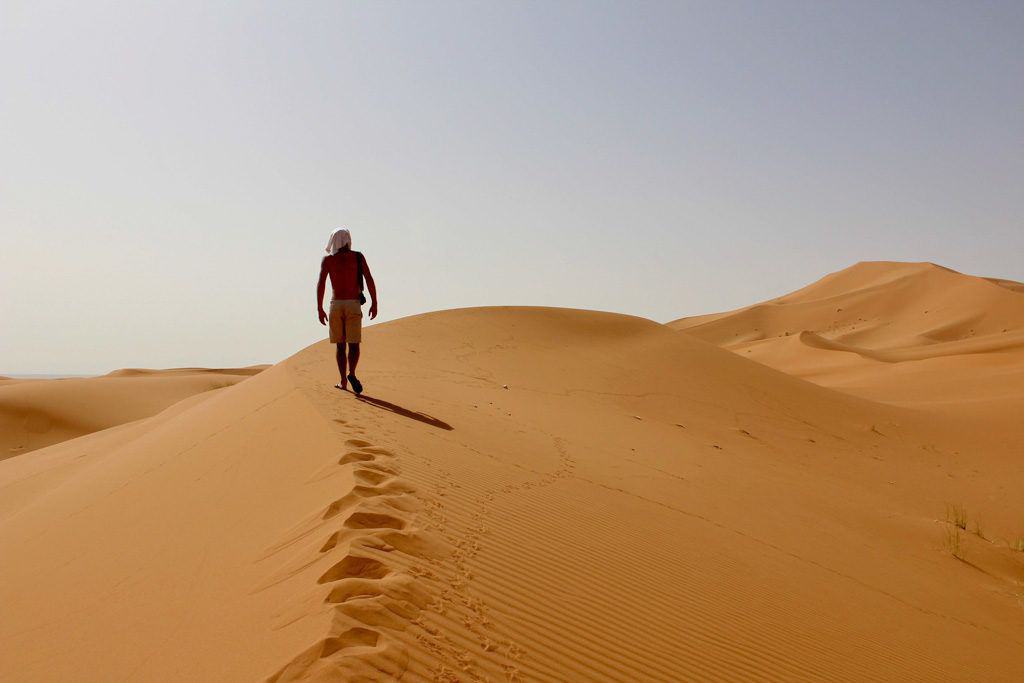
While staying in Marrakech, escape the city and venture to Ouzoud Waterfalls.
This area is very remote and there is no direct public transport from Marrakech, so the easiest option is to book a day tour.
For about 200-250 Dirhams, you can book a day trip with any of the countless tour agencies in Marrakech, and you’ll get round-trip transportation in a comfy minivan.
This is a full-day adventure, as the drive takes about 3 hours each way and you’ll have a few hours to relax at the falls.
Once you step off the bus, a local will try to convince you to pay for a guided tour.
This isn’t necessary as it’s very easy to explore the falls yourself.
The waterfalls are simply stunning, with multiple huge cascades thundering town towards the El-Abid River Gorge.
Stairs lead up and down the canyon of the falls so you can walk to the bottom and swim in the little pools at the base of the falls.
The same stairs lead up to a lookout point, where you can take in the view of the whole waterfall and watch the adorable Barbary Monkeys swing in the trees.
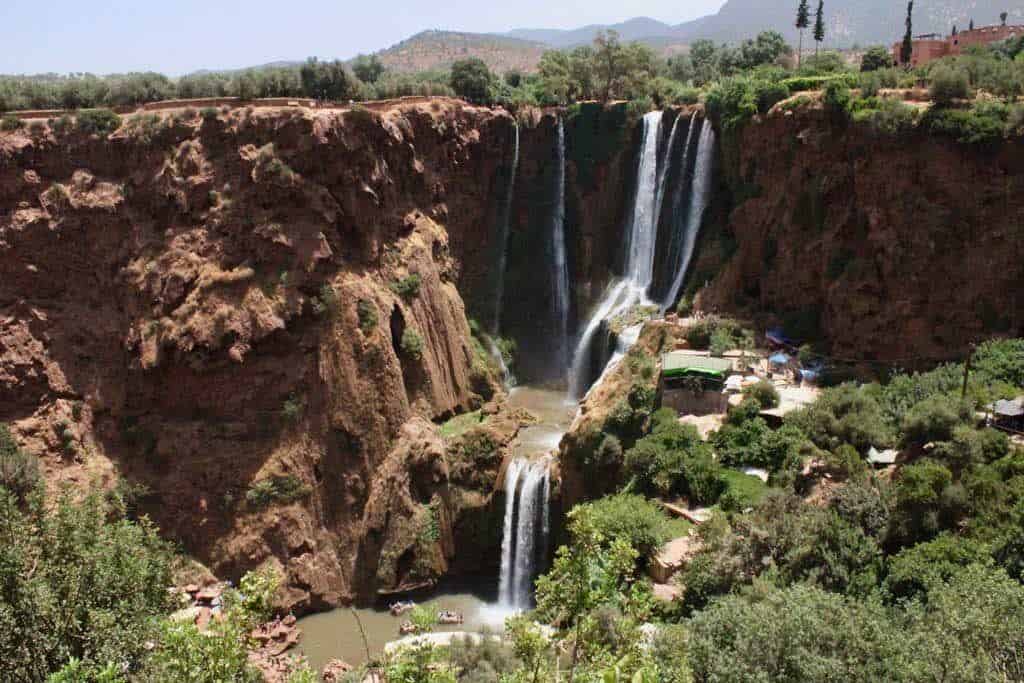
Don’t forget to buy travel insurance before your trip to Morocco!
We recommend World Nomads. Use this form to get your free quote today.
Gabby Boucher
Hi, We’re Alesha and Jarryd!

We’ve been traveling the world together since 2008, searching for the planet’s best destinations and adventures.
Love Travel?
Sign up for our free weekly newsletter for the best travel tips, ideas and deals!
We respect your privacy. Unsubscribe at any time.
READ MORE...
The Perfect 3 Days In Los Angeles Itinerary (2024 Guide)
25 amazing things to do in australia (2024 edition), 19 best things to do in osaka, japan [2024 edition], related posts, 17 epic things to do in pai, thailand [2024 guide], 4 thoughts on “the 15 best places to visit in morocco (2024 edition)”.
Such great info, so helpful. We are a 70 year old active couple, is it safe for us to travel alone, as we do in Europe, or should we do a small tour around Morocco. We do usually do tours, except when we toured India, but that again was only the two of us with a driver
Cheers Jill
Nice post! Really enjoyed reading… Thanks for sharing with us!
Amazing blog, rich with innumerable info for any newcomers, thank you for sharing with us.
It seems hard to limit the best places to visit in Morocco because there are so many beautiful places and different cultures to discover.
Leave a comment Cancel reply
Save my name, email, and website in this browser for the next time I comment.
Morocco Travel Guide
Stunning interior gardens, courtyards, and delicious tajines, spanning from the Atlas Mountains to the Sahara.
Best time to visit Morocco
Rent a car in morocco, best places to visit in morocco, sahara morocco: visit the merzouga desert on a 3-day tour, 9 best things to do in chefchaouen, morocco, 11 things to do in fes, morocco (complete guide), map of morocco, weather in morocco.
Morocco's weather is primarily dry year round, with mild winters, and intensely hot summers. Springtime, from March to May, is the most beautiful time to visit as landscapes bloom. September to November are also very pleasant months, ideal for exploring.
Destinations in Morocco
Things to do in marrakech, morocco: a 3-day guide, how to rent a car in morocco, best travel insurances.
- Find Hotels via Booking.com
- Find Hostels via Hostelworld
- Find a Rental Car via Sunny Cars
- Find Flights to Morocco via Skyscanner
- Get a Travel Insurance via Heymondo
- Book Tours & Attractions via GetYourGuide
- Book a Bus/Train/Transfer via 12Go
- Get a Visa via iVisa
- How to pack light for your trip
- How to plan your trip our tips
Why is Morocco worth visiting?
Morocco is an incredibly stunning and diverse country, full of wonder. Home to the Sahara desert, the Atlas Mountains, stunning architecture, lively medinas, calming hammams, bustling souks, and tranquil gardens, it’s a destination that’ll overload your senses but captivating to explore.
Is Morocco cheap to visit?
Enjoy this Moroccan charm without breaking the bank! While there are some very luxurious hotels and experiences in Morocco, it tends to be a very affordable travel destination; with tempting stalls selling delicious food for $5 and quaint riads starting at $20 a night, there are options for everyone.
Can I drink tap water in Morocco?
While most locals will drink tap water, it’s recommended to avoid it as a traveler. Stay hydrated by using a reusable water bottle with a filter system, or purchase a large bottle that you can refill from during your trip.
Do I need a visa for traveling in Morocco?
Good news! Most travelers can explore Morocco visa-free for up to 90 days. Check your country’s specific entry requirements before your trip, and when entering the country, make sure to get your passport stamped on arrival.
What language do they speak in Morocco?
Moroccan Arabic is the native language of Morocco, amongst other languages, depending on the area. Virtually all Moroccans will be able to speak French, and in the main tourist areas, English is also widely spoken, so you should have no problems getting by.
Do I need travel insurance for Morocco?
While traveling around beautiful Morocco, unforeseen circumstances may arise, like lost belongings and medical emergencies. Having travel insurance will keep you protected on the go and ensure peace of mind.
Is Morocco safe?
Morocco is a safe country to travel to, with friendly locals keen to chat. Petty crime does exist, so it’s always a good idea to exercise caution, leave valuables out of sight, avoid back alleys, and make sure not to walk alone at night. However, for the most part, Morocco is a beautiful place to explore worry-free!
What power plug type does Morocco have?
The standard plug used in Morocco is the two round pin plugs, known as plug type C and E. Make sure to bring your adapters or purchase one at the airport to keep connected during your trip.
Why do people love Morocco?
Morocco is loved for its incredibly diverse experiences and sensory delights. One moment, you can be experiencing sunrise on a camel in the Sahara Desert , the next enjoying a delicious tagine on a rooftop in Marrakesh, or wandering the blue streets of Chefchaouen. Morocco has it all!
Travel in Morocco
A mesmerizing land of diversity, Morocco guarantees to enlighten all your senses. From majestic mountains, serene beaches, and quaint gardens to bustling medinas, camel riding in the desert, and tea with Berbers, a vacation in Morocco promises to be full of surprises.
How to plan your trip to Morocco
Use our Morocco travel guides to create the ultimate adventure! Whether you’re planning a weekend break to Marrakech , keen to get lost in the ‘Blue Pearl’ city of Chefchaouen , or looking for a breathtaking Sahara desert experience, our guides have you covered with all you need to plan the perfect Morocco holiday .
Backpacking around the country? 10 days in Morocco gives you a great amount of time to experience the best places in Morocco .
Best time to visit Morocco
Heading on vacation to Morocco ? Before your trip, it’s essential to pick the best season to explore this bustling destination!
Spring and Autumn (March – May, September – October): The best time to visit Morocco is in Spring and Autumn, between March and May and September and October. This period brings warm temperatures between 20°C – 30°C and sunny skies, making travel throughout the country very pleasant. Spring is also when the landscape starts to bloom, making it incredibly beautiful!
Winter (November – February): Morocco rarely sees any rain, so while winters are colder, they’re still dry and great for exploring cities, ranging between 16°C and 21°C. The months of November and February can be amazing times to visit; tourist hotspots are quieter, and the temperature is still warm, with only a light jacket needed for your trip. While the rest of Morocco remains relatively mild, if you’re looking for snowy adventures, head to the Atlas Mountains, where you’ll have the opportunity to go skiing and snowboarding.
Summer (July and August): July and August are the height of the summer and the hottest months of the year. We’d recommend avoiding these months as the heat can become extremely unpleasant in the cities. The coast can be a little more bearable, so this may be the best time to visit Morocco if you’re planning on a relaxing beach vacation.
Other than the summer months, which may be too hot for most, Morocco’s weather is typically beautiful and sunny year-round, perfect for exploring or even doing some snowy activities!
Coastlines and beaches in Morocco
Morocco might not be the first place that pops to mind when you think of sun, sea, and sand, but with nearly 2,000 km worth of coastline, Morocco has some incredible and unique beaches to explore.
One of the most laid-back coastal towns is Essaouira, a vibrant fishing port and medina, home to a long stretch of golden sand perfect for watersports. For a more unique experience, head to Legzira Beach, home to natural piercing red rock arches — a mesmerizing sight to behold. If you’re looking for the best places in Morocco to surf, the relaxed fishing village of Taghazout is home to amazing waves, with Devil’s Rock Beach becoming a hot spot for surfers worldwide.
From sunbathing on the Mediterranean sand to surfing the chilly Atlantic waves, there’s something for everyone, offering a calming escape from the hustle and bustle of Morocco’s lively cities.
Food, culture, and religion in Morocco
From the divine aromas of Moroccan cuisine to the calming calls of prayer and the vibrant colors of the medinas, Morocco is a place where food, culture, and religion beautifully intertwine, creating a uniquely immersive experience.
Food: The heart of Moroccan culture lies in its cuisine, bursting with aromatic flavors and spices. Delicious dishes like tagines, couscous, and m’hanncha take you on a journey with your taste buds filled with different spices, unique to whoever created them. Tea also plays a huge part in Moroccan life, taking great care of every step of the brewing and pouring process. This tradition gestures hospitality and friendship, sharing alluring stories along the way.
Culture: Moroccan culture is also vivid in its intricately designed architecture and artwork, with palaces covered in elaborate styles and souks showcasing craftsmanship through woodwork, textiles, and ceramics; each piece of art tells a story.
Religion: Religion plays a significant role in Moroccan life, with most of the population following Islam. As you travel Morocco , you’ll see and hear this influence through the magnificent mosques and soothing calls to prayer, the daily routines of locals, and their customs.
Why you should travel to Morocco
Morocco is a wonderfully chaotic yet beautifully quiet country. Journey through the bustling medinas of Fes and Marrakech to the tranquil Sahara Desert and the Atlas Mountains. The diverse experiences Morocco has to offer promise unforgettable memories.
There’s something for everyone in Morocco. For the backpacker looking to immerse their senses, the labyrinthine streets and souks will have you in awe, providing a glimpse into the traditional way of life. For those looking to unwind on their Morocco holiday , the numerous exquisitely designed riads will offer you your own tranquil paradise away from the hustle and bustle. Alternatively, choose the Agafay and the Sahara Desert , with their awe-inspiring landscapes, for epic, adventurous activities and clear, starry nights.
The unique experiences, incredible landscapes, vibrant culture, and warm locals of Morocco are truly something special.
Safety and travel advice Morocco
Traveling Morocco, a tantalizingly mysterious country in Africa, can be a challenging yet rewarding place to visit. Taking necessary precautions will help you get the most out of your trip.
Crime and safety in Morocco: Crime rates are relatively low, but like many tourist destinations, scam artists, overly persistent vendors, and pickpocketers can be expected in popular tourist areas. When visiting busy cities like Marrakech and Fes , you’ll find many touts trying to sell you things or unlicensed tour guides offering to show you where to go for “no money”, but then demanding payment once they’ve taken you there. In this case, simply provide a polite ‘no’ and walk away. It’s always a good idea to exercise caution, leaving valuables out of sight, and at night, making sure not to walk alone.
Solo female travelers: While Morocco is relatively safe to travel as a solo female, it’s always safer to travel with someone else if you can do so, particularly if you’re not an experienced traveler. As a Muslim country, it’s worth respecting local customs by dressing modestly (consider wearing loose-fitting clothing that covers your knees and shoulders to avoid unwanted attention). Also, refrain from walking alone, especially at night and within quieter areas.
Natural Disasters: Although natural disasters occur infrequently, Morocco is in an earthquake zone. Typically, earthquakes are minor and will go unnoticed, but there are cases of more significant incidents, with the last happening in September 2023. While this shouldn’t put you off visiting, it’s essential to familiarize yourself with safety procedures in the event of an earthquake and stay informed during your trip by registering with your embassy.
Driving in Morocco: Renting a car in Morocco allows you the freedom to explore at your own pace. Traffic in the major cities can be challenging, whereas driving in the countryside is extremely quiet, and most main roads are generally well maintained. Don’t be afraid of using the car horn, as it’s seen as a form of communication. Additionally, never leave your passport with the rental company while you hire the vehicle, and always keep your documents close to you, as there are many police checkpoints.
Travel Insurance: Don’t forget travel insurance for your vacation in Morocco! This will cover you for unexpected incidents such as medical emergencies, flight delays, and theft, ensuring you have a worry-free trip. Find the best travel insurance for you .
Best Time to Visit
Weather & Climate
Getting Around Morocco
Places to Visit
Guide to Moroccan Riads
Things to Do in Morocco
Things to Do in Marrakesh
Guide to the Marrakesh Medina
Best Beaches
Annual Events
Things to Do in Fez
Things to Do in Meknes
Visiting Chefchaouen
Food to Try
Best Restaurants
Your Trip to Morocco: The Complete Guide
:max_bytes(150000):strip_icc():format(webp)/DSC00412-5b73daf7c9e77c0057ca2198.jpg)
Occupying the northwest shoulder of the African continent, Morocco is rich with history and full of color. For some, its essence can be found in the bustling souks and walled medinas of Imperial Cities like Marrakesh and Fez. For others, the country is typified by the plunging sand dunes, camel trains, and Bedouin villages of the Sahara Desert. There is something for every kind of traveler in Morocco. Foodies come to taste flavorful tagines cooked according to ancient recipes. For culture vultures, the mosques, museums, and palaces of cities that date back to the eighth century are the main attraction; while nature lovers will find magnificent scenery from the wild beaches of the Atlantic coast to the snow-capped High Atlas Mountains.
Discover Morocco’s treasure trove of wonders for yourself with the help of this useful guide. From information about the local language and currency , to tips on what to do, what to eat, and where to stay, it has all the information you need to plan your trip of a lifetime.
Planning Your Trip
Best Time to Visit : For fewer crowds and weather that’s sunny but not uncomfortably hot, plan to visit Morocco in spring (April and May) or fall (September and November). There are exceptions to this rule: Morocco’s famous surf destinations are best in winter, while beachgoers may appreciate the more intense heat of summer. Cultural and religious festivals occur throughout the year.
Language: Morocco’s official languages are Modern Standard Arabic and Berber. The most widely spoken language is Moroccan Arabic.
Currency: Moroccan dirham
Getting Around : Morocco has a safe and reliable train network connecting its largest cities and most popular tourist destinations. Long-distance buses are a good budget option, while domestic flights are best for those with limited time. Once you arrive at your destination, use a local taxi (known as a petit taxi) to get around town.
Travel Tip: Morocco is a Muslim country and tourists should dress modestly to avoid causing offense. This is especially true for women, who should keep a shawl or scarf in their purse to wear over their hair when entering mosques and other religious sites.
Things to Do
Most overseas visitors focus their time in Morocco on the Imperial Cities of Fez, Marrakesh, Meknes, and Rabat. At the heart of each of them is the medina, or walled city, where fabulous Arabic and Andalusian architecture abounds and vendors sell precious goods in maze-like souks. It’s worth getting out and exploring Morocco’s rural areas as well. From the bohemian villages of the Rif Mountains to the kasbahs of the Dades Valley, a rich and diverse culture waits to be discovered.
Shop for souvenirs in the city souks: Bring your best haggling skills and venture forth into Morocco’s souks in search of a bargain. In the Marrakesh medina, shop for exotic spices and silver dinnerware in Souk el Attarine, or for hand-crafted Berber jewelry in Souk des Bijoutiers. In Souk Chouari and Souk Haddadine, artisan carpenters and blacksmiths have been showcasing the same techniques for hundreds of years.
Discover a wealth of historic landmarks: Berber kings, Roman invaders, Islamic sultans, and European colonialists have all left their mark on Morocco. Visit the ruins of Volubilis , one of the Roman Empire’s southernmost cities, near Meknes. Tour the Saadian Tombs and El Badi Palace in Marrakesh to get a glimpse into the lives of the Saadian sultans; or walk Essaouira ’s medieval ramparts, built by Portuguese settlers as a defense against invasion.
Explore the country’s natural wonders: Morocco is full of incredibly diverse nature areas. Trek through the Sahara Desert on a multi-day camel safari departing from Merzouga . Surf some of the best waves in Africa in the Atlantic village of Taghazout ; or hit the slopes at Oukaïmeden , one of the continent’s only natural ski resorts.
Explore more amazing attractions with our full-length articles on the top things to see and do in Morocco , the top things to do in Fez , and the top things to do in Marrakesh .
What to Eat and Drink
Moroccan cuisine takes inspiration from Arabic, African, and Berber culture and is given unrivaled flavor by a wealth of locally produced spices. The most iconic dish is tagine , a kind of stew named after the cone-shaped clay pot in which it is cooked. Served everywhere from street stalls to gourmet restaurants, tagines come in many different flavors with chicken, lamb, and kefta being the most common. Often, dried fruit and nuts are added for a distinctly exotic taste. Tagine is usually accompanied by another Moroccan staple, cous cous. Other delicacies to look out for include harira soup, made from tomatoes, lentils, chickpeas, and spices; and bastilla, a savory pie inherited from the Moorish rulers of the past and traditionally filled with pigeon meat.
Because Morocco is a predominantly Muslim country, very few traditional restaurants serve alcohol. Instead, wash your meal down with a cup of ubiquitous mint tea. Freshly squeezed orange juice and strong Arabic coffee are also popular beverages in Morocco.
Where to Stay
Choosing the best place to stay during your time in Morocco depends on your particular interests. If you want to explore historic architecture while immersing yourself in the chaotic thrill of the souks, make your temporary home in the medinas of Fez or Marrakesh. In both cities, the best boutique hotels are located within traditional Moroccan residences known as riads. If you dream of experiencing the Saharan Desert in all its glory, head to Merzouga, a frontier town on the edge of the Erg Chebbi dunes. Camel safaris often include an overnight stay in a traditional Bedouin village. For a tranquil getaway in the Rif Mountains, the blue-painted town of Chefchaouen is a favorite pick; while Asilah , Essaouira, and Taghazout are all great choices for laid-back beach living on the Atlantic coast.
For more information on destinations and accommodation choices in Morocco, read our full-length articles on the best hotels in Marrakesh and the best beaches in Morocco , plus this complete guide to Moroccan riads .
Getting There
For most visitors, the easiest way to get to Morocco is to fly in. There are two main international airports: the Mohammed V International Airport (CMN) in Casablanca and Marrakesh Menara Airport (RAK). The former handles most of the country’s long-distance arrivals, while the Marrakesh Airport is a popular destination for budget European airlines. Morocco’s national airline, Royal Air Maroc, offers a daily non-stop flight from New York to Casablanca. Alternatively, ferries travel to Morocco from several countries in Europe, including Spain, France, and Italy.
Visitors from the United States, Canada, the U.K., Europe, and many other countries do not require a visa to enter Morocco for stays of up to 90 days.
Culture and Customs
Islam is the predominant religion in Morocco (more than 99 percent of the population are Sunni Muslims ) and as such, many aspects of the local culture differ from what you may be used to back home. Traditional restaurants do not serve alcohol and visitors are expected to dress conservatively in public. Women in particular should keep their shoulders, upper arms and legs above the knee covered at all times. Homosexuality is illegal and LGBTQ+ travelers are advised to avoid any public displays of affection; homosexual behavior (including kissing) can be prosecuted with a fine of up to three years in jail. If you travel during the month of Ramadan , most Moroccans that you meet will be fasting during daylight hours, and local restaurants will stay closed throughout the day. Most mosques are off-limits to non-Muslims.
Bathroom etiquette is very different in Morocco, where squat toilets are far more common than the Western variety. Instead of toilet paper, bathrooms are equipped with a bucket of water or a hose which you use in conjunction with your left hand to clean yourself. Consequently, the left hand is never used to eat with or to greet people in Morocco. Make sure to shake hands using your right hand, and remember that pointing is also considered impolite and should be avoided. It is customary to tip in Morocco for good service, but also to haggle over prices in the souks. If you’re new to haggling, the best practice is to start by offering half of the vendor’s initial asking price and negotiate a mutually agreeable number from there.
Thwart the pickpockets in crowded areas by concealing your cash in a money belt, and avoid carrying large amounts on you. Be equally discreet with jewelry and expensive camera equipment.
Money Saving Tips
- Scam artists are common in tourist hotspots like Marrakesh’s Djema el Fna square. Black market money exchangers often deal in counterfeit cash, and vendors or street performers who give you “gifts” will usually demand payment later.
- Buy your meals from street vendors for the cheapest food prices. If a stall is full of local patrons, it’s a good indication that the food can be trusted.
- Book tours with respected local operators rather than arranging them in advance with international tour companies. You’ll often get a better price and may even be able to negotiate further discounts.
- When shopping at the souks , don’t be intimidated into buying things you don’t want. If you’re not interested or the price isn’t right, simply walk away.
- Haggling isn’t just for the souks. It’s also for tours, car rentals, and especially taxis. Most taxis are not metered and the first price you are quoted will be way over the odds. Make sure to agree on the fare before getting in.
- Carry plenty of small notes to avoid paying more than you should when drivers or vendors tell you they don’t have change.
- If you have the time, travel by train or long-distance bus instead of taking domestic flights. Both methods of transport are safe and comfortable. Grand taxis (shared taxis) are even cheaper, but not so reliable.
Kingdom of Morocco Ministry of Foreign Affairs. " List of countries whose citizens are exempted from entry visa into Morocco. "
U.S. Department of State. "Morocco 2018 International Religious Freedom Report." Page 3. May 2019.
U.S. Department of State. " 2019 Country Reports on Human Rights Practices: Morocco, Section 6. Discrimination, Societal Abuses, and Trafficking in Persons ." 2019.
The Top 15 Things to See and Do in Morocco
Top 10 Things to See and Do in Marrakesh, Morocco
10 of the Best Places to Visit in Morocco
The Best Time to Visit Morocco
The 18 Top Things to Do in Meknes, Morocco
48 Hours in Casablanca: The Ultimate Itinerary
The 12 Best Things to Do in Casablanca
Chefchaouen: Planning Your Trip
The 9 Best Day Trips From Casablanca
Your Trip to Egypt: The Complete Guide
Marrakesh Medina, Morocco: The Complete Guide
Cairo Guide: Planning Your Trip
The 10 Best Restaurants in Morocco
How to Travel From Casablanca to Fez by Train, Bus, Car and Plane
Tangier, Morocco: Planning Your Trip
How to Travel From Seville, Spain, to Morocco by Bus, Car, and Plane

Morocco Travel Guide
Your ultimate morocco travel guide, with tips, things to do, and best things to see in morocco. great for first-time and returning travelers..
Morocco is a fascinating multicultural country blended from African, Arab and European influences.
It is our closest link to the continent of Africa and a diverse holiday destination.
The country offers an incredible amount of history, culture, art, and music along with a fascinating geographical landscape incorporating the Sahara desert, the snow-capped Atlas Mountains and the Atlantic coastline.
This Morocco trave l guide will help you plan your next vacation.
Popular Guides
- Moroccan Foods
- 5 Things to See in Morocco
Our Highlight
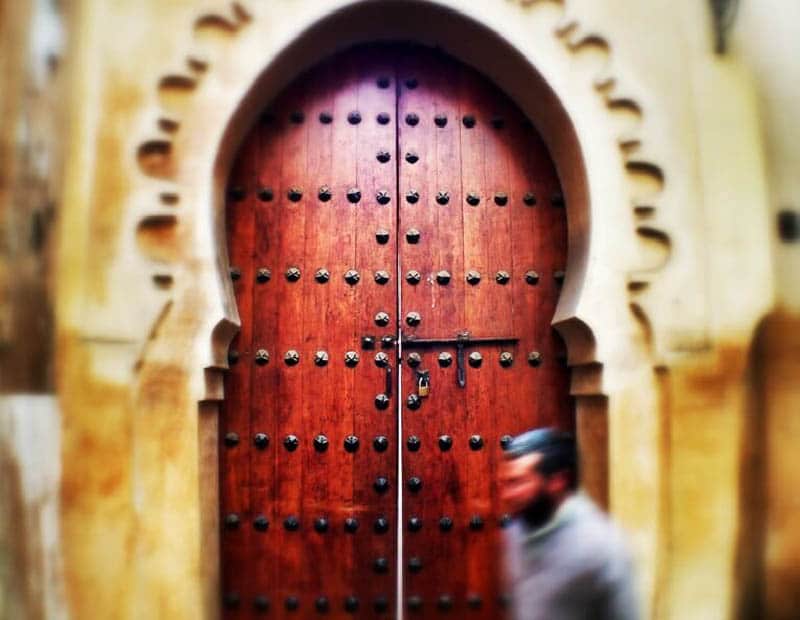
Table of contents
Table of Contents
Fast Facts about Morocco
- Moroccan power voltage is 127/220 V 60 Hz; Power sockets C & E
- The local currency is the Moroccan Dirham (MAD) and is around 9.50 MAD to 1 USD
- In the north of Morocco, visitors will find the Spanish enclaves of Ceuta and Melilla, claimed by Morocco and considered by the Moroccan state to be “occupied territory.”
- In these two towns, the main currency is the euro.
- Tipping is a way of life in Morocco; almost any service can warrant a tip so make sure to bring small bills.
- Haggling is also a way of life in Morocco.
- NEVER pay the asking price, vendors often double or even triple the prices of an item to allow some wiggle room through the haggling process.
- If you are not Muslim, you are not allowed in many of the mosques. Exceptions include the partially restored Almohad structure of Tin Mal in the High Atlas, the similarly disused Great Mosque at Smara in Western Sahara, the courtyard of the sanctuary-mosque of Moulay Ismail in Meknes and the Hassan II Mosque in Casablanca.
- Moroccan laws towards alcohol are quite liberal however drinking alcohol in public places is not recommended. During Ramandan, try to avoid drinking, eating or smoking in public during the hours of fasting.
- SIM Cards :
Things to See and Do in Morocco
- Enjoy a Four-Wheeling Adventure – join the guides of Dunes Desert Exploration and take a three hour tour in the desert on your very own dune buggy or quad bike.
- Surf’s up – Taghazout is a small fishing village 19 km north of the city of Agadir in the southwest of Morocco and houses some of the country’s best surf spots. It is nestled amongst a set of small bays just south of the legendary surf breaks of Anchor Point, Killers, and Mysteries.
- Go to a Hammam – A Hammam is a hot steam bath followed by a massage. Sounds simple enough doesn’t it? It definitely can be quite the experience!
- Visit Fes – Fes is the oldest city in the country and the Medina (or Fes el-Bali) is a World Heritage site. Fez is also famous for its leather products and most of it comes from the leather bazaar (souq). The souq is home to three ancient leather tanneries, the largest and oldest being the Chouara Tannery, which is almost a thousand years old.
- Take a cooking course – learn how to cook traditional Morrocans dishes from a gourmet chef while enjoying great conversations, appetizers and tea.
- Watch the sun rise on a Merzouga morning – to experience a desert sunrise is an unforgettable experience and the best place to do so is at the Merzouga sand dunes of Erg Chebbi
- Take in the colors of the Dades Gorge – There is nothing in the world quite like the Dades Valley. The mineral-rich Dades Gorge sparkles in many hues of blue and green as well as white and red.
- Spend a day in Jemaa el Fna in Marrakech – one of the main cultural spaces in Marrakech, this square has become one of the symbols of the city.
Morocco Travel Guides
- Top 5 Things You Must See in Morocco
- Things to Do in Marrakech – Practical Travel Tips and Where to Stay
- Etiquette in the Middle East- Travel for Men and Women
Accommodation
Budget: You can find a variety of hostels from 53-175 MAD per night. Enjoy dorms or private rooms, free breakfast, hot showers, and central locations to nearby tourist destinations. The Riad Verus in Fes even offers free Arabic classes.
Mid-Range: For mid-range, expect to pay around 380-860 MAD per night. These hotels come with a hotel restaurant and bar, rooms with flat-screen TVs and free Wi-Fi, a swimming pool, and room service.
High-End: For five-star hotels, you will pay around 860-4,100 MAD per night.Take in the best withspa services, fine dining, swimming pools with lounge areas, refined private suites with living rooms, a fitness center, and an airport shuttle.
Moroccan cuisine has a variety of influences, including Arabic, Berber, Mediterranean, and Andalusian cuisine, among others. Staples include fruits, vegetables, meat (beef, goat, lamb, and mutton), seafood, grapes, olive oil, and spices.
Couscous is a popular dish and is often served with meat or vegetables. Morocco also has a vibrant street food scene, where you can sample dishes like harira (a soup made from tomatoes, lentils, chickpeas, lamb, rice, and spices such as cinnamon) or merguez (minced beef or lamb sausages served in flatbread). There are sit-down restaurants as well where you can try more of Morocco’s cuisine. In total, expect to pay around 120 MAD per day for food. Read our full article 13 Delicious Moroccan Foods to Eat When Visiting Morocco
The Best Ways to Get Around Morocco
Getting to morocco:.
Flights: Morocco has 25 airports, but the main airport to fly into is the Mohammed V International Airport, located 15.5 miles from the city center of Casablanca. Another popular airport is Marrakesh Menara International Airport (4.6 miles from downtown Marrakesh), but the flights are mostly from Europe. You can check for the best flights to Morocco on Skyscanner .
Transportation:
Buses : Buses are good for traveling between cities. For more local trips between towns, expect to pay 3-5 MAD, or to go between cities, expect to pay between 210-340 MAD. A bus trip from Casablanca to Marrakesh, for example, will cost about 210 MAD.
Car Rental: To rent a car, you need to be at least 18-21 years old with a U.S. driver’s license that you have held for 1-2 years. Car rental prices start at 450 MAD per day for drivers 25 and older.
Taxis: Taxis are another way to get around. There are two types of taxis in Morocco: Petit and Grand. Petit taxis can seat up to 3 passengers, are metered, and only travel in the city, while Grand can seat up to and travel outside of a city. Grand taxis tend to have a fixed rate of 10.5 MAD for in-city travel.
Uber: Uber is not available at the time.
When to go To Morocco
For cheaper hotel rates and fewer crowds, visit Morocco during the shoulder seasons of April-May and September-November. The fall season in particular is a great time for hiking.
During the summer months of June-August, temperatures can get very hot, especially the closer you are to the Sahara, while winter months see more rainfall, which can dampen outdoor activities.
Where to Stay in Morocco
Hotel Moroccan House Casablanca : When in Casablanca, stay in this beautifully decorated hotel. Featuring traditional Moroccan-styled rooms, amenities include massage services, a restaurant, a hammam, and breakfast. For those who want to explore more of Casablanca, the tram station is just a 3-minute walk away.
Riad Rcif: Come stay in a restored 14 th -century palace at this unique hotel in Fes. Featuring colorfully decorated hotel rooms with artwork and glass-stained windows, the hotel also comes with a restaurant, a roof terrace with great views of the city, room service, and free breakfast. The Ibn Danan Synagogue is just 1.5 miles away.
ibis Marrakech Centre Gare Hotel: Just a short trip to Jemaa el-Fnaa square, Majorelle Garden, and the Koutoubia Mosque, this popular hotel in Marrakesh is a great place to stay. Swim in the outdoor pool while enjoying the surrounding gardens, watch TV in your hotel room, get drinks anytime at the 24-hour bar, order room service, or dine at the hotel restaurant.
Check out our favorite booking platforms Booking.com , Tripadvisor and VRBO for the best deals on accommodation.
What to Pack for Morocco
Morocco is about the size of France with coasts upon the Atlantic and the Mediterranean Sea and has an arid climate .
The coastal regions generally have a Mediterranean climate, however as travelers move further inland the conditions can become more extreme and elevation can play a role in the changeable weather conditions.
Morocco is also a Muslim country
- Modesty is respected and travellers are expected to follow the country’s etiquette. In villages and small towns, and even in the medinas of large cities, many women still wear the veil and the street is seen as strictly the man’s domain.
- Women travelers should avoid wearing revealing clothes, like short shorts, low cut shirts or thin-strapped blouses.
- Sarongs – I think we have sarongs in every packing list. From covering up when visiting mosques, being used as a towel or keeping cool on a hot night.
- Pack loose clothing with breathable fabric – cover up with fabric you know will breathe, especially if you plan on heading into the Sahara desert or to one of the coastal regions.
- Tunics are a great option as they can be dressed up or down, are lightweight and offer good coverage.
- Footwear – Pack a pair of lightweight, durable and comfortable shoes. Moroccan streets can be dusty and unclean so if you are uncomfortable with the idea of getting your little piggies dirty then opt for closed-toe shoes instead of sandals/flip flops.
- Kleenex / toilet paper – it is quite common that restaurant restrooms do not offer toilet paper to patrons, so make sure you are prepared.
- Also, don’t be surprised if you encounter squat toilets!
See our packing tips: packing list for smart travel
And see our Etiquette Tips for Travel to the Middle East
Morocco Travel Guide: Best Booking Resources
Whenever we travel to we make sure to start with these companies. We have tried a lot of different ones over the years and all of these have consistently proven to be the best when it comes to offering great prices.
We have used every one of these personally and continue to do so.
- Booking.com : This is our go site to when comparing prices for accommodation. It usually has the cheapest prices, especially in Europe and we love their interface. Not to mention you get free cancellation and you are guaranteed the best price.
- Trip Advisor : What we like about Trip Advisor is that we can look at all the reviews and then book our accommodation. TripAdvisor is where we go when we want to compare prices with multiple accommodation providers.
- VRBO : is the main search engine we use when we are looking for a home or apartment rental. It can sometimes be cheaper than hotels and it is the best way to stay in areas that offer a more local feel.
- Hostelworld : With one of the largest databases of hostels in the world, Hostelworld is the go-to site when you are looking for budget accommodation.
- Skyscanner : This is the first place we check for flights. It consistently comes back with the cheapest and best options. It allows us to compare a lot of airlines to get the best price.
- Rome 2 Rio : If you want to see how to get somewhere by plane, train, bus, ferry or car Rome2Rio lays it all out for you as well as related costs.I love how they show it all to you on a Google Map and it works offline.
- Get Your Guide: For all your day trip and city guide needs, we use Get Your Guide. It has the world’s largest collection of things to do with more than 30,000 activities in 7500 destinations.
- World Nomads Insurance: When traveling to Italy you should always have travel insurance. We have found the best bang for your buck is by far World Nomads.
Morocco Travel Guide: Related Articles
To browse all our articles and guides about Morocco click here.
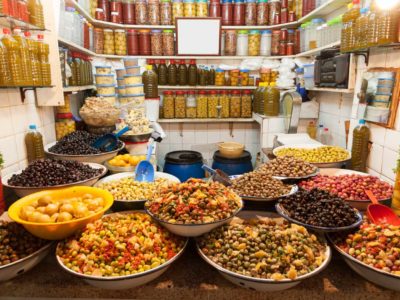
Traditional Moroccan Food to Eat in Morocco or At Home
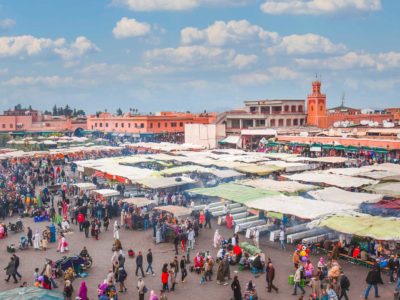
22 Best Things to Do in Marrakech, Morocco
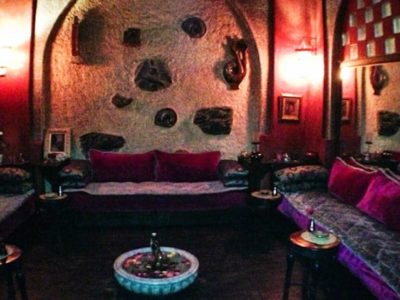
Hammam Spa Tips – Our Surreal Moroccan Massage Experience
Travel to Morocco: A Complete Guide (Tips + Morocco Itinerary).
- By Sarah Steiner
- Updated On April 22, 2024
Welcome to our Morocco Travel Guide! It’s safe to say we love Morocco. It’s April 2024 and we are just wrapping up SIX months of travel to Morocco.
We arrived by ferry from Spain and have hugged and surfed the beautiful Atlantic coastline. We loved the contrast of the famous imperial cities (Fes, Marrakech, Chefchaouen) and desert towns (Ouarzazate, Merzouga and Zagora) heading all the way inland to the Sahara Desert. And we ventured way down south to camel markets (Guelmim), historic settlements (Sidi Ifni) and surfing hotspots (Taghazout, Tamraght and Dakhla).
So now; after six incredible months of travel to Morocco here is our complete Morocco Travel Guide and itinerary with everything you need to know for an epic trip to Morocco of your own!
In this Morocco travel guide you will find:
- Travel to Morocco
- Best time to visit
- Visas
- Traveling to Morocco
- Data, WIFI and connectivity
- Safety in Morocco
- Money and ATM’s
- Food and alcohol
- Transportation within Morocco
- Morocco itinerary
- Places to visit in Morocco – Tangier – Chefchaouen – Fes – Rabat – Casablanca – Essaouira – Marrakech – Agadir – Merzouga – Ouarzazate – Ait Ben Haddou
- Accommodation in Morocco
- More about travel to Morocco
About Morocco, just quickly
- Full Name: The Kingdom of Morocco
- Capital: Rabat
- Official languages: Arabic and Moroccan Berber
- Religion: 99% Islam
- Currency: Moroccan Dirham (MAD)
- Population: 37,080,000 (2021)
- Time Zone: National Standard Time (UTC+1)
- Calling Code: +212
- Drives On: Right
- Credit Cards: Visa/MC accepted
- Outlets: Plug Type C and E (220 V / 50 Hz)
Travel to Morocco – the country, the people and its culture
Morocco has a unique history that has largely been influenced by its geographical placement in between Europe and Africa and bordering the entrance to the Mediterranean Sea.
Size-wise it is a large country and has an incredibly varied landscape and culture in the different directions of each border. But one thing that is constant all over the country is the Moroccan culture and warm hospitality.
On the northern Atlantic coast the first cities that welcome any traveller are the coastal towns of Tangier and Asilah.
Inland, the famous imperial cities of Marrakesh and Fez do not disappoint. Marrakesh is more modern and popular as a starting point, but Fez is iconic and traditional and definitely worth adding to your Morocco itinerary.
Agadir, Rabat and Casablanca are Morocco’s other large cities and offer the coastline as well as street food and the famous Hassan II Mosque (the only mosque you can visit as a tourist in Morocco).
The Atlas Mountains provide truly stunning scenery and are popular as a destination for trekking and exploring or just as a daytrip from Marrakech.
And hidden away in the Rif Mountains, Chefchaouen is arguably Morocco’s most iconic and prettiest town.
Read more about options to choose the best Morocco itinerary below.
Do I need a visa to travel to Morocco?
Citizens of the following countries and territories can enter Morocco visa-free for up to 90 days (unless otherwise noted):
- All European Union member states, Algeria, Andorra, Argentina, Australia, Bahrain, Brazil, Burkina Faso, Canada, Chile, China, Colombia, Cote d’Ivoire, Dominican Republic, Gabon, Indonesia, Japan, Kuwait, Liechtenstein, Macao, Malaysia, Mexico, Monaco, New Zealand, Niger, Norway, Oman, Peru, Philippines, Qatar, Russia, San Marino, Saudi Arabia, Senegal, Singapore, South Korea, Switzerland, Togo, Tunisia, Turkey, United Arab Emirates, United Kingdom, United States.
Visa-free entry for Morocco is valid for both airport and land borders for the countries listed above.
Other foreign nationals wishing to enter Morocco must obtain a visa prior to arrival.
On July 10, 2022, the Moroccan government launched an e-Visa system to facilitate the granting of visas to foreign nationals subject to this formality.
Best time to visit Morocco
Traditionally, the best time to visit Morocco in terms of the weather is during the spring (April and May) and autumn (September and October) months. This is when the climate is pleasant and summery throughout the country without being too hot for day-time exploration.
However, in our experience we would also recommend the wintertime (December, January and February) as a perfect escape from the Northern-hemisphere. And to make the most of the sunshine and pleasant day-time temperature. Winter is also a good time to explore the south and the Sahara fringes and further inland without overwhelming heat. Albeit do remember that even in the desert it can get bitterly cold during the night.

Getting to Morocco
Morocco is geographically located in North Africa. It is possible to travel to Morocco by air, land and sea.
Travel to Morocco by air
Morocco has 8 main international airports. Casablanca is the country’s major airport and hub for the national carrier, Royal Air Maroc.
International airports in Morocco:
Travel to Morocco by land
If you want to travel to Morocco by land, know that it shares a border with two countries: Algeria and Mauritania.
The border between Morocco and Algeria is closed and has been closed for years. But it is possible to cross the border from Morocco to Mauritania.
- Read all about crossing the Morocco – Mauritania border from Dakhla to Nouadhibou here.
Travel to Morocco by sea
It is also possible – and easy – to enter Morocco at the port borders in the north of the country at:
- Tangier Med
It is possible to bring a vehicle or motorhome with you to Morocco on the ferry from Europe. (This is what we did).
- Read all about how to travel to Morocco with a motorhome on the ferry from Algeciras, Spain to Tangier Med .
Is it safe to travel to Morocco?
Morocco is regarded as a safe country to travel to. Crime rates are relatively low. And in all our travel to Morocco we have never felt unsafe or questioned our safety.
The country has seen a huge rise is visitor numbers in recent years as tourists – especially from Europe, UK and USA – are looking for an off the beaten track and unique travel experience. And along with travel anywhere that is more adventurous, aspects such as public safety, hygiene standards, and societal norms may be different to what you are used to.
It is expected that you respect and understand its laws and cultural customs and adhere to the status quo.
Unfortunately Morocco does sometimes have a reputation for scams and pickpockets, especially in the public spaces of tourist hotspots like Marrakech, Fes and Essaouira. Much of Morocco’s economy depends on tourism and petty crime and ‘tourist traps’ can catch a visitor by surprise. Keep your valuables safe and carry small amounts of cash. And as with any travel around the world it is important to be aware of your surroundings.

Internet connectivity and WIFI in Morocco
In general, internet and WIFI connection is good (surprisingly so by travel standards) across the country. Hotels and accommodation in the cities will have WIFI available (at varying speeds). In the desert regions and further south in Morocco the connection is often weaker.
If you rely on WIFI for work I suggest tethering to your SIM card with data. See below, but the mobile networks are often faster and more reliable.
SIM cards and data
There are three mobile network operators: Maroc Telecom, Orange and INWI.
It is easy to buy a prepaid SIM card on arrival at the airports and at Tangier Med (ferry port). And in the cities you will see roving vendors wearing branded t-shirts of the different network providers selling SIM cards and recharge vouchers.
Data is inexpensive and it is straightforward to recharge prepaid connections using scratch cards that can be purchased at kiosks and convenience stores all over the country.
- Read all about buying a SIM card in Morocco and how to get unlimited data.
Get a VPN for traveling in Morocco
You should always use a VPN when you travel. And especially when you connect to public Wi-Fi networks.
Your connection with a VPN will be much safer. And you will be able to access any content that is typically censored or blocked in Morocco.
Money, currency and cash when you travel to Morocco
The Moroccan dirham is the official currency of Morocco.
- 10 MAD = 1 USD
- 100 MAD = 10 USD
- 1000 MAD = 100 USD
Dirham are available in banknotes of 20, 50, 100 and 200. Coins are available in denominations of 1/2, 1, 2, 5 and 10 dirham.

ATMs in Morocco
You can find ATMs in the main cities and towns in Morocco.
Credit cards (VISA and Mastercard) are accepted at mainstream city accommodations, high-end restaurants, large supermarkets and shopping malls.
However, Morocco is a cash-based society. You will need to always carry cash with you in Moroccan Dirham.
ATMs in Morocco will give you a maximum of 2,000 – 4000 MAD per transaction (approximately 200 – 400 EUR/USD.)
These are the ATM’s in Morocco we have used (mostly successfully) to withdraw local currency:
- Societe Generale
- Attijariwafa Bank
- Banque Populaire
Morocco has fairly high withdrawal charges with a standard withdrawal fee (regardless of amount withdrawn) of 35 MAD.
How much does it cost to travel to Morocco?
It really depends on how long you have, where you go and ultimately your Morocco itinerary.
Typically, meals costs somewhere between 5 and 10 USD. Accommodation in Morocco usually includes breakfast.
- Bottle of water (1.5L): 6 MAD
- Bread: 1.5 MAD
- Tagine (2 person): 50 MAD
- Cappuccino: 15 MAD
- Orange juice (fresh): 10 MAD
- Sprite or Coke (330ml): 6 MAD
- Sandwich/Panini: 35 MAD
- Meal at McDonalds: 65 MAD
- Bananas (1kg): 15 MAD
- Milk (1L): 8 MAD
- Beer (330ml): 25 – 40 MAD
- Wine (750ml): 60 – 110 MAD
- Petrol (1L): 14 MAD
- Diesel (1L): 13 MAD
Food and alcohol in Morocco
There’s a lot more to Moroccan cuisine than couscous and tajines. The traditional foods of Morocco are mouth-watering.
Moroccan dishes are influenced by Berber, Jewish, Arab, Spanish and French cultures. And food plays a very important role in traditional Moroccan culture and is seen as a symbol of hospitality.
Alcohol isn’t readily available around the country. But it is legal to drink alcohol in Morocco. Many larger hotels will serve alcohol and in the cities (Marrakech, Fes, Essaouira, Agadir) there are restaurants and bars in and around the medina that serve alcohol.
Food in Morocco you need to try
The most common food items you will come across on your travel in Morocco include slow-cooked meats, couscous, bread, dates and sweets and of course, Moroccan mint tea. LOTS of mint tea.
- Tagine: Slow-cooked meat and vegetables cooked and presented in a conical-shaped clay pot.
- Couscous: Originally from Morocco and typically served with meat or vegetable stew. Traditionally prepared on Friday and served for special occasions.
- Harira: Lentil soup usually served as a starter or used during Ramadan to break the fast at dusk.
- Bastilla: Flaky pie traditionally made with pigeon or chicken.
- Khobz: Crusty bread typically baked in communal wood-fired ovens and served with meals.
- Bissara: Hearty soup made from dried fava beans and commonly served during breakfast
- Tanjia: Like tagine, meat slow-cooked in a covered clay pot.
- Chebakiya: Flower-shaped, fried sesame cookie dipped in honey.
- Kaab el Ghazal (Gazelle Horns): Crescent-shaped pastires made with almond paste, orange flower water and cinnamon.

Language for your travel to Morocco
Arriving in Morocco you’ll quickly discover that the language spoken amongst Moroccans is an amazing blend of Arabic, French, Berber (Amazigh) and sometimes a little English (or even Spanish). And without doubt the people you encounter and interact with will appreciate your effort at speaking a bit of their language.
- Hello: As-salaam Alaykum (literally means peace be with you)
- And unto you peace – Walaykum As-salaam (said in response to the above)
- Thank you: Shukran
- You’re welcome: Al ‘afw
- How are you? Labas?
- Good: Mezya
- How much? Be kam?
- Please: Afak
- Delicious: Hadshi bneen
- Yes: Wah
- No: La
A greeting of ‘Salam’ is always received with a smile.

Transportation for your travel to Morocco
Public transportation is an adventure in itself when traveling in Morocco. It can be hit or miss with taxis and buses between cities or taking a shared taxi. The bigger cities like Marrakech and Casablanca have public bus routes within the city but the buses are often old and overcrowded and don’t necessarily follow a route or timetable…
But, travel to Morocco is an adventure and that is what we are here for; right?
Travel in Morocco by train
The best way to travel between Moroccan cities is by train. Morocco now has Africa’s fastest trains traveling at 300km/h (186mph) linking Tangier, Rabat and Casablanca every hour over a new high-speed line. Classic trains link northern Tangier and Casablanca with Meknes, Fes and Marrakech.
Travel in Morocco by rental car
Renting a car in Morocco gives you the ultimate freedom to explore in any direction and at your own pace of travel. Car rental in Morocco costs between 15 and 50 USD a day. The price will depend on the company that you rent with and the model you rent. Don’t be put off by concerns of self-navigating Morocco.
- Read our complete guide to driving in Morocco .
Travel in Morocco by plane
RAM (Royal Air Maroc) operates domestic flights from Casablanca to six major cities in Morocco. You will usually have to change planes at Casablanca, unless both points are stops on a single Casa-bound flight. In general domestic flights are expensive, but it will save you a lot of time.
Travel in Morocco by bus
Intercity buses are the most common mode of transport between cities in Morocco and are a cheap and efficient way to get around.
The most popular bus companies are:
- Ghazala
It is possible to book tickets online for Supratours and CTM or you can book in person at the bus station (easier; and definitely more reliable).
Buses between cities are reasonably priced with a ticket between Marrakech and Casablanca between 80 – 110 MAD ($8 – $11 USD) per person for the 4-hour bus ride.
Travel in Morocco by taxi
There are different types of taxis to get around Morocco. The most common are shared taxis (which in essence operate a bit more like a mini-bus system):
- Petit taxis: These are small cars to get around town and can hold up to three people (yes; only three passengers are allowed at a time). They’re very cheap to use and you can just wave one down and check with the driver where he is going and negotiate your price upfront.
- Grand taxis: These are shared taxis that can carry up to six passengers. They often won’t leave the taxi station until the taxi is full but because they are so popular the wait is not usually long. You can locate a grand taxi near any taxi stand.
- Private taxi: Operates the same as any taxi anywhere. Not all taxis are metered so make sure to negotiate and agree on a fare before driving.
Morocco itinerary options
This is the juicy part of our Morocco travel guide. From here we are going to talk about our itinerary in Morocco as well as the unmissable and best things to do in Morocco and places you need to see.
It really depends what you want to see in your travel to Morocco. Because Morocco really seems to have it all!
So whether you are looking for a relaxing riad, and Instagram-worthy vacation, history, a desert adventure or sunshine and surf. Morocco truly has it all.
Ready?

Three 10-Day Morocco itinerary options
Here are three Morocco itinerary options for a 10-day adventure (or vacation) in Morocco. All of the places to visit in Morocco are listed below with highlights and things to do in each place so you can adjust and adapt your Morocco itinerary accordingly.
North to Sahara 10-Day Morocco Itinerary – Option 1
- Day 1 : Arrival in Tangier (1 Night)
- Day 2 : Chefchaouen (1 Nights)
- Day 3 : Volubilis & Meknes (Day Trip)
- Days 3 – 4 : Fes (2 Nights)
- Days 5 – 6 : Sahara Desert – Merzouga (2 Nights)
- Day 7 : Ouarzazate and Ait Ben Haddou (1 Night)
- Day 8 : Marrakech (2 nights)
- Day 10 : Departure from Marrakech
Coast to Desert 10-Day Morocco Itinerary – Option 2
- Day 1: Arrival in Agadir – Tamraght (1 Night)
- Day 2: Tamraght and Taghazout (1 Niight)
- Day 3: Tamraght to Marrakech (1 Night)
- Day 4 – 5: Sahara Desert Trip (2 Nights)
- Day 6: Ouarzazate and Ait Ben Haddou (1 Night)
- Day 7: Return to Marrakech (1 Night)
- Day 8: Marrakech (1 Night)
- Day 9: Day trip Marrakech to Ourika Valley (1 Night)
- Day 10: Departure from Marrakech
Imperial 10-day Morocco Itinerary – Option 3
- Day 1: Casablanca (1 Night)
- Day 2: Chefchaouen (1 Night)
- Day 3: Fez (stopping off at Volubilis en route) (1 Night)
- Day 4: Marrakech
- Day 5 – 6: Sahara Desert Trip (2 Nights)
- Day 7: Ouarzazate and Ait Ben Haddou (1 Night)
- Day 8 – 9: Marrakech

Travel to Morocco – Places to visit on your Morocco itinerary
Travel to Morocco is unlike anywhere else in the African continent. Geographically the country is long and thus the culture is diverse and different from top to bottom. We have spent more than six months travel in Morocco. And we’ve seen a LOT.
But to summarise travel to Morocco in one Travel Guide we have chosen the likely main stops on your Morocco itinerary and the three best things to do in Morocco for each place.
Tangier is a port city in the north of Morocco steeped in history and entangled in the literal maze of streets in the old medina. It’s hard to fathom that this magical escape to Africa is barely an hour’s boat ride away from Europe.
Things to do in Tangier
- The Kasbah: Pass under Bab Haha gate and enter the Kasbah in Tangier with the maze of cobbled alleyways and sweeping hilltop views of the Atlantic Ocean and Mediterranean sea.
- Tangier Grand Mosque: Originating in the 5 th century the mosque was once the site of a Roman temple. During the 8 th century it became a place for Muslim prayer until the Portuguese conquest in the late 15 th century when it was converted to a cathedral and subsequently back again to a mosque.
- Petit Socco: A hub of activity – historic and otherwise – in the centre of Tangier. The best choice to plonk yourself and drink mint tea and watch the world go by.
Chefchaouen
Chefchaouen is a city in the Rif Mountains to the northwest of Morocco and known for the striking, blue-washed buildings of the old town. There are many different theories to why Chefchaouen is so blue.
Things to do in Chefchaouen
- Take in all the BLUE: Chefchaouen is the ultimate Moroccan medina for wandering and photography. There are endless enchanting squares, doorways and dead-end alleys that are all very photogenic.
- Visit the Souk: If you happen to be in Chefchaouen on a Monday or a Thursday you should definitely visit the souk.
- See the view from the Spanish Mosque: The best place for a beautiful panoramic view of Chefchaouen is at the Spanish mosque. This mosque sits on the hillside and it is a pleasant 45-minute walk to get there.
Fes is a UNESCO world heritage site and home to the oldest and largest medina in North Africa. The city was once the capital of Morocco and is now regarded as the cultural epicentre of the country.
Things to do in Fes, Morocco
- Jnan Sbil Gardens (Bou Jeloud): This peaceful slice of nature is the only public garden in Fes medina. Relax, cool down and join Fes locals enjoying the park too. The park is open Tuesday – Sunday between 8AM – 7:30PM.
- Bou Inania Madrasa: Opposite the Grande Mosquée, this religious school, completed in 1358 is a historic madrasa (Islamic learning centre) in the city of Fes.
- Fes Tanneries: Be sure to check out the iconic tanneries of Fes! Take in the world-famous smells and discover hundreds of earthen pits full of coloured dye used to colour animal skins. The tanneries are a unique part of Fes culture and a must-see in travel to Morocco.
The capital city of Rabat is often overlooked as a destination for travel to Morocco. It is a modern city today but like it’s neighbours it boasts a rich history with another lively Moroccan medina.
Things to do in Rabat
- Visit the medina: The medina and kasbah of Rabat are two different but connected areas. While much of Rabat is extremely modern, the medina still has reminders of a historic and different kind of life.
- Try a street food sandwich: Eenter the medina and hunt down the viande hache (mincemeat) sandwich in fresh Moroccan bread.
- City of Sale: Just across the Bou Regreg River from Rabat lies the smaller sister city of Salé; another interesting and often forgotten place. Salé has a fascinating history that is deeply linked to a past with dreaded pirating famed since the 1600’s.
- Visit Chellah: Overlooking the lush Bou Regreg River on the Rabat city side is Chellah, a picturesque fort that dates back to the Phoenician times in the third century B.C.

Casablanca is a port city and commercial hub in western Morocco and the largest city in the country.
Things to do in Casablanca, Morocco
- Hassan II Mosque: No trip to Casablanca is complete without visiting the spectacular Hassan II Mosque; the only mosque in Morocco open to non-Muslims.
- Morocco Mall: Located at the end of La Corniche area is Morocco Mall – the biggest shopping mall on the African continent.
- Old Medina: Starkly contrasting the modern mall; the old medina of Casablanca is a vibrant and fascinating place to wander (and drink tea and eat fresh, hot M’smen).
Marrakech
Morocco’s most well-known city is a sensory experience of vibrant colours, flavours, smells, sounds and unique sights. It’s world-famous for the maze of markets and shopping in old city medina but there are plenty more things to do in Marrakech.
Things to do in Marrakech
- Jamaa el Fnaa: The main square of the Marrakech medina is the literally-bustling heart and hub of the city and an experience of culture, chaos and shopping like nowhere else!
- Try a Moroccan hammam: This is a must-do during your travels in Morocco. A hammam is a public bathhouse and the experience really is one of the highlights (and out-of-comfort-zone adventures) of the culture.
- Jardin Marjorelle: Visit the famous gardens and vibrant blue house once owned and restored by Yves St Laurent. A truly tropical desert oasis in the midst of the busy city.

Essaouira
Essaouira is a port city on the Atlantic coast. Just a walk in the port vicinity feels like more than a world away from Europe.
Trade winds make Essaouira popular for surfing, kitesurfing and windsurfing. And it isn’t as overcrowded as Marrakech or Fes. It is one of the most underrated destinations for travel to Morocco.
Things to do in Essaouira
- Essaouira medina: The labyrinth of alleyways in the old city are an assault on the senses (in a good way) with colourful souvenirs, handicrafts, Moroccan rugs and shoes.
- Surfing: Trade winds make Essaouira a fantastic alternative for a Morocco vacation away from the big touristy cities. There are plenty of surf shops, windsurfing and surfing schools that are great for beginners.
- Fish market and port: Essaouira was the main fishing port for Morocco in the 1900’s and today fishing boats line the harbour where each day they sell their catch. It’s interesting for a walk or choose your own seafood to be cooked fresh at the many restaurants.
The Hollywood of Africa! Ouarzazate really is like a mini-Hollywood in Morocco. There are many cool sites to visit and the city is just a hop, skip and a jump from the even more iconic Ait Ben Haddou.
Things to do in Ouarzazate
- Visit Ben Haddou: A 30 minute drive from Ouarzazate, Ait Ben Haddou is an ancient village of earthen clay buildings that dates back to the 1600s.
- Atlas Film Studios: With cheap production costs and desolate scenery, Ouarzazate has been a Hollywood base for over 200 movies and television programmes filmed at Atlas Studios including, Gladiator, Ben Hur, Game of Thrones, The Mummy, Passion of Christ, and Black Hawk Down.
- Kasbah Taourirt: A citadel in the centre of Ouarzazate set up as a museum showcasing the historic vantage point of the city on the trade routes from Sub-Saharan Africa.

Agadir
Agadir is a city on Morocco’s southern Atlantic coastline connecting to the foothills of the Anti-Atlas Mountains.
Things to do in Agadir
- Souk el Had: Agadir’s main souk with over 6000 vendors selling everything from spices, fruits and vegetables through to clothes, perfumes, carpets, pottery, and electronics.
- Taghazout and Tamraght: Just a short drive north to the beach towns of Taghazout and Tamraght for surfing and sunshine. Anchor Point often considered to be Africa’s best surf spot.
- Agadir Beach (Plage d’Agadir): A seaside resort with deep, fine sand, cafes and restaurants galore.
Accommodation in Morocco
Riads – A Riad is a traditional Moroccan house of palace with an indoor garden and courtyard. Riad accommodation is generally located withing the old city medinas.
Hostels – Popular especially on the coast in surfing spots like Imsouane, Taghazout and Tamraght.
Hotels – In the bigger cities you can find high-end and mid-range to budget hotel options.
Desert Camps – In the Saharan region you will find nomad style camping and glamping offered in the desert.
Campsites – Morocco has an abundance of camping and motorhome campsites. Read our complete guide to campsites in Morocco.
- Booking.com – We book all our accommodation in Morocco and all over the world on Booking.com. There is a great selection of budget accommodation, beautiful riads, desert camps, hostels, and hotels. Be sure to check the filters and make the most of cancellation flexibility that we love!
Souks and markets in Morocco
Once you have refined your Morocco itinerary and chosen the direction for your travel in Morocco it is time to add in some unique things to see and do for a truly memorable trip. The weekly markets and souks in Morocco are a fascinating way to get a glimpse of traditional, rural and day-to-day life.
Here are some of our favourites:
- Zagora Weekly Market
- Tabounte Weekly Market
- Guelmim Camel Market
- Sidi Ifni Weekly Market
- Tafraoute Weekly Market
- Tamraght Weekly Market
- Agadir Weekly Anza Souk
- Ouarzazate Weekly Souk

Planning travel to Morocco – more information
These are the companies we use while traveling fulltime as a family (for five years now) and ones that we would recommend to anyone booking travel to Morocco.
- Booking.com – The best all-around accommodation booking site that constantly provides the cheapest and lowest rates. There is a great selection of budget accommodation and be sure to check the filters and cancellation flexibility that we love!
- Skyscanner – We use this for all our flights. They are able to search small websites and budget airlines that larger search sites often miss.
- GetYourGuide – Get Your Guide is a huge online marketplace for tours and excursions offered all around the world.
- SafetyWing – A global travel insurance that covers people from all over the world while outside their home country. You can buy it short or longterm; and even if you are out of the country.
- World Nomads – Travel insurance tailored for longterm travel and nomads (including those who have already left home). Make sure you have travel insurance before traveling to Morocco!
Read our other guides and articles for traveling in Morocco
- Taking the ferry from Spain to Morocco.
- Everything you wanted to ask about driving in Morocco.
- Crossing the Morocco Mauritania border from Dakhla to Nouadhibou.
- Motorhome services in Morocco.
- A guide to campsites in Morocco.
- Buying a SIM card in Morocco (and how to get unlimited data).
Wondering about itineraries? Questions about schooling? See our Family Travel Guides and FAQ here .
Top Destinations
- Cook Islands
- New Zealand
Latest Posts
How to do the ceuta border crossing from f’nideq, morocco to ceuta (spain)., 18 fantastic things to do in rabat, morocco. , 18 things to do in the art deco-famous town of sidi ifni, morocco. , 13 top things to do in tiznit, morocco., 20 top, historic and tasty things to do in taroudant, morocco., 14 best things to do in the mountain oases of tafraoute, morocco..

We are the Steiners: Sarah, Gavin, Harry and Oscar – a family from New Zealand with a love of travel and adventure together… Especially where it takes us off the beaten track!

Away with the Steiners uses affiliate links. That means that if you buy something through these links, we may earn a commission at no extra cost to you.
Leave a Comment Cancel Reply
Your email address will not be published. Required fields are marked *
Save my name, email, and website in this browser for the next time I comment.
Notify me of new posts by email.

Morocco Travel Guide
Looking for an in-depth Morocco travel guide ?
Then you’re in the right place!
Morocco is high on many traveler’s bucket lists — and for good reason! This North African country is rich with history and culture as well as absolutely breathtaking landscapes.
Of course, anyone planning a trip to Morocco will want to visit the bustling cities of Marrakech and Casablanca with their iconic markets, Moorish-style buildings and historic attractions.
But there is so much more to see in this gem of the Middle East.
Morocco is full of incredible sites, from beautiful landscapes to truly unique cities and villages.
No trip to Morocco is complete without a visit to Chefchaouen, or the “Blue City,” a city in the Rif Mountains full of striking blue-washed buildings. And the country’s natural wonders like the Sahara Desert are not to be missed!
Keep reading to dive into resources from Jessie on a Journey as well as its sister site Epicure & Culture that will help you with planning a trip to Morocco.
Note: This guide to Morocco travel contains affiliate links to trusted partners!

What would you add to this Morocco travel guide?
Morocco map.
Use this Morocco travel map to begin planning your trip!
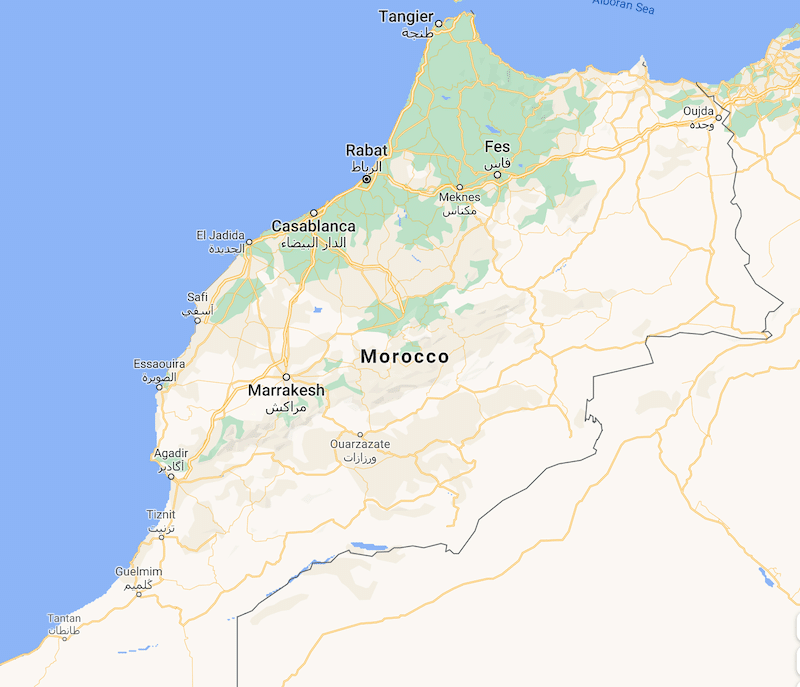
Click here for an interactive version of the above map.
Morcco Travel Tips
The following advice can help you plan an unforgettable trip to Morocco.

Solo Female Travel In Morocco: The Ultimate Guide (With Map!)
Best Places To Visit In Morocco
Learn about the top places to visit in Morocco .
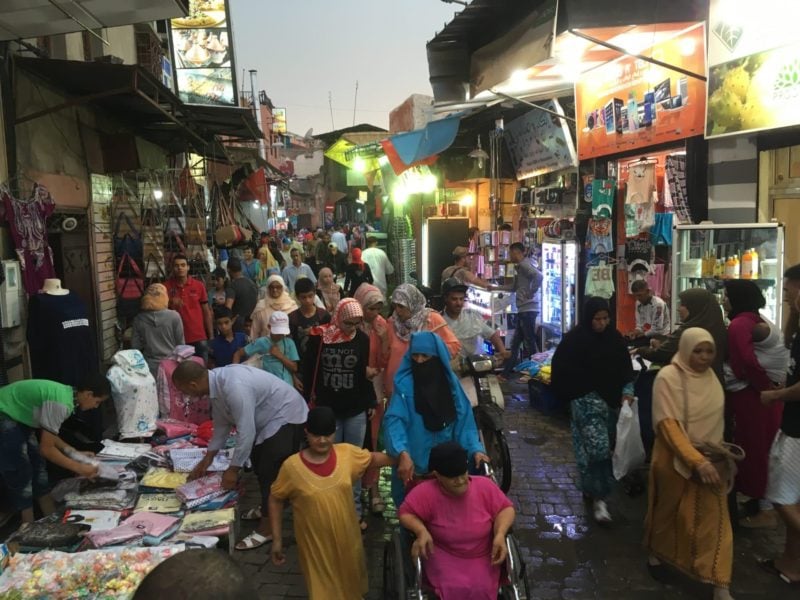
An Unexpected Adventure At Morocco’s Marrakech Bazaar
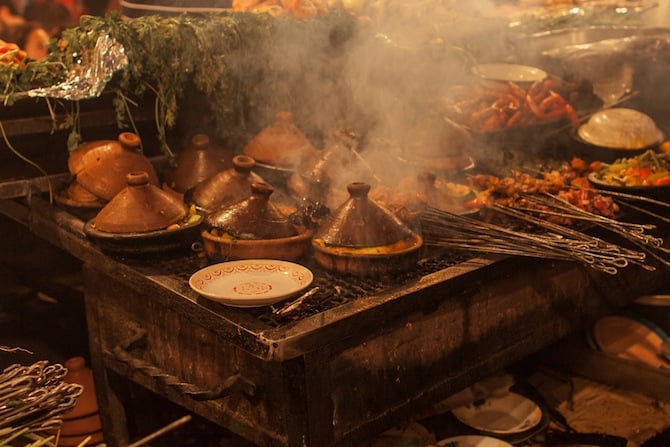
Food, Culture And Going Beyond The Tourist Trail In Marrakech, Morocco
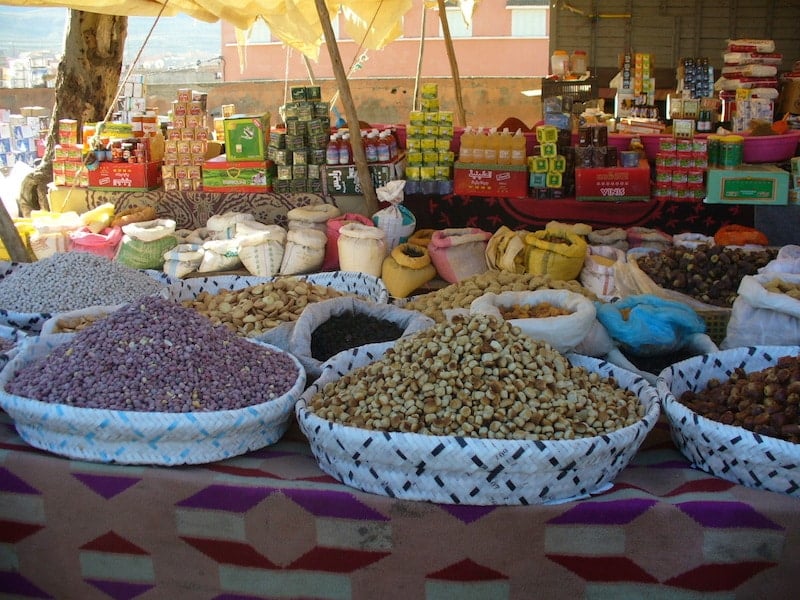
Dining & Dancing With Berbers Near The High Atlas Mountains Of Morocco
Exploring Moroccan Culture
Immerse yourself in local culture when you visit Morocco .
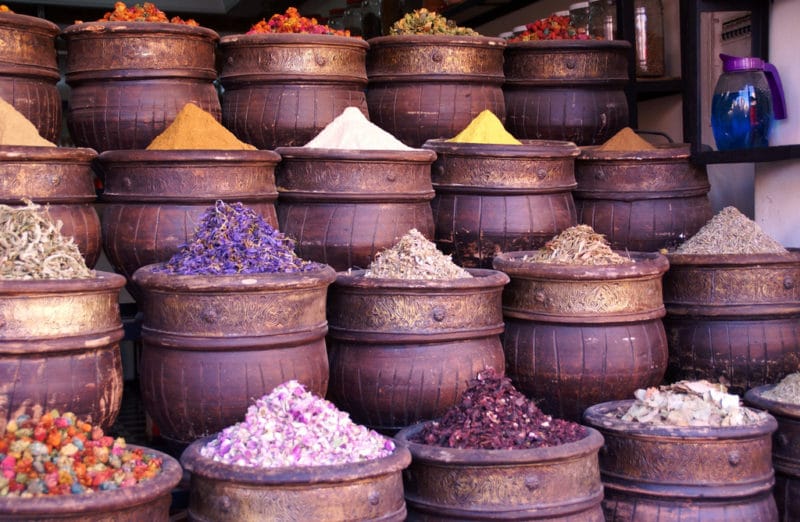
Exploring Holistic Berber Rememdies In Morocco
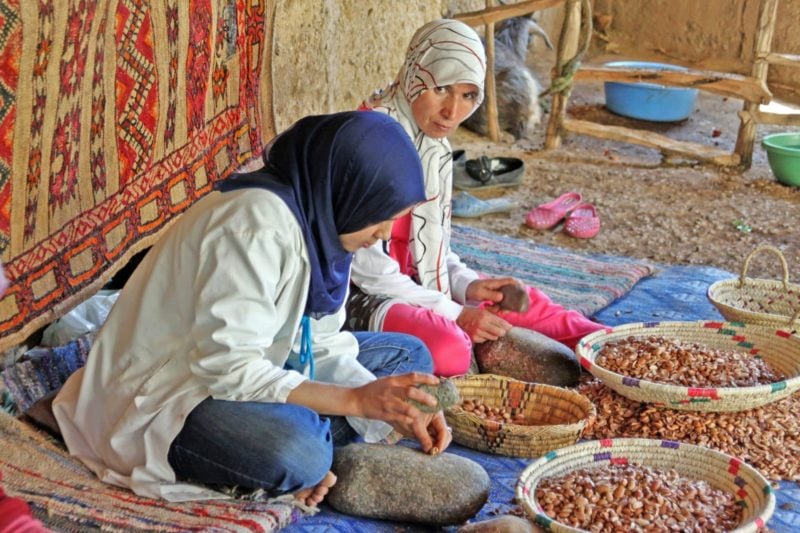
How To Support The Women In Morocco Who Give Us Argan Oil
Explore Morocco Through Food
Add these culinary experiences to your Morocco travel itinerary .
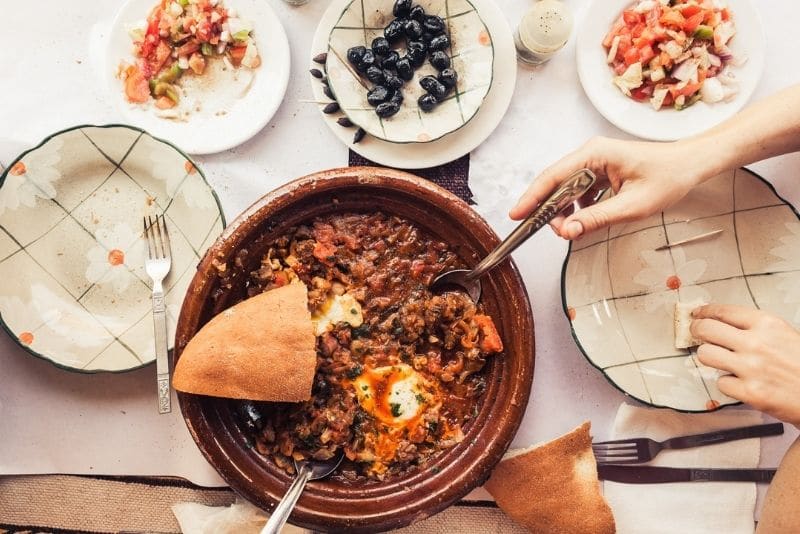
Why Traditional Moroccan Cooking Is An Expression Of Love
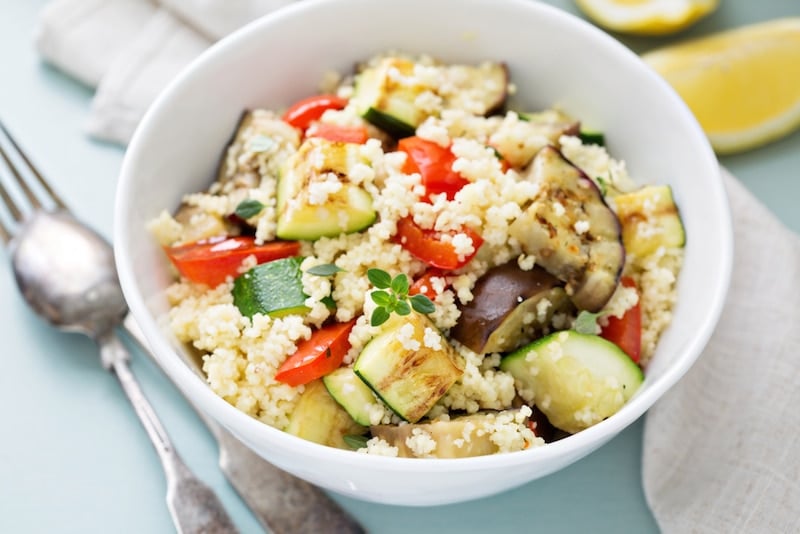
This Moroccan Couscous Recipe Will Immerse You In Authentic Culture
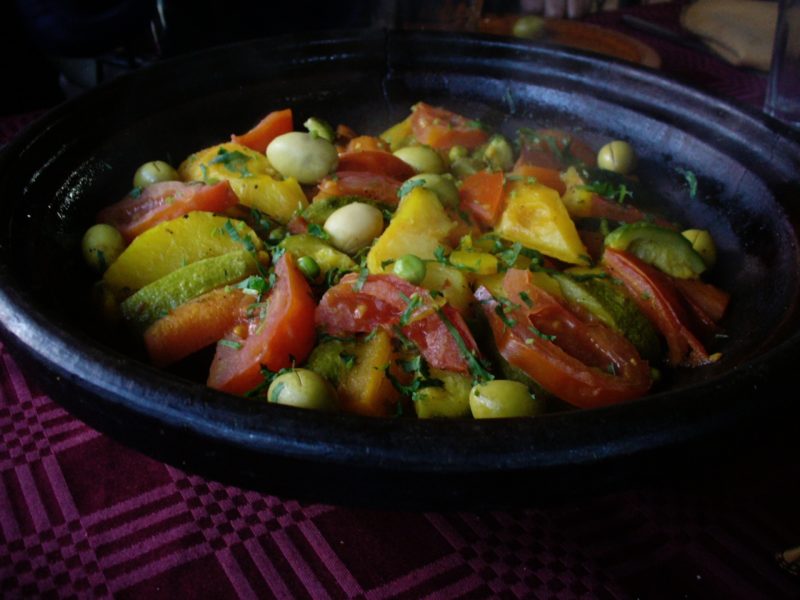
The Tajine: Morocco’s Pride & Passion

Top Morocco Tours
Book a Morocco tour and get to know the culture through a local.
- Sandboarding With Lunch In A Berber House In Agadir
- Visit a Souk and Cook Moroccan Food in Marrakech
- Quad Bike Adventure In Agadir
Morocco Travel Insurance
It doesn’t matter if you’re traveling solo or with a group on a Morocco tour. When visiting Morocco — or any other country in the world — make sure to get travel insurance to protect your health and safety.
In my opinion, the best travel medical insurance for travelers is SafetyWing as they’ve got a large network and offer both short-term and long-term coverage — including coverage if you’re traveling for months as well as limited coverage in your home country).
Additionally, SafetyWing is budget-friendly and offers $250,000 worth of coverage with just one low overall deductible of $250.
With coverage, you’ll have peace of mind as you embark on your Morocco itinerary.
Click my referral link here to price out travel insurance for your trip in just a few clicks .
Morocco Hotels
Click here to browse hotels in Morocco!
Prefer self-contained stays?
Click here to check out unique local rentals!
You can also use this map to search for local stays:
Renting A Car In Morocco
Need a rental car for your Morocco trip?
Use Discover Cars to quickly compare your car rental options.
Morocco Train Travel
Getting around Morocco by train, bus, or ferry?
Omio is a must! It’s a great tool for all of your public transportation needs.
The site is straightforward and user-friendly — and you can pre-book your tickets in advance at a discount.
They even offer flight and car deals!
Morocco Travel Guide FAQ
Below, find answers to frequently asked questions about traveling Morocco .
Q: Is it safe to travel in Morocco?
Though the Middle East and North Africa can be volatile destinations, Morocco is considered one of the most peaceful countries in the region according to the latest Global Peace Index.
That said, it’s important to exercise caution and keep your guard up when visiting Morocco, particularly for women travelers and solo female travelers . That being said, you can absolutely travel alone in Morocco and stay safe.
Street harassment is a common experience for both female travelers and local women. Experts suggest traveling with a companion, dressing conservatively, and considering a group tour in the country if safety is top of mind.
Intrepid Travel is a great sustainable operator that runs tours in Morocco, like these .
Q: What is the best month to travel to Morocco?
The spring and fall months are considered the best times to visit Morocco as the temperatures are comfortable and perfect for sightseeing. The country’s coastal destinations like Safi and Essaouira experience mild weather year-round and are great to visit any time.
Be sure to check the Islamic calendar when planning your trip, though, as transportation and business schedules change considerably during the month of Ramadan and many places may be closed altogether.
Q: What should I avoid in Morocco?
The main things you’ll want to avoid while visiting Morocco are scams. This includes everything from the “Magic Carpet Scam,” in which a shop owner will try to convince a tourist to buy a handmade rug to resell at a mark-up back at home, to taxis with “broken” meters.
Beyond watching your wallet, you’ll want to avoid disrespecting the people of Morocco. Dress a bit more modestly than you would at home, don’t take photos of people on the street without their consent, and be mindful of local religious customs and practices.
Q: What are the best places to visit in Morocco?
The famous cities of Casablanca, Marrakesh, and Fez should not be missed when visiting Morocco, but the country has so much more to offer beyond these destinations. The port city of Tangier is worth visiting for its gorgeous whitewashed medina and colorful alleys. Foodies and hikers alike should definitely visit High Atlas , North Africa’s highest mountain range home to markets full of delicious eats. And pop culture junkies will want to make a trip to Essaouira, a popular beach hangout of 1960s rock stars like Jimi Hendrix and a one-time shooting location for Game of Thrones !
Q: Do I need a visa to visit Morocco?
A visa is not required for US citizens visiting Morocco for less than 90 days. The same is also true for visitors from the European Union, the United Kingdom, Canada, Australia, and several other countries and regions throughout the world.
It’s recommended to view your country’s Morocco International Travel Information page for the most up-to-date information on entry and exit requirements. You can also contact the Embassy of Morocco.
Q: Are credit cards accepted in Morocco?
Credit and debit cards are widely accepted in tourist areas of Morocco, with Visa and Mastercard being the most widely accepted cards. Even when you bring a credit card with you, it’s also wise to carry a bit of cash.
Q: What is the local currency in Morocco?
The local currency in Morocco is the dirham.

Enjoyed this guide to Morocco travel? Pin it for later!
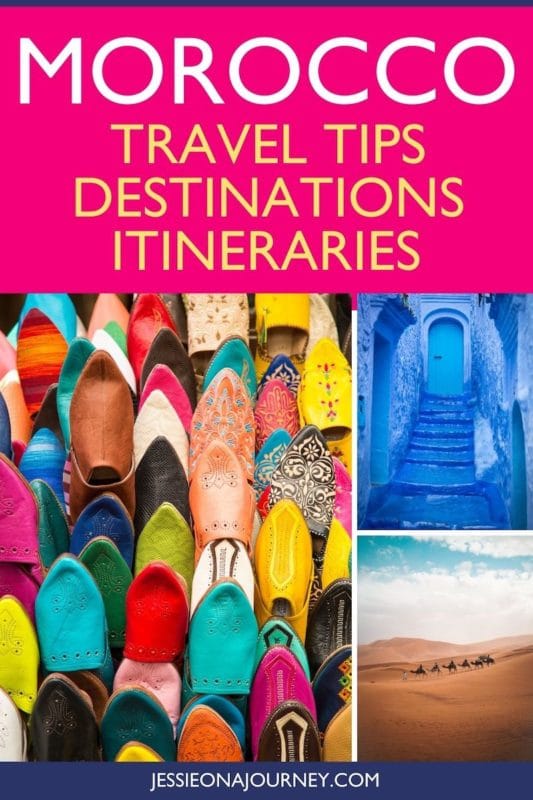
Travel Guide Morocco
Book your individual trip , stress-free with local travel experts
- roughguides.com
- Travel guide
- Itineraries
- Local Experts
- Travel Advice
- Accommodation
Plan your tailor-made trip with a local expert
Book securely with money-back guarantee
Travel stress-free with local assistance and 24/7 support
Fatima Vieira
Our experience was amazing. Very well organized. During our stay there was a problem with a Riad , Insight guides solved the problem in a very professional...
For Western visitors, Morocco holds an immediate and enduring fascination. Though just an hour’s ride on the ferry from Spain , it seems very far from Europe, with a culture that is almost wholly unfamiliar. Travel to Morocco and you will uncover a country of arid deserts, spice-laden souks, and a melting pot of Berber and Arabian cultures.
Morocco travel facts
Where to go in morocco, best time to go to morocco.
- How to get to Morocco
How to get around Morocco
10 best places to visit in morocco, morocco travel itineraries, accommodation in morocco, food and drink in morocco, culture and etiquette in morocco, travel visa requirements for morocco, shopping in morocco, outdoor activities in morocco, arabs and berbers.
Throughout the country, despite the years of French and Spanish colonial rule and the presence of modern and cosmopolitan cities like Rabat and Casablanca , a more distant past constantly makes its presence felt. Fez , perhaps the most beautiful of all Arab cities, maintains a life still rooted in medieval times, when a Moroccan kingdom stretched from Senegal to northern Spain.
In the mountains of the Atlas and the Rif , it’s still possible to draw up tribal maps of the Berber population. As a backdrop to all this, the country’s physical make-up is extraordinary: from the Mediterranean coast, through four mountain ranges, to the empty sand and scrub of the Sahara . Check out our Morocco travel guide for everything you need to know before you go.
- Size and location: Located on the northwest coast of Africa, Morocco is slightly smaller than France and Spain, and slightly larger than the US state of California at 446,550 square kilometres (722,550 sq km including the Western Sahara).
- Population: 37 million.
- Religion: Nearly 99 percent of Moroccans are Muslim, with 1 percent Christian and a tiny minority (an estimated 6000 people) Jewish.
- Languages: Arabic, Berber (Tarfit, Tamazight and Tashelhaït) and French are officially recognised languages. Spanish is still widely spoken in the north, and English is increasingly spoken by young people, especially in tourist areas.
- Politics: Morocco gained independence from French and Spanish rule on March 2, 1956. The head of state is King Mohammed VI, who succeeded his father Hassan II on July 30, 1999. The government is chosen from an elected legislature and is currently run by Prime Minister Saadeddine Othmani of the moderate Islamist PJD (Party of Justice and Development). The main opposition parties are the Istiqlal (Independence) Party, Morocco’s oldest political group, and the RNI (National Rally of Independents).
- Education: The literacy rate is 68.5 percent (78.6 percent for men, 58.8 percent for women).
With relaxing beach resorts on the coast, beautiful ancient cities inland, stunning landscapes of the Rif and Atlas mountains, and the eerie solitude of the Sahara desert, visiting Morocco won’t leave you disappointed.

To experience the best of Morocco’s coast and beaches in the north, head for the cities of Tangier , Asilah , and Larache. For the best coastal spots towards the south, El Jadida , Essaouria , and Sidi Ifni are the standout contenders. Agadir is the main package-tour destination, and whilst nothing special, it provides a good base for exploration.
Inland, the famous, and somewhat still medieval cities of Fez and Marrakesh , do not disappoint. The former is richer in terms of monuments, but the latter remains more popular among tourists. Rabat and Casablanca are also major cities of interest, albeit much more modern than the Fez and Marrakesh.
The mountain ranges of the Rif and Atlas provide stunning scenery, and are surprisingly accessible for trekking and exploring . Trekking is most popular around Jebel Toubkal, North Africa’s highest mountain. Hidden away in the Rif mountains, Chefchaouen is arguably Morocco’s prettiest town and best-kept secret .
Beyond the Atlas, there is more exploring to be had in the pre-Sahara. The oases around Skoura, Tinghir, Zagora, Erfoud, and Tata, provide you with a stunning contrast of palmeries and desert horizons.
If you’re looking to explore beyond Morocco's well-known sites and attractions, check out the 7 best places to get off the tourist trail in Morocco .
Discover more places in Morocco

- Agadir, the Souss and Anti-Atlas Travel Guide
- The Atlantic coast: Rabat to Essaouira Travel Guide
- Marrakesh Travel Guide
- The Mediterranean coast and the Rif Travel Guide
- Morocco history and timeline
The best time to visit Morocco in terms of weather is during spring (around April and May) and early autumn (September and October) when the climate is pleasant and summery throughout the country.
At the height of summer, most of the country, especially the south, is far too hot for day-time exploration. Winter is a good time to explore the south and the Sahara without the overwhelming heat, but in contrast, it can get bitterly cold during the night.
Get more information on the best time to visit Morocco , as well as festivals and public holidays, in our Morocco travel guide.
Unless you take a cruise ship from France, Spain or Gibraltar, the best way of getting to Morocco is to fly into either Casablanca's Mohammed V International Airport , or Menara airport in Marrakesh. Fares are generally at their highest around Christmas and the New Year, and July and August. Weekend flights are also more expensive. For the best fares, always book as far in advance as possible.
Travelling to Morocco from Europe
Royal Air Maroc and British Airways run daily flights from Heathrow to Casablanca , and Gatwick to Marrakesh respectively. Indirect flights from most British or Irish airports via London, or European cities such as Paris and Amsterdam, are also an option.
Travelling to Morocco from the US, Canada, Australia and New Zealand
Direct flights to Casablanca from New York and Montreal are run by Royal Air Maroc and Air Canada . Indirect flights are available with European carriers by changing at their European hub.
There are no direct flights to Morocco from Australia , New Zealand and South Africa . The only option is to catch a connecting flight in Europe or the Middle East.
See our getting to Morocco page for more information on flights, ferries, and fares.
Getting around Morocco is relatively easy, with plenty of good transport options.
A decent rail network connects the main towns in the north, and the whole country is well connected by a network of nationally-run and private bus companies. The downside is that buses can sometimes be slow and overcrowded.
For shorter journeys, you may prefer to make use of Morocco’s grand taxis. Alternatively, you may wish to have the taxi to yourself, in which case you’ll pay six-times the cost of one place.
Read more on getting around Morocco : in-depth information on flights, buses, cars and trains.
With so much to see and do, deciding where to go in Morocco can be a painstaking task. To help you narrow down the options, we’ve created a list of the ten best places to visit in Morocco.
- Chefchaouen One of the prettiest and friendliest towns in Morocco, up in the Rif mountains, with a Medina full of pastel-blue houses, perfect for wandering around.
- Koutoubia Mosque Simple but beautifully proportioned, the Koutoubia Mosque’s minaret is the most perfect in North Africa, and a classic piece of Almohad architecture.
This region in the foothills of the High Atlas offers hidden walks, stunning panoramas and plenty of outdoor activities throughout the year, but is best enjoyed in the cooler months
- Cascades d’Ouzoud If you visit only one waterfall in Morocco, make it these. The most dramatic of the country’s waterfalls, with overhanging cafés, and a thunderous sheet of water that plunges into the pools below.
- Fez The most complete medieval city in the Arab world, Fez’s labyrinthine streets conceal ancient souks and iconic monuments, none more so than the exquisitely decorated Medersa Bou Inania.
- Telouet The abandoned feudal kasbah of the “Lords of the Atlas” is a hugely evocative relic of the time when the infamous Glaoui clan ruled over the Atlas and Marrakesh.
- Sidi Infi A former Spanish enclave built from scratch in the 1930s with an Art Deco town hall, an Art Deco mosque and even an Art Deco lighthouse.
- Casablanca Casa’s colonial architecture blends traditional Moroccan designs with French Art Deco into a distinctive style known as Mauresque. The city is also home to the Hassan II Mosque, one of the world’s largest, and unusually for Morocco, it can be visited by non-Muslims.
- Asilah A laidback beach resort with an intimate pastel-washed Medina, a first-class international arts festival, and the palace of an old bandit chief. Asilah is also home to one of the best beaches on the northwest coast.
- Volubilis and Moulay Idriss Visit the remarkable Roman ruins of Volubilis and stay at the holy Islamic town of Moulay Idriss.
Creating an itinerary for your visit to Morocco will depend on what you wish to see and do. Whether it’s immersing yourself in the bustling old cities of Marrakesh and Fez, hiking high up in the Rif and Atlas mountains , or seeking tranquillity in the Sahara desert , you can customise your Morocco trip to suit your needs with our tailor-made trip service .
Tailor-made travel itineraries for Morocco, created by local experts

10 days / from 2399 USD
Moroccan Cities and Ultimate Sahara
From the cities to the desert - follow the footsteps of Humphrey Bogart in Casablanca, discover the blue and whitewashed buildings of Chefchaouen before heading on to Fez and consequently the desert. Stay overnight in a luxurious desert camp before continuing to Marrakech.

8 days / from 1899 USD
Highlights of Morocco
For those short on time, this trip allows you to visit the highlights of Morocco in little over a week: the cultural capital Fez, the beautiful city of Chefchaouen, sleeping in a deluxe tent in the desert, as well as discovering Marrakech - it's time to explore Morocco!

8 days / from 2242 USD
Luxurious Morocco
Highlights include Rabat, Fes, Chefchaouen, and a luxury desert camp in Merzouga. Privately guided activities with expert local guides allow you to truly get to know Moroccan culture and cuisine. Combine it with the best hotels and riads in the cities and you have the perfect trip.
Below is an example of our Outdoor Activities itinerary - perfect for the adventurous traveller, with a great variety of exciting outdoor sports to try, all whilst exploring every corner of this beautiful and diverse country. You can see all of our Morocco itineraries here .
Two-week itinerary - Morocco Outdoor Activities
Allow for at least two weeks if you intend on completing every activity on this list.
- Days 1 - 3: Kitesurfing in Essaouira Simply the best place in the country to try your hand at kitesurfing.
Ride Killers, Anchor Point and other challenging breaks at this relaxed surfers’ hangout.
A wealth of scenic routes cut across the Toubkal Massif.
Hitting the slopes at Oukaïmeden is worth it for the novelty value alone.
M’Hamid is the jumping-off point for camel trips into this remote section of the Sahara.
You could spend days scaling the rocky walls of this dramatic mountain gorge.
- Days 13 - 15: Sandboarding in the Erg Chebbi

Tizi n test pass in the Atlas mountains, Morocco © Shutterstock
When thinking about where to stay in Morocco, consider that hotels in major cities and resorts are very busy during the summer months, so booking well in advance will allow for more choice. If visiting Morocco in winter, it is wise to check whether a hotel has heating, as it can get very cold and bedding is rarely adequate. With this in mind, there are plenty of excellent accommodation options in Morocco to suit most budgets and needs.
When it comes to Moroccan hotels, you have a choice between unclassified hotels, the cheapest option but often in good locations, and the classified hotels, whose superior prices don’t always guarantee superior quality, so it pays to do some research before booking.
For something unique to Morocco, you may consider staying in a riad or maison d’hôte . These are usually refurbished eighteenth- or nineteenth-century Medina townhouses. Generally more expensive than hotels, riads are a good option if you want to make your stay a lot classier.
Strictly speaking, to be classified as a riad, the house must have a garden, ideally divided into quarters with a central fountain. Townhouses with rooms around a courtyard are known as dars .
Get further information on where to stay in Morocco : types of accommodation, room rates, and how to find a room.
Eating in Morocco
Hearty soups, fragrant tajines, and succulent kebabs are just some of the culinary delights to enjoy when visiting Morocco. A typical starter to a meal is the classic spicy, bean and pasta harira . Tajine is a dish you will find everywhere in Morocco, steam-cooked slowly in an earthenware dish. The classic tajines are lamb with prunes and almonds, and chicken with olives and lemon.
Couscous is another classic Moroccan food served with a lot of dishes. For food that is truly unique to Morocco, try pastilla , a savoury meat pie with filo pastry. Camel meat is also a common ingredient. There is not a huge street food scene in Morocco, but you can find plenty of stalls and street food in the Fez medina. Read more about Fez: Morocco's culinary capital .
Drinking in Morocco
Mint tea is Morocco’s national drink, and you will find it alongside a wide range of teas and herbal infusions. In terms of coffee, nus nus (half coffee, half milk) is a popular beverage throughout the country. Delicious freshly squeezed juices are common at cafés and street stalls.
Although tap water is generally safe to drink, except in the far south and Western Sahara, most tourists stick to bottled mineral water. As an Islamic country, drinking alcohol isn’t a big part of Moroccan culture, but it is nonetheless available in bars and big hotels.
Read more on food and drink in Morocco including where to eat, costs, specialities, and etiquette.

Glaoui Kasbah at Telouet in the moroccan Atlas © Nicolas VINCENT/Shutterstock
Morocco is generally very welcoming and tolerant of tourists, but it is important to be respectful and ensure you do not inadvertently affront people’s religious beliefs. Skimpy clothes, public displays of affection, and eating or smoking in the street during Ramadan are all almost guaranteed to cause offence. Choosing your clothes carefully is especially important in rural areas where people may be particularly offended if body parts considered “private” are not adequately covered. Noting how Moroccans dress locally and doing the same is usually the best policy.
Sexual harassment in Morocco
Morocco has developed somewhat of a reputation for sexual harassment of women travellers, but this does not mean the country unsafe. There is no doubt that harassment here is more persistent than in Western countries and this is usually down to Moroccan men’s misunderstanding of Western culture and attitudes towards sex. Whilst this harassment can be persistent and unpleasant, it is very rarely threatening, and the ways of minimising it are often the same as those would use at home.
For more information on women’s travel in Morocco, see the dedicated culture and etiquette page in our travel guide.
Travel advice for Morocco
From travel safety to visa requirements, discover the best tips for traveling to Morocco
- Culture and Etiquette in Morocco
- Eating and drinking in Morocco
- How to get around in Morocco
- Shopping tips for Morocco
- Travel Tips Morocco for planning and on the go
- Travelling with children in Morocco
- Best time to visit Morocco
- How to get a Morocco Visa
These are just some of the tips and advice for travelling to Morocco. You can find the full, comprehensive list of Morocco travel advice here .
Is it safe to travel to Morocco?
Morocco does not have a high crime rate and is perfectly safe to visit. However, thefts do happen, so it is unwise to carry large sums of cash or valuables on your person. This is especially true in crowded places such as bus and train stations where pickpockets like to operate. Credit card fraud is also something to be wary of. Never let your card out of your sight when paying for anything.
Avoiding scams in Morocco
Your best chance of avoiding scams and conmen in Morocco is to use official guides only, identifiable by their large, brass “sheriff’s badge”. Unofficial guides who approach you in the street may well be genuine, but there is little way of knowing.
On any tour, official or otherwise, make it clear you do not want to be taken shopping or to a hotel, as it will almost certainly be somewhere which pays the guide commission, added to your bill of course. If you are taken into a shop, usually a place which sells carpets, do not feel pressured into buying anything, no matter what hard-sell tactics or abuse they throw at you. Find more information on common scams in Morocco and how to avoid them on our travel essentials page .
Health advice for Morocco
For minor health complaints, pharmacies dispense a wide range of drugs and are usually sufficient. For anything more serious requiring hospital treatment, you should contact your consulate immediately and follow its advice. State hospitals in the large cities are adequate for anything up to minor surgery. For anything more serious, a private clinic or even repatriation may be the best option.
Inoculations for travelling to Morocco
No inoculations are currently required for visiting Morocco, but it is important to be up to date with polio and tetanus. For extended stays in Morocco, it is advisable to consider vaccinations against typhoid, TB, hepatitis A and B, diphtheria and rabies. A low level of malaria does exist in Morocco, however, strains are not life-threatening, and pills aren’t considered necessary unless you actually fall ill.
The best way to avoid this is to use mosquito repellent on all exposed areas of the skin. Wild dogs in Morocco can be aggressive and potentially rabid. The best advice is to avoid getting close to them and, if bitten, seek medical advice immediately.
Costs in Morocco
Food, accommodation, and travel costs in Morocco are all relatively low by European and North American standards. You can find more in-depth information about money and costs in Morocco on the travel essentials page.
Accommodation costs
Accommodation can be as inexpensive as €15/£13.50/$17.50 a night for a double room in a basic hotel. The top luxury hotels and riads can cost up to €500/£450/$590 per night.
It’s the same story with eating, ranging from €6/£5.50/$7 for a meal in a basic restaurant, to as much as €75/£67/$88 in the very top establishments. Alcohol is the only thing comparable to Western prices.
Transport costs
With regards to transport, renting a car will inevitably be expensive, but trains, buses and shared taxis are all very economical.
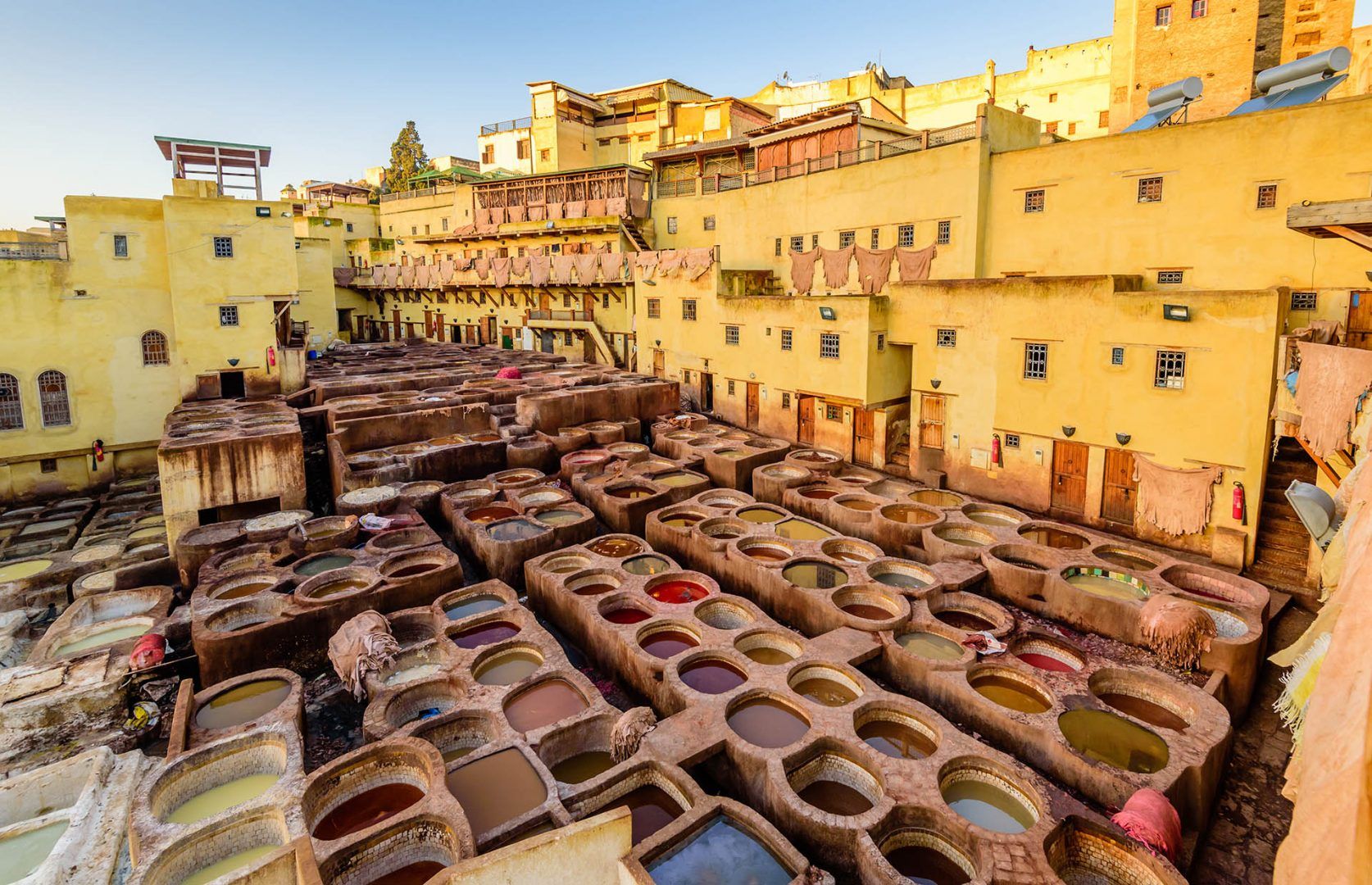
Tanneries of Fez, Morocco © RAndrei/Shutterstock
Full passport holders from the UK, Ireland, the US, Canada, Australia, New Zealand or any EU country don’t need a visa to enter Morocco and can remain in the country for up to ninety days. It is always worth checking the visa requirements before your departure as these can change. Upon arrival, you will need to fill in a form with personal details, profession and purpose of visit.
South African citizens require a visa to enter Morocco and should make applications to the Moroccan embassy or consulate in their country of residence.
Visa extensions
Applications to extend your stay in Morocco should be made to the Bureau des Étrangers for a residency permit. This can be extremely complicated and time-consuming as it involves opening a bank account with a minimum of 20,000dh in your account and obtaining an Attestation de Résidence . Most people avoid the bureaucracy by leaving the country for a few days, usually to Spain, and then re-entering through a different post.
Read our travel guide for more information on Morocco visas and entry requirements .
Part of Morocco’s appeal to tourists is its markets , known colloquially as souks. You will find souks in every town in Morocco, but the largest and most impressive are in Fez and Marrakesh . Whilst it can be very tempting to load up on souvenirs when walking through the souks, it is important to consider how you are going to get them home, and be wary of phoney merchandise and fake “antiques”.
Some of the souvenirs you may wish to purchase include beautiful Moroccan craftwork, semi-precious stones and fossils, or some tasty authentic foodstuffs, all of which you will be expected to bargain for.
Learn more about shopping in Morocco including what to buy, locations and times of souks, avoiding scams, and how to bargain.
Morocco offers magnificent trekking opportunities, impressive golf facilities, a couple of ski resorts (plus some adventurous off-piste skiing) and excellent fishing.
Trekking is among the very best things Morocco has to offer. The High Atlas is one of the most rewarding mountain ranges in the world, and one of the least spoilt. A number of long-distance Atlas routes can be followed – even a “Grand Traverse” of the full range, but most people stick to shorter treks in the Jebel Toubkal area.
Other promising areas include the Jebel Sirwa, the Western High Atlas, and, in winter the Jebel Saghro and Tafraoute region of the Anti-Atlas. The Middle Atlas has much attractive walking too, in such places as Tazzeka (Taza), and around Azrou.
Morocco doesn’t immediately spring to mind as a skiing destination, but the High Atlas mountains are reliably snow-covered from late January to early April, with good skiing at Oukaïmeden
Off-piste skiing is popular in the High Atlas, particularly in the Toubkal massif, where the Toubkal Refuge is often full of groups. Most off-piste activity is ski mountaineering, but skinny skis ( langlauf ) are good in the Middle Atlas if there is snow, in which case the Azilal–Bou Goumez–Ighil Mgoun area is possible.
Snowboarding is also gaining in popularity at Moroccan resorts. For further information on skiing and mountaineering, contact the Fédération Royale Marocaine du Ski et du Montagnisme.
Horse riding
The established base for horse riding holidays is Résidence de la Roseraie at Ouirgane, which runs trekking tours into the High Atlas. Another stable offering horse riding is Amodou Cheval near Agadir. A number of operators offer horse and camel treks, including Best of Morocco.
Morocco has an immense Atlantic (and small Mediterranean) coastline, with opportunities to arrange boat trips at Safi, Essaouira, Moulay Bousselham (near Asilah), Boujdour, Dakhla and elsewhere.
Inland, the Middle Atlas shelters beautiful lakes and rivers, many of them well stocked with trout. Good bases include Azrou (near the Aghmas lakes), Ifrane (near Zerrrouka), Khenifra (the Oum er Rbia River) and Ouirgane (the Nfis River). Pike are also to be found in some Middle Atlas lakes (such as Aguelmame Azizgza, near Khenifra), and a few of the huge artificial barrages, like Bin el Ouidaine (near Beni Mellal), are said to contain enormous bass.
Watersports and swimming
Agadir offers opportunities for sailing, yachting, windsurfing and diving, while Taghazout, just to its north, has become something of a surfing village, with board rental and board repair shops and some great surfing sites. There are lesser surfing centres at Sidi Ifni, Mirhleft, Kenitra, Bouznika Plage, El Jadida, Safi, and even Rabat.
With your own transport, you could scout out remote places all the way down the coast. When they’re working, all breaks can be busy in peak season (Oct–Feb), when deep lows come barrelling east across the mid-Atlantic.
For windsurfing, the prime destination is Essaouira , which draws devotees year-round.
The Atlantic can be very exposed, with crashing waves, and surfers, windsurfers and swimmers alike should beware of strong undertows. Inland, most towns of any size have a municipal swimming pool, but women especially should note that they tend to be the preserve of teenage boys.
In the south, you’ll be dependent on campsite pools or on those at the luxury hotels (which often allow outsiders to swim, either for a fee or if you buy drinks or a meal).
The High and Middle Atlas have also become a popular destination for whitewater rafting and kayaking enthusiasts. One holiday firm specializing in these sports is Water by Nature .
The British opened a golf course in Tangier as far back as 1917. Today the country has an international-level course at Rabat, eighteen-hole courses at Mohammedia, Marrakesh, Tangier, Cabo Negro, Saïdia, Larache, El Jadida, Essaouira, Agadir, Fez and Ben Slimane (Royal Golf, Av des FAR, BP 83, Ben Slimane), and nine-hole courses at Meknes, Ouarzazate and Bouznika (near Mohammedia, Route Secondaire de Bouznika Plage). Several tour operators offer Moroccan golfing holidays.
The Berbers were Morocco’s original inhabitants. The Arabs arrived at the end of the seventh century, after sweeping across North Africa and the Middle East in the name of their revolutionary ideology, Islam . Eventually, nearly all the Berbers converted to the new religion and were immediately accepted as fellow Muslims by the Arabs. When Muslim armies invaded the Iberian peninsula from Morocco, the bulk of the troops were Berbers, and the two ethnic groups pretty much assimilated.
Today, most Moroccans can claim both Arab and Berber ancestors, though a few (especially Shereefs, who trace their ancestry back to the Prophet Mohammed, and have the title “Moulay”) claim to be “pure” Arabs. In the Rif and Atlas mountains, and in the Souss Valley, though, groups of pure Berbers remain, and retain their ancient languages (Tarfit, spoken by about 1.5m people in the Rif; Tamazight, spoken by over 3m people in the Atlas; and Tashelhaït, spoken by around 4m people in the Souss Valley region).
Recently, there has been a resurgence in Berber pride (often symbolized by the Berber letterЖ); TV programmes are now broadcast in Berber languages, and they are even taught in schools, but the country’s majority language remains Arabic.
Top image: Square in the blue city of Chefchaouen, Morocco © Olena Tur/Shutterstock
The Rough Guides to Morocco and related travel guides
In-depth, easy-to-use travel guides filled with expert advice.

Find even more inspiration here

Planning your own trip? Prepare for your trip
Use Rough Guides' trusted partners for great rates
written by Rough Guides Editors
updated 06.03.2024
Ready to travel and discover Morocco?
Get support from our local experts for stress-free planning & worry-free travels.
- Where to stay
- Travel advice

No products in the cart.
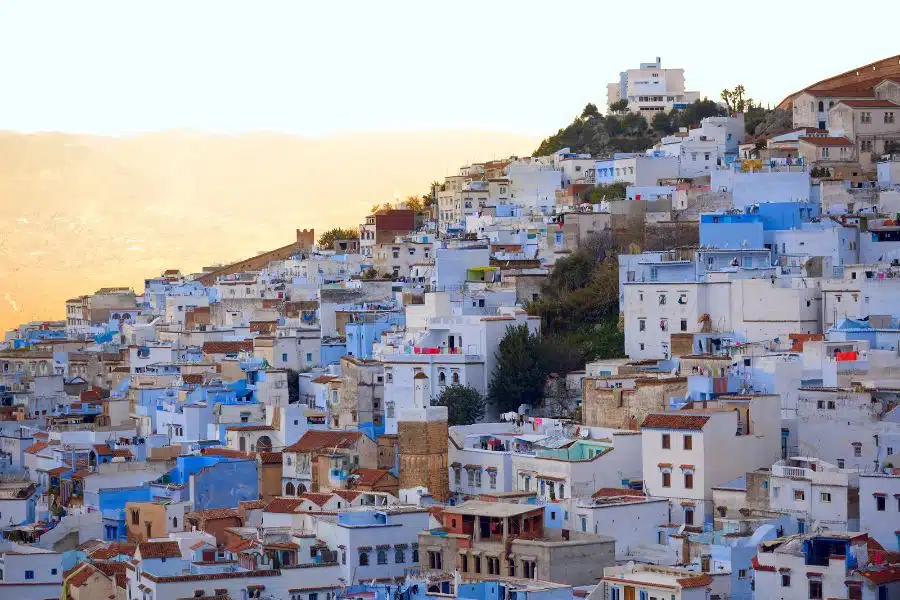
The Ultimate Guide to Morocco: Discover Exotic Beauty & Culture
Explore the best of morocco’s diverse culture, introduction: a melting pot of cultures.
Morocco , nestled between the azure waters of the Atlantic Ocean and the towering peaks of the Atlas Mountains, is a wonderland teeming with cultural riches, historic landmarks, mouth-watering cuisine, and bewitching landscapes. It’s a place where time seems to stand still, where the ancient and the modern meet in a vibrant display of color, sound, and taste. This Ultimate Guide to Morocco seeks to open the door to this mysterious and enchanting world, revealing its hidden treasures and guiding you along the paths less trodden. So, let’s pack our bags and set off on an adventure to remember!
Embark on an exclusive journey through Morocco with One Nation Travel’s Morocco private tours , where unforgettable desert escapades and historical explorations await.
The Ultimate Guide to Morocco: A Peek Behind the Curtain
Morocco – its name alone evokes images of towering minarets, bustling souks, verdant oases, and intricate geometric designs that are as mesmerizing as they are complex. But this country is more than just its captivating aesthetics. Let’s unravel the mesmerizing layers of this country in our Ultimate Guide to Morocco.
A Stroll Through Time: The History of Morocco
First, let’s delve into the historical backdrop that has shaped Morocco into the cultural powerhouse it is today. Located on the northwestern corner of Africa, Morocco is a gateway between continents, bearing witness to a myriad of civilizations and influences, from the ancient Berbers and Romans to Arabs, French, and Spanish colonial powers.
The story of Morocco is told through the ruins of Volubilis, the ancient Roman city, and the medieval alleys of Fes, boasting one of the world’s oldest universities. The fortresses of Marrakesh, the Imperial city, stand as a testament to the nation’s glorious past, while Casablanca, with its blend of Art Deco and Moorish architecture, epitomizes the country’s vibrant present.
Tapestry of Cultures: Moroccan People and Languages
The cultural fabric of Morocco is woven from a tapestry of Berber, Arab, French, and Jewish threads, among others. These diverse cultures have coexisted and intertwined over centuries, resulting in a nation characterized by tolerance, acceptance, and mutual influence.
The languages spoken mirror this cultural melange, with Moroccan Arabic, or Darija, being the most widely used. However, Amazigh languages, French, and even Spanish are not uncommon, especially in certain regions.
A Feast for the Senses: Moroccan Cuisine
No guide to Morocco would be complete without discussing its vibrant culinary scene. Moroccan cuisine is a delectable blend of Mediterranean, Berber, Arab, and French influences, utilizing a colorful palette of spices and local produce. From the famed couscous and tagine to the refreshing mint tea and heavenly pastries, Moroccan cuisine promises a gastronomic journey like no other.
Venturing into the Moroccan Landscapes: An Explorer’s Delight
Tales of the sands: sahara desert.
The awe-inspiring Sahara desert holds sway over a significant portion of Morocco. Whether you opt for a camel trek under the star-studded sky or decide to experience the life of a nomad in a Berber tent, the Sahara promises an adventure you will never forget.
Oases of Serenity: Morocco’s Palm Groves
Dotted across the arid landscapes, Morocco’s palm groves, or palmeraies, offer a welcome respite from the desert heat. These oases, teeming with date palms, fruit trees, and trickling streams, provide not only sustenance but also a unique insight into the ingenious agricultural practices of the locals.
Scaling the Heights: The Atlas and Rif Mountains
From the arid plains, we move up to the lush, verdant peaks of the Atlas and Rif Mountains. A hiker’s paradise, these ranges offer countless trails through verdant forests, Berber villages, and snow-capped peaks. For those seeking solitude and tranquillity, the crisp mountain air and sweeping vistas provide an unbeatable retreat.
Diving into the Bustling Cities and Ancient Medinas
Where traditions meet modernity: marrakesh.
No trip to Morocco would be complete without visiting Marrakesh, a city where past and present coexist in an enchanting dance. From the bustling Jemaa el-Fnaa square to the serene Majorelle Garden, Marrakesh offers a captivating blend of sights, sounds, and experiences.
Journey through History: Fes
As one of the world’s oldest continually inhabited cities, Fes is a journey back in time. The labyrinthine streets of the medina, brimming with artisan shops, food stalls, and ancient mosques, invite visitors to lose themselves in a bygone era.
The Blue Pearl: Chefchaouen
Tucked away in the Rif Mountains, Chefchaouen, or the Blue Pearl, captivates visitors with its blue-washed buildings and relaxed pace. Whether you’re strolling through the cobbled lanes, savoring local delicacies, or soaking in the spectacular views from the Spanish Mosque, Chefchaouen is a feast for the senses.
FAQs: The Ultimate Guide to Morocco
1. What is the best time to visit Morocco?
The best time to visit Morocco depends on the region you plan to explore. Spring (April to June) and fall (September to November) offer the most pleasant weather for most of the country. However, if you plan to visit the Sahara desert, the cooler months of November to February would be more suitable.
2. Is it safe to travel to Morocco?
Yes, Morocco is generally safe for travelers. However, like any travel destination, it’s essential to take standard precautions, such as avoiding deserted areas at night and safeguarding valuables.
3. What currency is used in Morocco?
The official currency of Morocco is the Moroccan Dirham (MAD). Many shops and restaurants in larger cities also accept credit cards.
4. Do I need a visa to travel to Morocco?
Visa requirements for Morocco vary depending on your country of residence. As of now, citizens of over 60 countries, including the US, Canada, and the UK, can enter Morocco without a visa for up to 90 days.
5. What language is spoken in Morocco?
Moroccan Arabic, or Darija, is the most commonly spoken language. Berber languages are also widely spoken, especially in rural areas. Many Moroccans speak French, and English is becoming increasingly prevalent, particularly among the younger population.
6. What should I wear in Morocco?
Morocco is a predominantly Muslim country, so it’s recommended to dress modestly, especially when visiting religious sites. Loose-fitting clothes that cover your shoulders and knees are generally acceptable. However, in tourist areas and larger cities, dress codes are more relaxed.
Top 3 Exceptional Tour Packages for an Unforgettable Moroccan Adventure
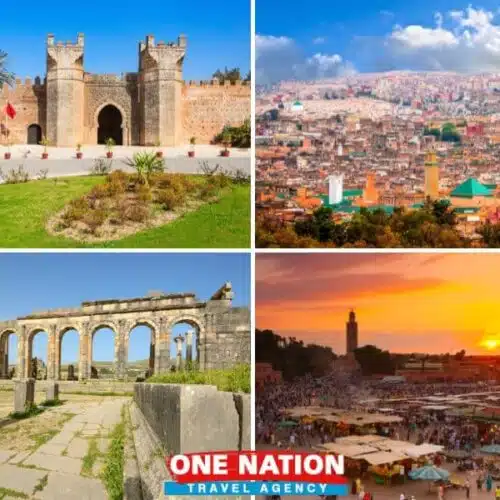
Similar Posts
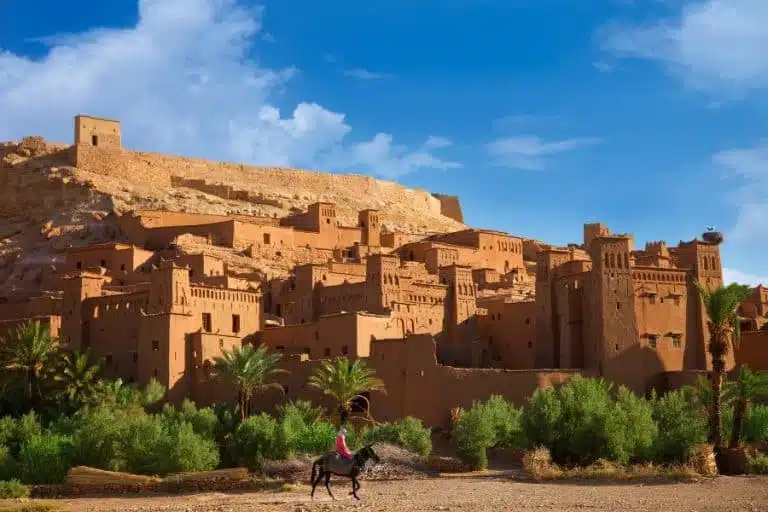
The Ultimate 7-Day Morocco Itinerary: A Journey to Remember
Discover Morocco in 7 Days: From the bustling souks of Marrakech to the tranquil Sahara dunes, our Ultimate Morocco Itinerary offers an unforgettable journey.

Is It Safe to Travel to Morocco in 2023
Explore Morocco with confidence! Learn about the country’s safety, and follow our tips for a worry-free trip. Embrace the culture and create unforgettable memories.

A Complete Guide to Planning a Trip to Morocco
Explore the enchanting world of Morocco using our all-inclusive guide, featuring visa info, top attractions, travel tips, and more for an unforgettable trip.

5 Essential Stops in Marrakech for First-Time Visitors
Explore Marrakech with these 5 must-see destinations, from the bustling Jemaa el-Fna square to the enchanting Majorelle Garden. Immerse yourself in the vibrant culture and historic landmarks of Morocco’s Red City.

Can Americans Travel to Morocco
Find out if Americans can journey to Morocco with our comprehensive guide. Uncover visa info, ideal travel times, must-see attractions, and beyond. Dive in!

Top 15 Must-See Attractions in Morocco: A Traveler’s Guide
Discover the top 15 attractions in Morocco, from the bustling souks of Marrakech to the serene Sahara Desert. Perfect for adventurers and culture seekers.
START PLANNING YOUR TRIP
Our team of experts have a wealth of knowledge and experience to help you plan your adventure of a lifetime.

- Jan 31, 2023
Morocco: The Ultimate Travel Guide (Best Places To Visit + Itineraries)
Morocco is located in the northwest corner of Africa. Thanks to its stunning landscapes, colorful cities, year-round pleasant weather, and unique cuisine, Morocco is a popular travel destination. And although the country is rapidly modernizing, it still retains much of its ancient architecture and even more of its traditional customs. In this article, we’ll highlight the most important things to know before going, the 10 best places to visit in Morocco, and some itineraries we recommend.

Check out our video on Morocco to see the best places to visit through our camera!
Table Of Contents
Important things to know.
Best Places To Visit In Morocco + map
Proposed Morocco Itineraries
Tips to save money and other resources
Best time to travel to Morocco
The best time to visit Morocco is from April until June and from September until November . In these months, you will have good weather and not too many tourists. Keep in mind that at the beginning of spring and at the end of autumn, rain is not unusual.
Cost and currency
Overall, Morocco is very affordable . Accommodation, food, and tourist attractions are often way cheaper than other popular travel destinations. In Morocco, they use the Moroccan Dirham , so if you plan on going, keep an eye on the exchange rates to save more money.
Safety in Morocco
Morocco is a safe country to travel to as long as you understand its laws and cultural customs , and adhere to the status quo. Its crime rates are relatively low but be aware of scam artists and pickpockets which are common in Morocco, especially in the cities! Also watch out for people trying to sell you drugs, which is more common in northern Morocco.
Morocco Travel Tips
1. First, we only recommend driving a rental car if you’re comfortable with long distances . There are also a large number of police checkpoints and we got multiple fines during our road trip.
2. Second, we recommend spending more time in nature rather than in the chaotic cities , like Marrakech or Fez. Cities have a reputation for people who offer a service you haven’t requested which can be exhausting at times.
3. Finally, the WiFi connection was poor when we were there. So it’s best to get a SIM card upon arrival , which is fairly cheap (around 200 dirham - to be paid in cash - for 20GB). Maroc Telecom or INWI sim cards are the preferred ones with best coverage.
Best Places To Visit In Morocco
We'll now highlight 10 of the best places to visit in Morocco.
If you're traveling to Morocco and want to save time searching for directions to all of the places we mention in this article, then look no further than our custom map. Simply click on a point in the map below to get directions there for yourself!
Located in northern Morocco, Fez is one of the most ancient cities in Morocco . Rich in culture, traditions, and history, Fez is often referred to as the country’s cultural capital. Spend a day or two exploring the chaotic medina that is filled with madrasas, palaces, residences, mosques, and other structures that date back to as early as the 9th century. A good way to do this is by taking a guided tour of the medina . But also make sure to venture outside the old town to see what Fez has developed into today. If you're interested in visiting Fez, make sure to check out our blog with everything you need to know about Fez .

9. Essaouira & the Atlantic Coast
At number 9 we have Essaouira , a bohemian city situated along the Atlantic Coast. Known as the windy city of North Africa, lots of surfers, kitesurfers, and windsurfers find their way here. But visitors also enjoy strolling through the fortified medina , walking along the beach boulevard , or simply relaxing at the hotel. But if you’re looking for sunbathing and swimming, you might want to look at other beach destinations along the Atlantic Coast, such as Agadir , Oualidia , Asilah, Taghazout .
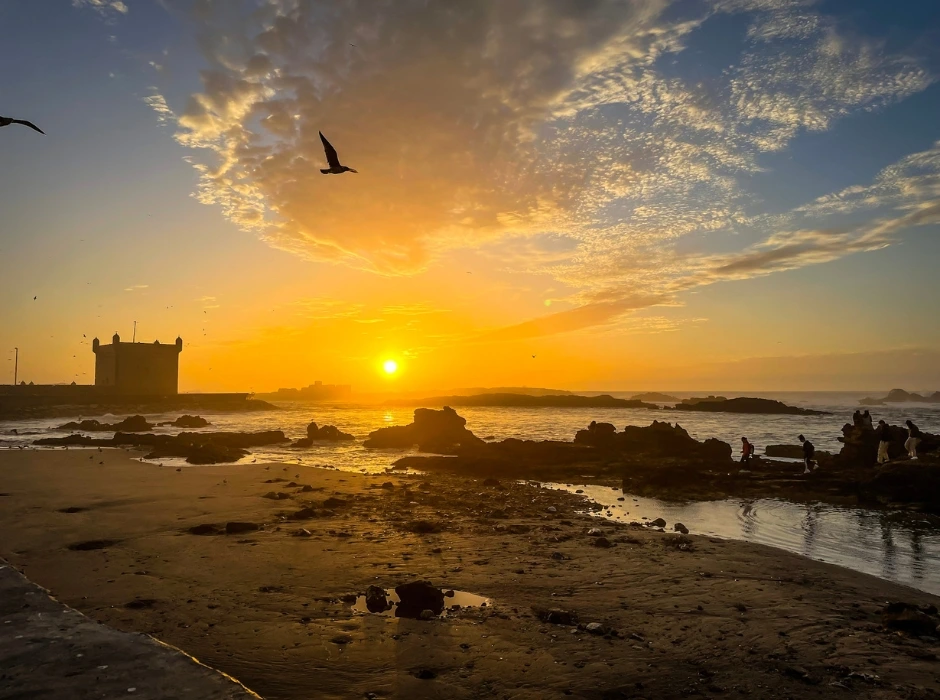
8. Dades Valley
Another beautiful place to visit in Morocco is Dades Valley . Located in the south, it’s often nicknamed the “Valley of a Thousand Kasbahs” because this valley is dotted with palm trees and mudbrick palaces . But what makes the landscape really unique is its red rock formations and the serpentine road at the end of the gorge. It’s best to take in this incredible scenery by driving through the valley and making a few photo stops. If you have more time, we recommend hiking to the “monkey fingers” trail .
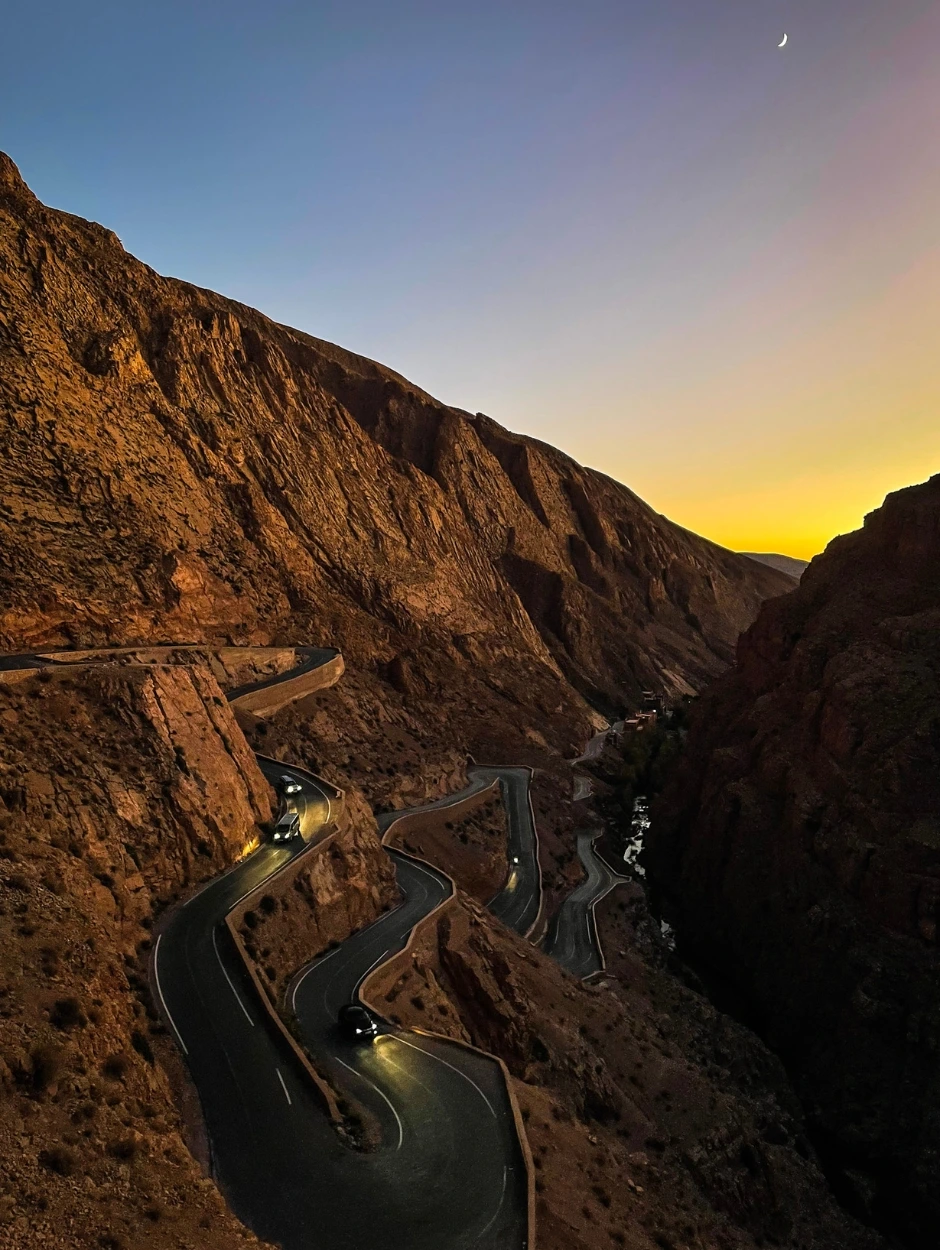
7. Chefchaouen
At number 7 we have the small town of Chefchaouen, set amidst the Rif Mountains in the northwest of Morocco. It’s also nicknamed the “Blue City” because of picturesque streets filled with houses painted in different shades of blue. And while it’s still a mystery as to why all the houses are painted blue, it’s a fun experience to simply walk around and get lost in the alleyways. Apart from that, there are also some other interesting places worth a visit, including the Spanish Mosque for sunset , the washing stations of Ras el Ma , and the Kasbah Museum . Learn more about this intriguing city in our other blog about the best things to do in Chefchaouen .

6. Marrakech
The most popular place to visit in Morocco is undoubtedly the bustling city of Marrakech , located in the center of the country. There’s something for everyone here: whether you like to enjoy the diverse food scene , explore the historic palaces and sights, or stroll around the peaceful gardens . Start your journey at the Jemaa el-Fna square in the heart of the city. Most tourist attractions are within walking distance from here. But if you want to learn more about the local life and city history, we highly recommend going on a guided walking tour of the medina . For more information check out our blog about the best things to do in Marrakech .
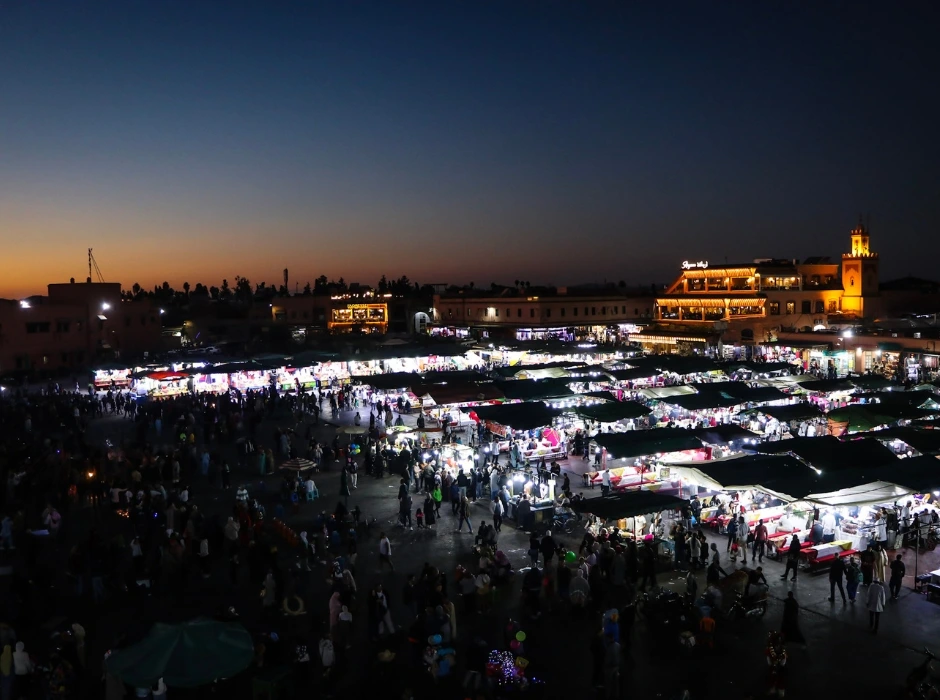
5. Ouzoud Waterfalls
Located 160 kilometers or 100 miles to the east of Marrakech, the Ouzoud Waterfalls are a true escape from the hustle and bustle of the city. With a height of 110 meters or 360 feet, these are the tallest and most spectacular waterfalls in Morocco. We visited this beautiful place as a day trip from Marrakech, which allowed us to spend about 4 hours at the falls. This tour included a guided walk down to the base of the falls with plenty of time to take in the beauty. We also encountered some monkeys along the way who inhabit this area! Overall, we really enjoyed this day tour and would definitely recommend it when you're in Marrakech. However, be aware that this place can get very busy during the high season.
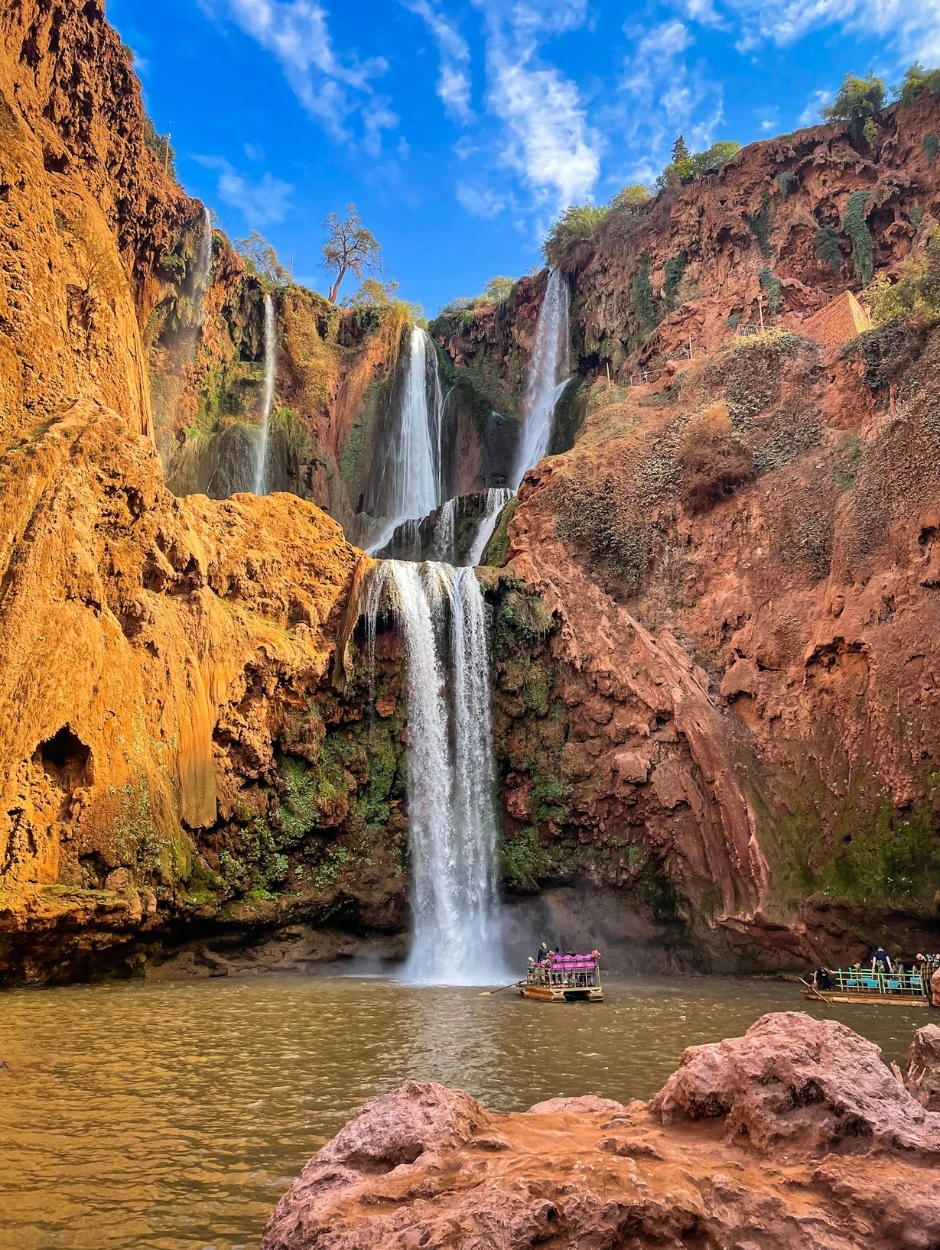
4. Todra Gorge
Running parallel to Dades valley, Todra Gorge is another beautiful natural sight to see in Morocco. Here, a river carved its way through the orange limestone for centuries. As a result, canyon walls reach over 400 meters or 1300 feet high in some places. There are many ways to enjoy the gorge, whether you are an avid hiker, rock climber, mountain biker , or you prefer to simply e njoy the scenery and soak up the culture . We did a half day hike into the canyon and over its rocky walls, which we really enjoyed. We even spotted some nomadic camps along the trail.
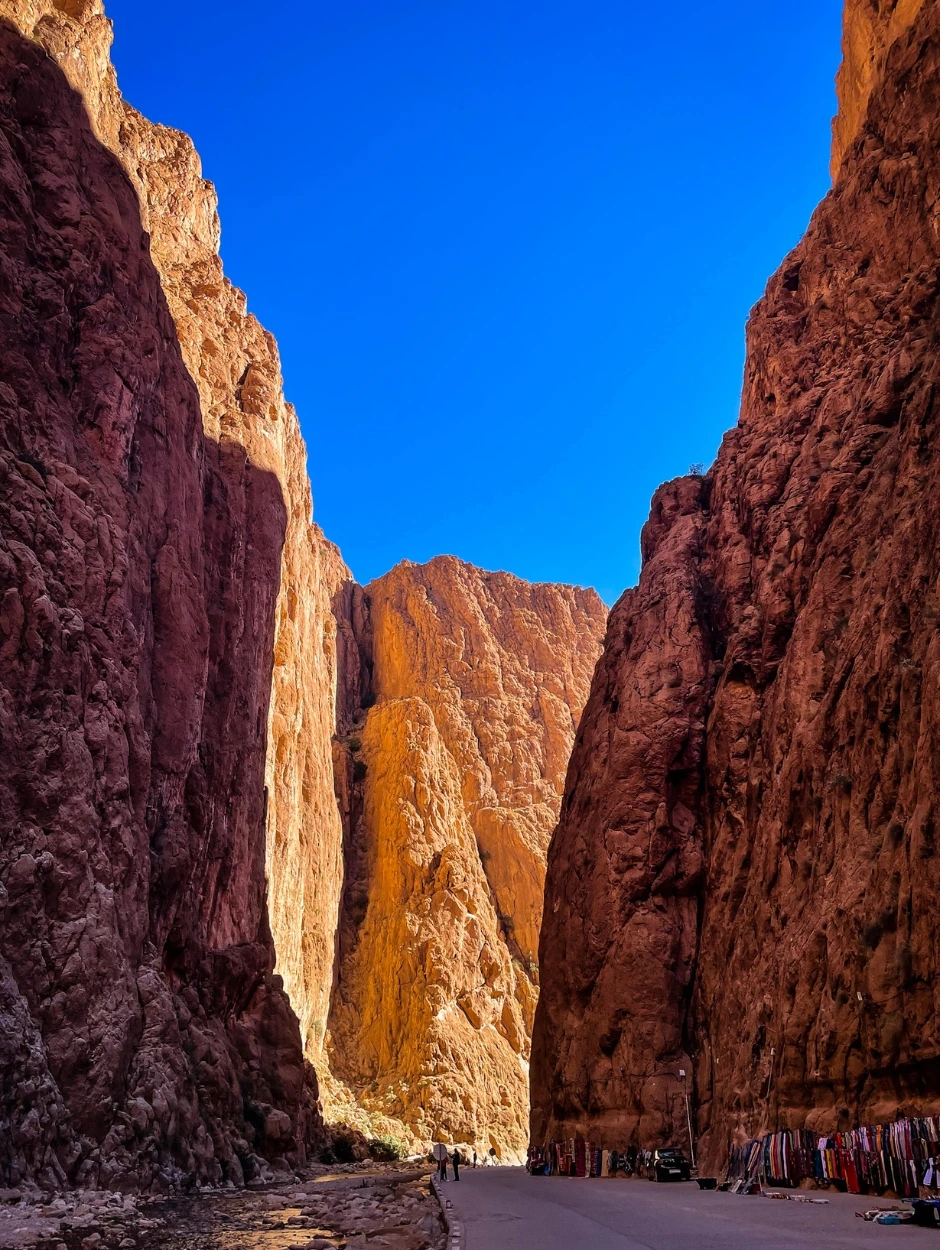
3. Aït Ben Haddou
At number 3, we have the picturesque village of Aït Ben Haddou , located along the former caravan route between the Sahara and Marrakech. It’s known for its historic clay buildings , which is a great example of Moroccan earthen architecture. And while most of the village has been abandoned in recent years, there is still a lot left for travelers to explore. Some of the main highlights include watching the sunrise and sunset from one of the many viewpoints , walking up to the ancient grain store on top of the village, and visiting one of the “kasbah’s” . If you don't have a lot of time, we recommend doing this as a day trip from Marrakech .
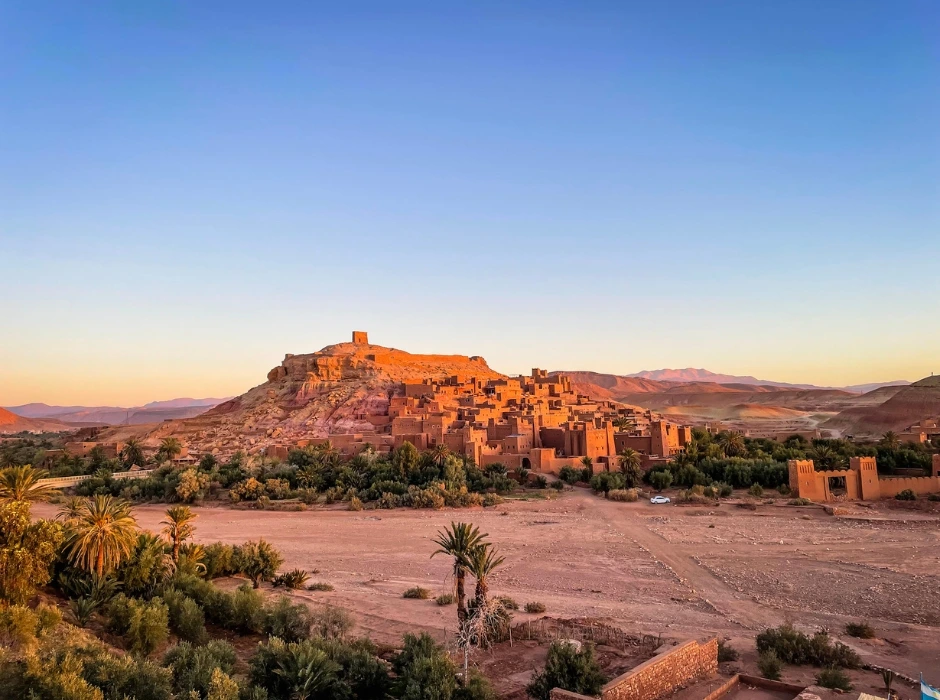
If you have more time in the area, we also recommend exploring nearby Ouarzazate . This city has been welcoming Hollywood directors since the ‘60s and is the movie capital. We did a guided tour of the Atlas Studios , where films like Cleopatra, The Mummy, and Gladiator were shot.

2. High Atlas Region
As North Africa’s highest mountain range, the High Atlas is a paradise for trekkers and skiers . Stretching from the Atlantic Ocean in the west to the Moroccan-Algerian border in the east, this region covers approximately 740 km or 460 miles. The most impressive part is undoubtedly Toubkal National Park , which is easily accessible from Marrakech by car or bus. And the beautiful village of Imlil is the starting and ending point of most hiking circuits in the park. We joined a three-day trek across three valleys and traditional berber villages. But it’s also possible to go on a day or 2-day hike here from Marrakech. We recommend the 2-day hike if you're in decent shape. The 3-day hike follows the same route and was too slow for us (the hiking time was only 4-5 hours per day for the 3-day trek).
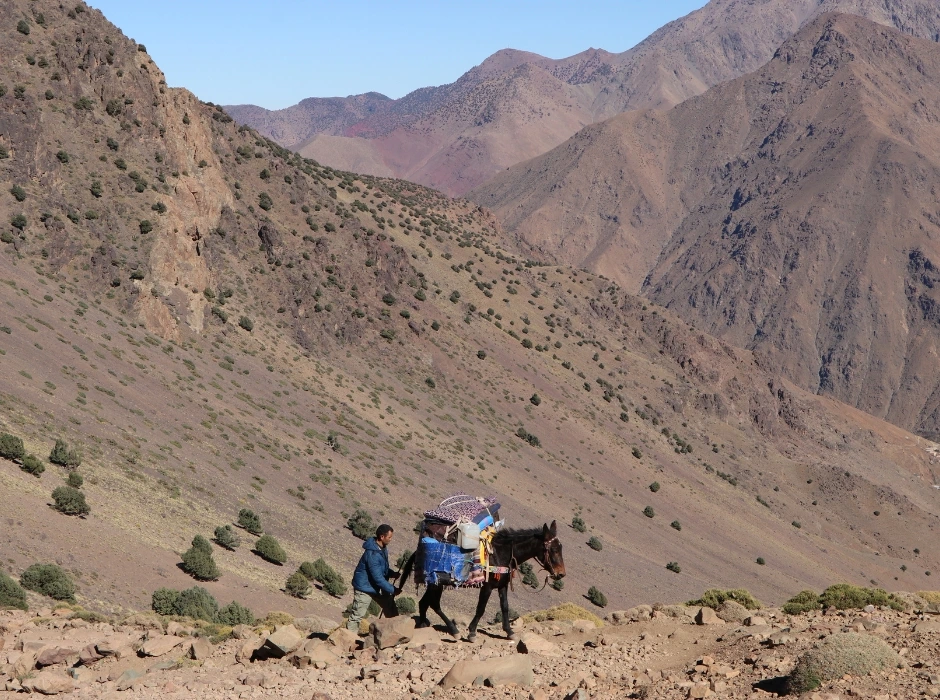
1. Sahara Desert
The most beautiful place to visit in Morocco in our opinion is the Sahara Desert, which spans the south of the country mainly along the border with Algeria. Here, you can enjoy orange dunes, blue skies, camel trekking, camping under the stars , and much more. And while there are various desert options in Morocco, we explored the popular Erg Chebbi dunes at the edge of the town of Merzouga . Get a taste of what the nomadic life in the desert is truly like by spending at least 2 to 3 days here. Learn all about our 3-day safari experience in our Merzouga blog .

Morocco Itineraries
Here are some rough itineraries we propose:
7 days in Morocco
Marrakech (2 days)
Aït Ben Haddou + Ouarzazate (1 day)
Dades + Todra Gorge (1 day)
Merzouga desert (3 days)
10 days in Morocco
Ouzoud waterfalls (1 day trip from Marrakech)
Atlas Mountains (2 days)
14 days in Morocco:
Drive to Fez (2 days - stops in Azrou, the Ziz Gorge, or Ifrane)
Fez (1 day)
Chefchaouen (1 day trip from Fez)
OR spend the last 4 days at one of the beaches along the Atlantic Ocean (instead of Fez & Chefchaouen)
Are you traveling to Morocco but don't have time to plan all aspects of your trip? We created a detailed 10-day itinerary that has all the information and links you need, e.g. accommodations, places to eat and drink, distances, activities, etc . Everything is also pinned on a map so you can easily navigate your way around when you're there. We created this itinerary after traveling around Morocco for 4 weeks. We handpicked the most beautiful places we visited and fun activities we did. This itinerary is for the active traveler who likes hiking and nature, but also learning about the local culture and history. This itinerary saves you 40+ hours of researching and planning.
If you have more time in Morocco or you would like to explore more cities and beaches, it’s worth checking out other beautiful destinations that we didn't mention in our top 10:
Moulay Idriss
Erg Chigaga desert (M’hamid)
Use These Websites To Save Money On Your Trip To Morocco
Booking.com for places to stay
Skyscanner for cheap flights
GetYourGuide for local tours
Rentalcars.com for affordable car rentals
Free Giveaway
Did you enjoy our article on the best places to visit in Morocco? Download our free giveaway and spark your wanderlust with our top 100 travel destinations around the world!

Other Top Morocco resources:
If you're looking for some other suggestions and tips on Morocco, here are some great articles that will help you:
The 12 best things to do in Morocco by The Lonely Planet
12 Best Things To Do In Morocco by Hand Luggage Only
14 Top-Rated Things to Do in Morocco by Planetware
Need more travel inspiration? Check out our other destinations or other articles about Morocco:
Marrakesh, Morocco: A Travel Guide To The Bustling City Of Marrakesh
Chefchaouen in Morocco: A Guide To The Blue City
Fez, Morocco: A Guide To Morocco's Cultural Capital
Merzouga, Morocco: Our Merzouga Desert Trip And Honest Review

Related Posts

Hi! We are Ine & Zac. An international travel couple from Belgium and the US. We created World Wild Hearts to inspire life-changing travel experiences like we've had. Use these tips, stories, and guides to inspire your next adventure of a lifetime!
SAVE MONEY ON YOUR TRIPS

DOWNLOAD FREE TRAVEL RESOURCES
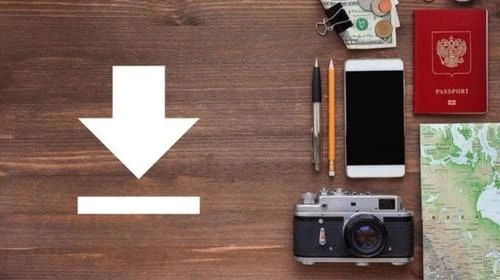
WATCH OUR TRAVEL VIDEOS

This post contains a few affiliate links. That means we may earn a small commission when you click on the links at no additional cost to you. You can read our full disclaimer here . Thanks for supporting our travel blog!
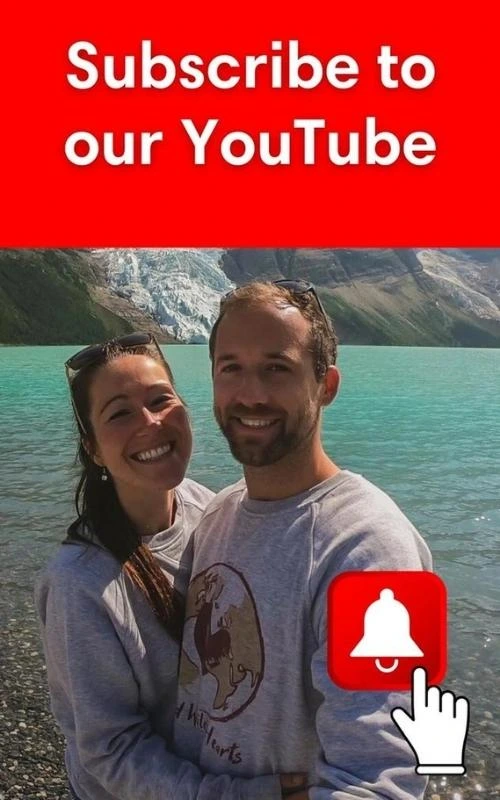
COMPREHENSIVE TRAVEL PLANNER
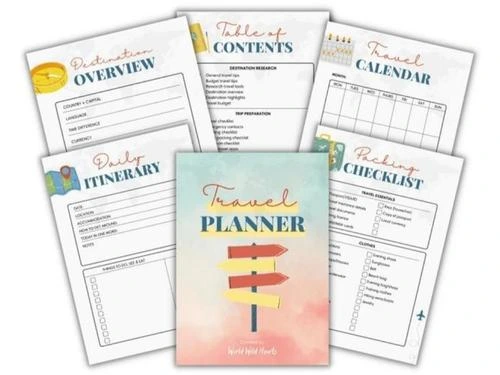

Morocco Travel Guide (2023)
This is the ultimate Morocco travel guide for 2023, covering everything there is to know about visiting this beautiful country. I designed this page to be a complete resource for trip planning, outlining general things to know about Morocco, the top places to visit, bucket list experiences, how to get around, and a whole lot more.
The Best Morocco Travel Guide
After living here for six months and exploring nearly every corner of this beautiful country, I’m super excited to share what I’ve learned in this Morocco travel guide. From the things I wish I knew before traveling to essential safety information, I’ve packed it all in here for easy access.
Keep reading to discover all there is to know with this complete Morocco travel guide!
Main Things to Know About Morocco
> Language: The official languages of Morocco are Arabic and Berber(also called Amazigh). However, the most common language spoken in Morocco is Darija, or Moroccan Arabic, which is a combination of Arabic, Amazigh, French, and Spanish. Moroccan people are some of the most talented with languages I’ve come across on my world travels. Many people speak French, Spanish, and English in addition to Darija, especially in touristy areas. > Currency: The currency used in Morocco is the Moroccan dirham (MAD). The exchange rate is about 10 dirhams to $1 U.S. Dollar. Outside of major cities, most places in Morocco only accept cash. You can withdraw dirhams from local ATMs or exchange in just about every city. Many places will also accept euros and sometimes US dollars. > Religion: Morocco is a predominantly Muslim country, with Islam being the official religion. The practice of religion is an important part of Moroccan culture and daily life, with many mosques and religious sites throughout the country. You’ll hear the Call to Prayer five times a day, and at this time, many small shop owners will close to go to the mosque. > Safety: In my experience, Morocco is quite a safe country, especially as a woman. There are some common scams to look out for and a bit of catcalling, but aside from that, the people are some of the nicest I’ve met anywhere in the world. > Clothing: Morocco is a fairly conservative country, and it’s important to dress appropriately, especially if you’re a woman. Women should dress modestly and cover their shoulders and knees. Loose-fitting clothing is ideal for staying cool in Morocco’s hot weather, so think maxi dresses, flowy pants, and short sleeve jumpsuits. Though definitely pack layers because it gets cold at night. If you’re visiting Morocco during the winter, it’s pretty chilly, especially up north and in the desert.
Top Places to Visit in Morocco
Morocco is a country full of vibrant culture, beautiful architecture, and stunning landscapes. Here are the top 8 places to visit in Morocco on any trip.
1. Marrakech : Known as the “Red City”, Marrakech is definitely the most iconic place to visit in Morocco. Home to beautiful palaces, gardens, and mosques, there are secrets hiding behind every ornate door. Take a stroll through the bustling souks, shop for spices and souvenirs, and indulge in some traditional Moroccan cuisine.
2. Fes : This ancient city has been designated as a UNESCO World Heritage Site and is home to the famous leather tanneries. Be sure to explore the maze-like streets of the medina (there are more than 4,000 of them!) and catch a sunset from the Marinid Tombs.
3. Chefchaouen : This picturesque blue city is nestled in the Rif Mountains and is the perfect place to escape the heat. There are many things to do in Chefchaouen , like take a hike to the Spanish Mosque for breathtaking views of the city or cool off by the Ras El Ma River. With more time, a day trip to Akchour is a must.
Read More: Chefchaouen Travel Guide
4. Casablanca : Known for its stunning architecture and beautiful beaches, Casablanca is the main business hub of Morocco. Though, there’s still plenty of culture to enjoy. Don’t forget to check out the famous Hassan II Mosque and Marché Central for the catch of the day.
5. Tangier : This port city has a rich history of being a gateway between Europe and Africa. Explore the Kasbah Museum, relax on the stunning beaches, and drink mint tea on one of the countless rooftops in the medina. On a clear day, you can see Spain across the water!
6. Merzouga : This small town is the entrance to the Sahara Desert in Morocco. Experience a camel trek through the dunes and spend the night sleeping in a tent under the stars. Merzouga is also a top place for adventure activities like quad biking and dune buggies.
7. Essaouira : This charming coastal town is known for its enchanting beaches and relaxed atmosphere. In terms of things to do in Essaouira , you have a fair share of options. Take a stroll through the historic medina, hang out on the beach, chow down on some fresh seafood, and listen to live Gnaoua music.
Read More: Essaouira Travel Guide
8. Ait Ben Haddou: This fortified city is a UNESCO World Heritage Site and has been used as a backdrop for numerous films and TV shows, including “Game of Thrones”. Explore the winding streets and marvel at the stunning architecture, which dates back to the 17th century. It’s a great day trip from Marrakech or a stop on the way to Merzouga.

Best Time to Visit Morocco
The best time to visit Morocco is during the spring (mid-March to May) or the fall (September to October), when the weather is mild and pleasant. The summer months can be extremely hot, especially in the desert regions, and the winter months can be chilly, especially in the Atlas and Rif Mountains. It’s also important to note that Ramadan, the Islamic holy month of fasting, can affect travel plans as many businesses and restaurants have altered schedules.
If you’re planning a trip to Morocco in the summer, consider coastal destinations like Essaouira, Casablanca, and Tangier, with a day trip to Chefchaouen and Akchour for swimming.
Visiting Morocco in the winter? This is a prime time to take a Merzouga road trip and camp in the desert. Winter is also a great time to visit places like Marrakech and Fes.
Read my complete guide on the best time to visit Morocco for seasonal and monthly breakdowns, plus when to visit based on the kind of trip you’re looking for.
How to Get Around Morocco
There are several options for getting around Morocco, depending on your budget and level of comfort. This Morocco travel guide covers the most common methods.
Taxis are readily available in most cities, but be sure to negotiate the fare before getting in. For local trips, ask that the meter is turned on. Taxi drivers in Morocco are notoriously tricky (especially in Marrakech and Fes), so keep your eye out for any funny business.
You can also take large shared taxis to get between some cities in Morocco, like Tangier and Chefchaouen. This is a great option for budget travel because you split the fare with the other passengers and only pay for your seat (there are six seats in total). Most Morocco travel guide neglect to mention this option, but it’s truly the best way to travel around Morocco.
There’s generally a central big taxi station in the city run by an operator in a neon vest. Find him and let him know where you’d like to go, and he’ll take you to the taxi departing next.
This method of travel is my favorite and one of the top ways to experience a super local side of Morocco.
But be warned: you may end up waiting quite a while if no one else is going to the same destination. If this happens, you can always pay for the open seats to leave immediately.

Buses are the cheapest option to travel around Morocco. The main company is CTM , but you can also sometimes book buses called Autocars through ONCF.
Buses can be crowded and loud, but in my experience, they’re super comfortable. They’re also the best option to travel in Morocco with a lot of luggage since there’s limited space in taxis, and train storage can be cumbersome to deal with.
Trains are a great option for longer journeys, with comfortable seating and air conditioning. The main company is ONCF, and you can book tickets in advance through their website or at the train station.
Honestly, second class is just as good as first class, so if you’re torn between the two, save your money. That said, you can see what first class looks like on most Moroccan trains below.
In 2018, Morocco opened a fast train called the Al Boraq (or the TGV) that travels between Casablanca and Tangier in only two hours.

Private Car
For more flexibility, consider renting a private car to take a road trip, especially if you want to visit the desert.
Car rentals are normally around 400 dirhams ($40) for a single day, with as low as 200 dirhams ($20) daily rate for longer rentals.
However, Moroccan driving is pretty lawless, and the roads can be treacherous in some places. If this is a concern, you can always rent a private car with a driver, though this will be much more expensive.
Morocco Accommodation
There are plenty of options for accommodation in Morocco, from budget hostels to luxurious riads.
A riad is a traditional Moroccan house with an interior courtyard, often converted into a hotel or guesthouse. For a unique experience, consider staying in a riad in the medina for a taste of local life. Riads often include rooftops with gorgeous views and traditional breakfast offerings.
There are riads that cater to all budgets throughout Morocco, as well as hotels, Airbnbs, and hostels.
Camping is also an option in some places, particularly in the Sahara Desert.
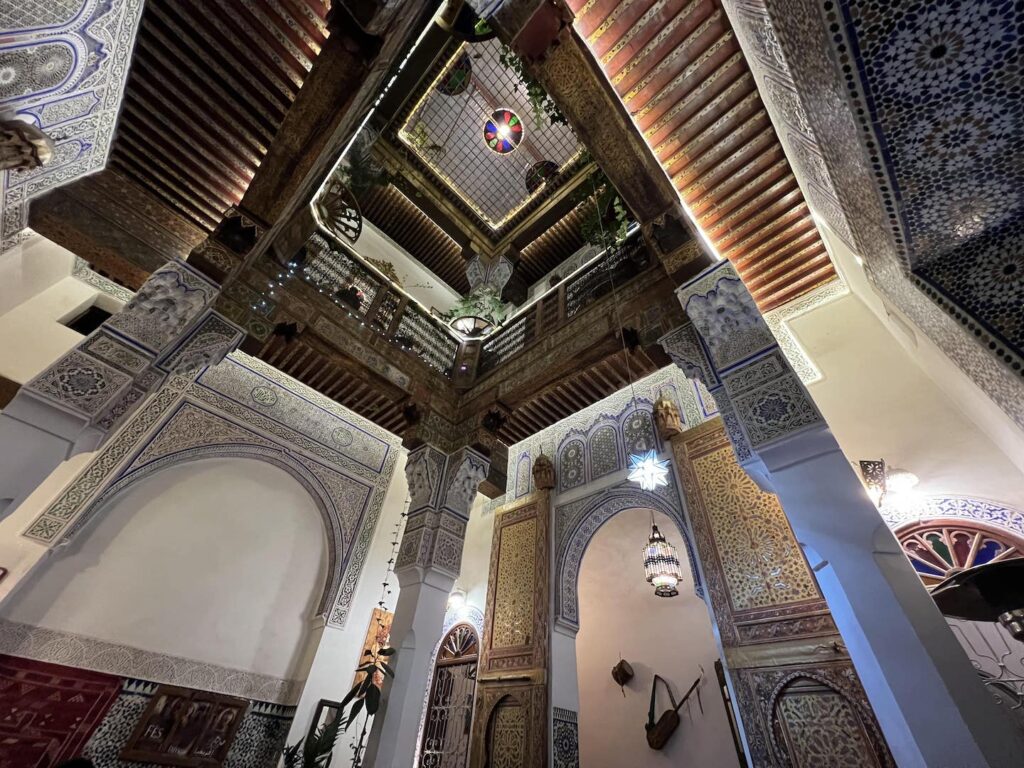
Moroccan Food and Drink
What’s any Morocco travel guide without a food section? Moroccan cuisine is renowned for its flavorful spices and exotic ingredients. It’s unbelievably delicious, with large portions, hearty side dishes, and satisfying meals. There are lots of healthy choices and vegetarian options when it comes to Moroccan food, making it a fairly easy country to enjoy food-wise if you have dietary restrictions.
Main dishes to try are:
- Tagine: A slow-cooked stew made with meat, vegetables, and spices. The dish is named after the conical earthenware pot in which it is cooked.
- Couscous: A staple dish made with small steamed balls of semolina grains, typically served with vegetables and meat. It’s traditionally eaten every Friday.
- Harrira: A traditional soup made with lentils, chickpeas, tomatoes, and spices. It’s often served as a meal during Ramadan.
- Zaalouk: A salad made with cooked eggplants and tomatoes, seasoned with garlic, cumin, and paprika. It’s typically served as a side dish and is super yummy.
- Mint tea: A popular drink in Morocco made with green tea, fresh mint leaves, and lots of sugar. It’s often served as a sign of hospitality.
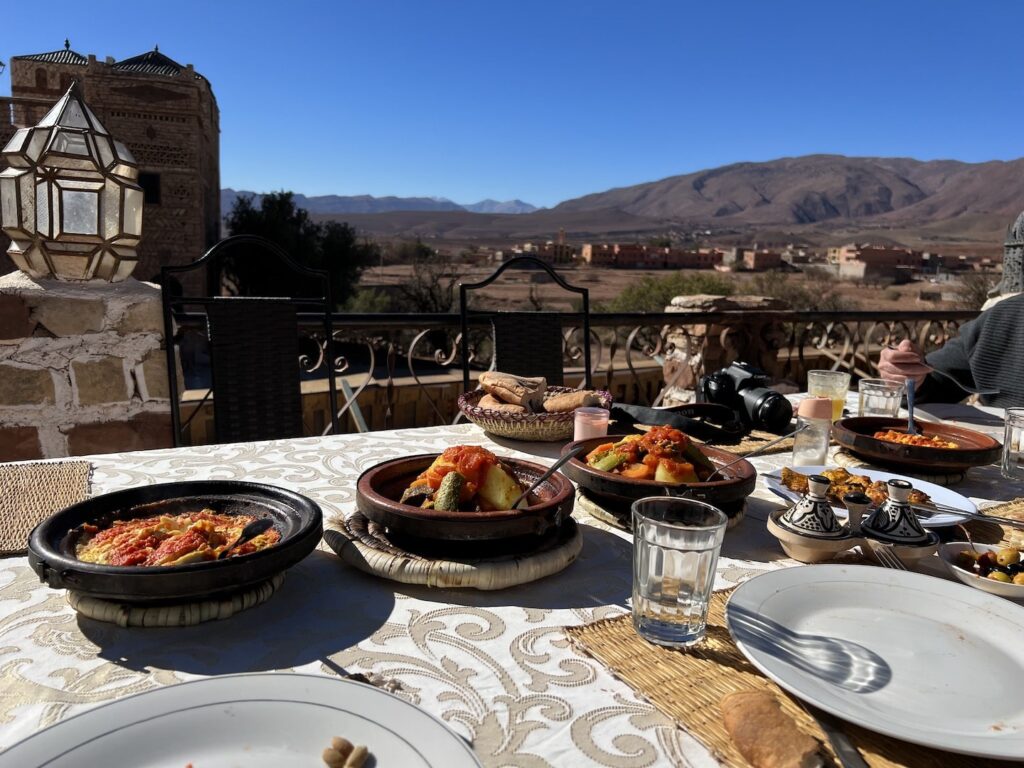
Moroccan pastries are also a quintessential part of the country’s cuisine and any Morocco travel guide. These sweet treats are often made with almonds, honey, and other delicious ingredients.
One of the most popular Moroccan pastries is the “kaab el ghazal,” which translates to “gazelle’s ankles.” This pastry is made with a flaky crust and filled with a sweet almond paste.
Another popular pastry is the “chebakia,” which is made by frying dough that has been coated in honey and sesame seeds (my personal favorites).
These pastries are often enjoyed during special occasions such as weddings or religious celebrations. Don’t leave Morocco without trying some of these delicious treats!
Morocco Bucket List
Morocco is full of unique, captivating, and bucket list experiences. From riding camels in the desert to surfing on the coast, this Morocco travel guide only covers a fraction of the adventures in store. To get you started, here’s a list of some of the best things to do in Morocco.
- Indulge at a traditional Moroccan hammam
- Explore the ancient medina of Fes
- Take a camel trek through the Sahara Desert
- Visit the Hassan II Mosque in Casablanca
- Shop for souvenirs in the souks of Marrakech
- Hike in the Rif Mountains
- Kite surf in Essaouira
- Visit the blue city of Chefchaouen
- Marvel at the Roman ruins of Volubilis
- Visit the coastal town of Asilah
- Take a traditional cooking class
- Go on a road trip along the Dades Valley
- Take a dip in the Akchour waterfalls
- Ride a quad bike through the desert dunes
- Visit the Aït Benhaddou kasbah and learn about its history
- Learn about the Berber culture
- Listen to live Gnaoa music performance
- Explore a desert oasis
- Visit the Ouarzazate film studios
- Go skiing in Ifrane
- Drink mint tea on a rooftop or in a city square
- Eat a traditional Moroccan breakfast
- Try Moroccan pastries
- Learn about the Jewish history in Morocco
- Go on a glamping trip in the desert
- Take a road trip along the Atlantic coast
- Go on a multi-day horse tour
- Take a day trip to stunning Moulay Idriss Zerhoun
- Explore Tetouan and its Andalusian architecture
- Take a hot air balloon ride over the Atlas Mountains
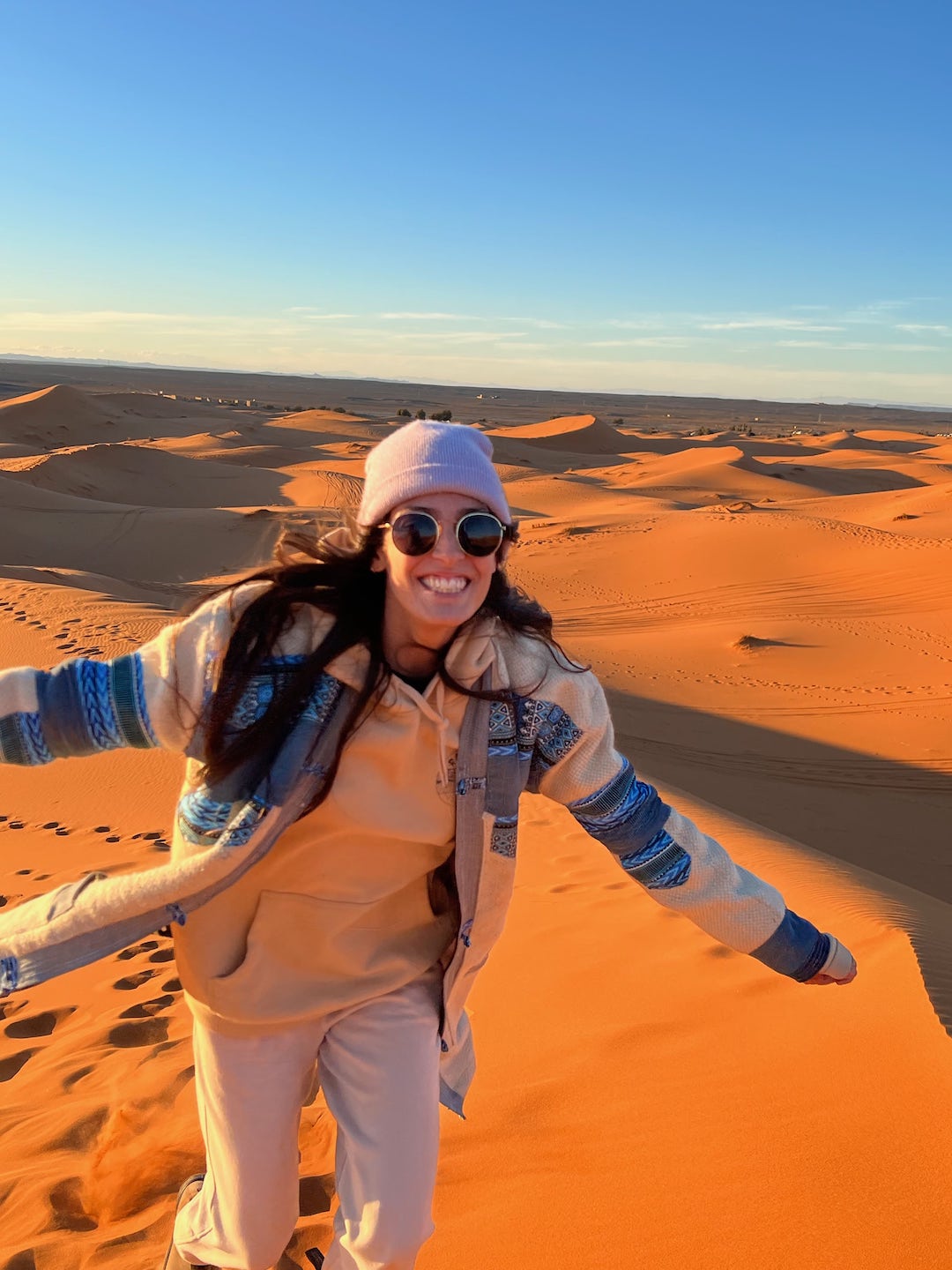
What to Know Before Going to Morocco
Like most countries, there are a few key things to know before going to Morocco to have a safe and enjoyable trip.
- Pack in a backpack instead of a roller bag if possible because medinas can be crowded, with steep hills, many stairs and no car access.
- Dress appropriately, especially if you’re a woman. Morocco is a conservative country, and it’s important to respect the local culture. For women, this means dressing modestly and covering your shoulders and knees.
- Carry cash with you, as many places don’t accept credit cards.
- Since Morocco is an Islamic country, the Call to Prayer happens five times a day. The first one happens before sunrise, and the last one happens just after dark.
- Avoid displays of public affection, which are frowned upon.
- Alcohol is not widely available in Morocco due to the Muslim religion. However, there are bars in some cities like Marrakech and Tangier. There are also some restaurants in larger cities that serve alcohol. You can also buy booze at some large grocery stores.
- Avoid drinking tap water, and opt for bottled water instead to avoid getting sick.
- Watch out for common scams, which I get into below.
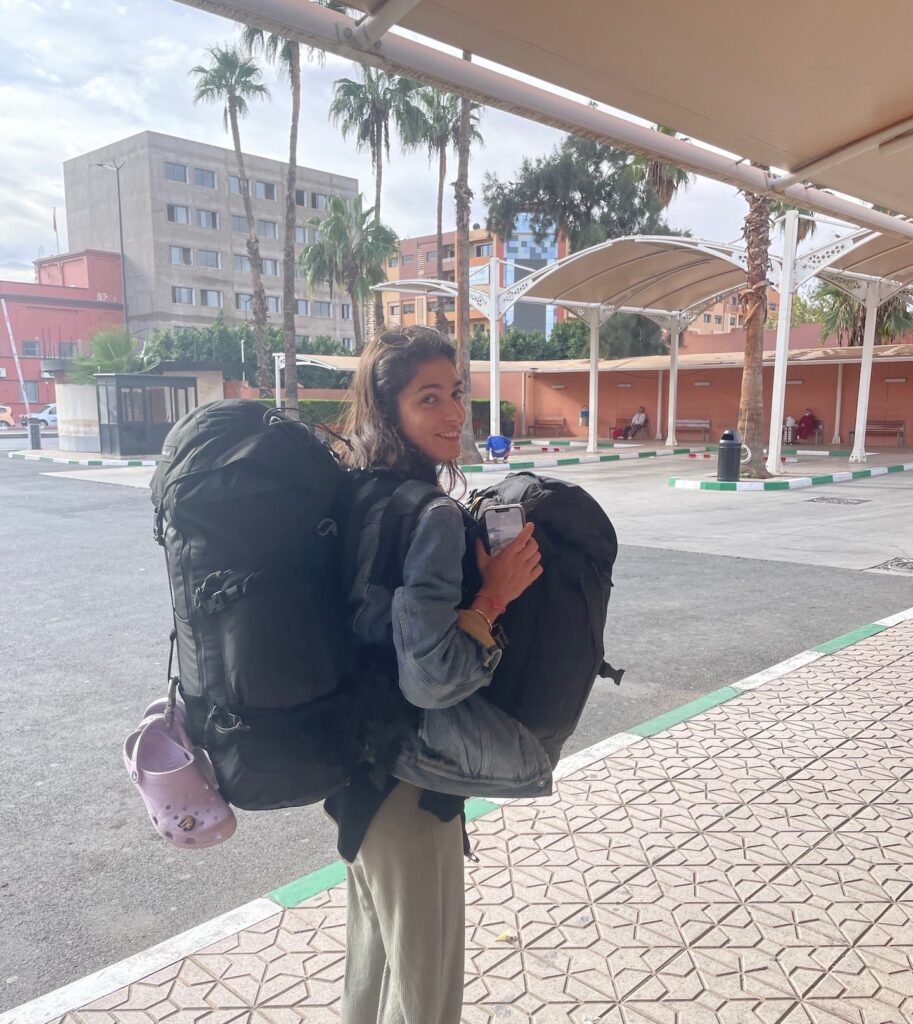
Common Scams in Morocco
Morocco is generally a safe country, but like any tourist destination, there are some scams to watch out for. I figured I’d throw them into this Morocco travel guide so you know exactly what to look out for.
These are a few of the most common:
Faux Guides : These are people who pose as official guides and offer to show you around the city. They may be friendly at first, but they will often take you to overpriced shops or try to pressure you into buying things you don’t need.
To avoid this scam, only hire official guides through your hotel or a reputable travel agency. You can also ask for recommendations from other travelers or locals. If someone approaches you as a tour guide, ask for their official badge.
Overpriced Souvenirs: In the markets (known as souks), vendors will often try to sell you items at a much higher price than they’re worth. They may also use high-pressure tactics to get you to buy more than you need.
To avoid this scam, always negotiate the price before buying anything. Start by offering about half of what the vendor is asking, and be prepared to walk away if the price doesn’t come down.
“It’s Closed”: In some cities in Morocco, especially Fes, you may be walking in the medina, and someone will tell you, “it’s closed,” and try to steer you somewhere else. After falling for this scam dozens of times, I finally realized they were lying… every. single. time.
Pickpocketing: Pickpocketing is fairly common in Morocco, especially in crowded areas like markets, large squares, and train stations. Thieves may work in groups to distract you while they steal your wallet or phone.
To avoid pickpocketing, keep your valuables close to your body and be aware of your surroundings. Wear a money belt or keep your wallet in a front pocket rather than a back pocket. You should also avoid pulling out large sums of money at once when paying for things.
Fake Transportation: In major tourist destinations like Marrakech, you may encounter people offering transportation to nearby destinations. These may be scams, and you could end up paying a lot of money for a subpar experience.
To avoid this scam, only get in official (clearly marked) taxis and book tours and longer transportation through your hotel or a reputable travel agency. Don’t be afraid to ask for recommendations or read reviews online before making a booking. If something doesn’t feel right, it probably isn’t.
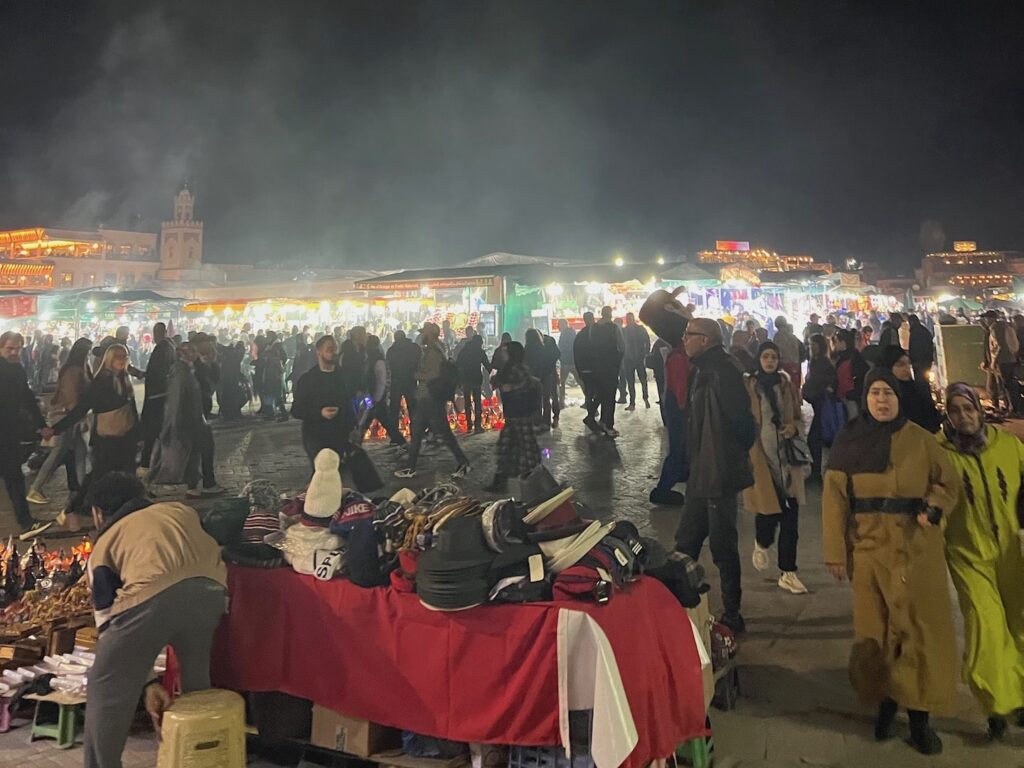
How to Stay Safe in Morocco
While Morocco is pretty safe, it’s still important to take precautions. These are a few final tips for this Morocco travel guide to help you stay safe:
- Keep an eye on your belongings at all times, especially in crowded areas.
- Be cautious when using ATM machines, and avoid withdrawing large sums of money at once.
- Don’t walk alone at night, especially in unfamiliar areas. Medinas can be particularly hard to navigate after dark, so be sure to have clear landmarks.
- Keep all valuables out of sight in your room, and locked if possible.
- It’s best to leave the flashy jewelry at home.
- When paying for something, don’t pull out all of your cash at once. Otherwise, you may become a target quickly.
- Like with any international trip, always carry your passport safely with you.
With these few things in mind, you’ll have a stress free trip to Morocco
Morocco Travel Guide FAQs
How many days is enough for morocco.
The number of days that you need to see Morocco is between 7 and 10 days. This will give you enough time to see a couple of cities and take a quick road trip to the desert. In two weeks, you can experience the mountainous inland of Morocco and its ancient medians, as well as the stunning Atlantic coast.
Do I need a visa for Morocco?
Morocco has a 90 day visa waiver for many countries, including the USA, Canada, UK, EU, Australia, New Zealand, and beyond. Just ensure you have a valid passport with at least one blank page. And keep in mind that the visa is for 90 days not three months.
Is Morocco friendly to tourists?
Overall, Morocco is a very friendly country to tourists. There is a lot of accommodation, abundant tour guides, and ample transportation options that allow anyone to travel Morocco with ease. You may come across petty crime while in Morocco, like pickpocketing and tourist scams, but there are no real major safety concerns for tourists. The people in Morocco are also well known for being friendly and hospitable to visitors.
What is the best month to visit Morocco?
The best month to visit Morocco is June to enjoy the Atlantic coast and northern destinations like Tangier and Chefchaouen. If you’d prefer a trip to cities like Fes, Marrakech, and Merzouga, the best month to visit is September, when it’s warm but no longer scorching in the south.
Where should I go for the first time in Morocco?
For your first time in Morocco, visit iconic cities like Fes and Marrakech, with a road trip to the desert. It’s also worth leaving room in your itinerary to visit smaller, equally enchanting destinations like Essaouira, and cities in the north of Morocco, like Chefchaouen, Tangier, and Asilah. The south and north of Morocco are drastically different, so if possible, try to experience both areas to get a full picture of this beautiful country.
Is Morocco cheap for tourists?
By western standards, Morocco is definitely cheap for tourists. It’s a super budget friendly destination with lots of inexpensive accommodation, attractions, shopping, and food. Morocco is also the land of luxury, with plenty of upscale hotels and experiences. It’s easy to score a deal on an opulent riad or multi-course dinner, even if you’re on a tight budget. Morocco truly caters to all price ranges, making it one of the top destinations for any travel lover.
Read More From the Morocco Travel Blog
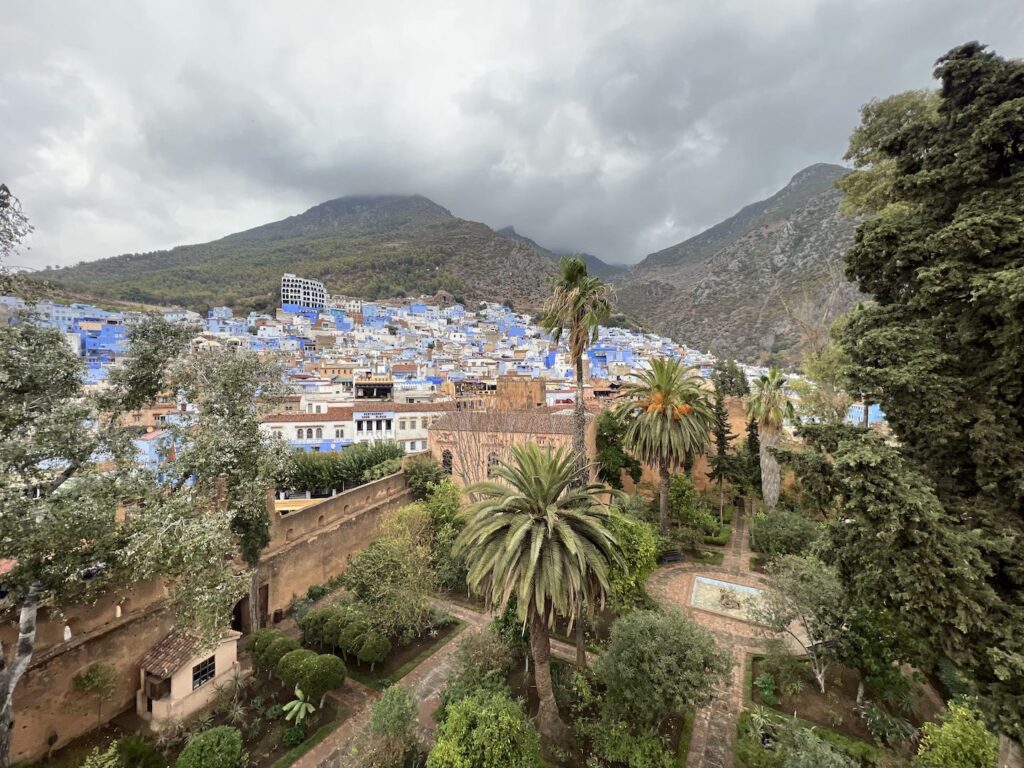
How to Get to Chefchaouen, Morocco By Taxi, Bus, & Private Car (2024)
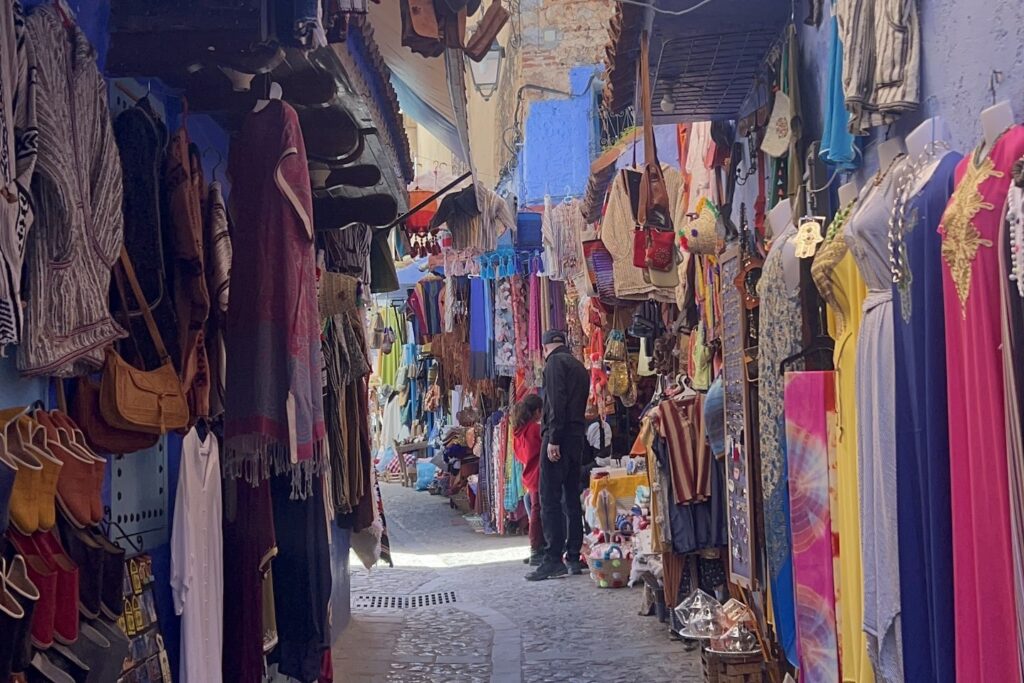
Best Time to Visit Chefchaouen: Seasonal + Monthly Breakdown
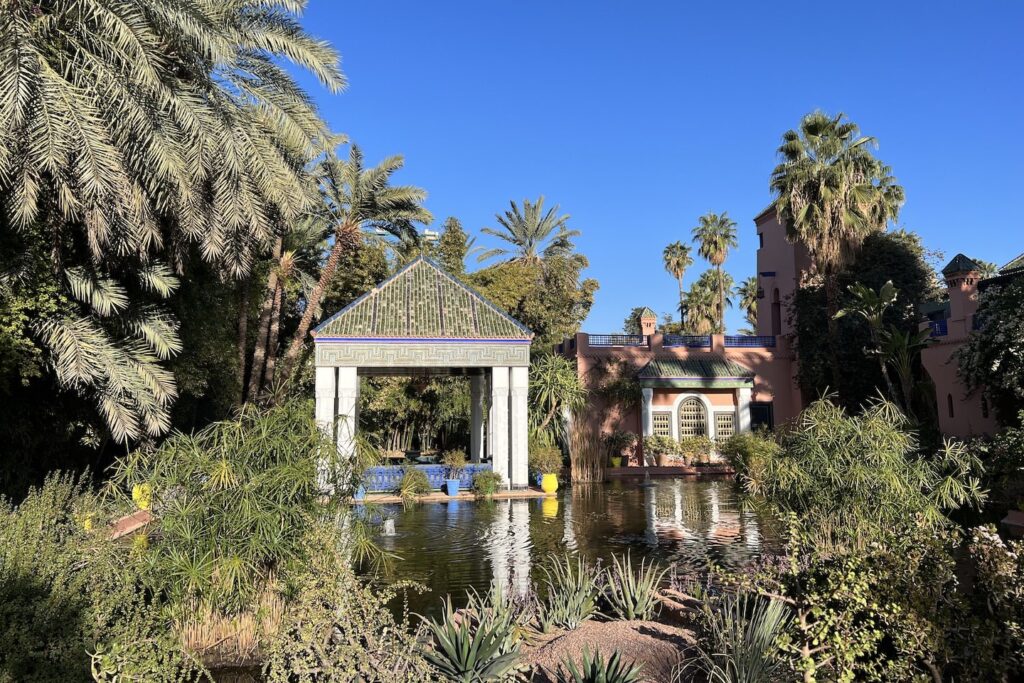
Best Time to Visit Morocco: When & Where to Go
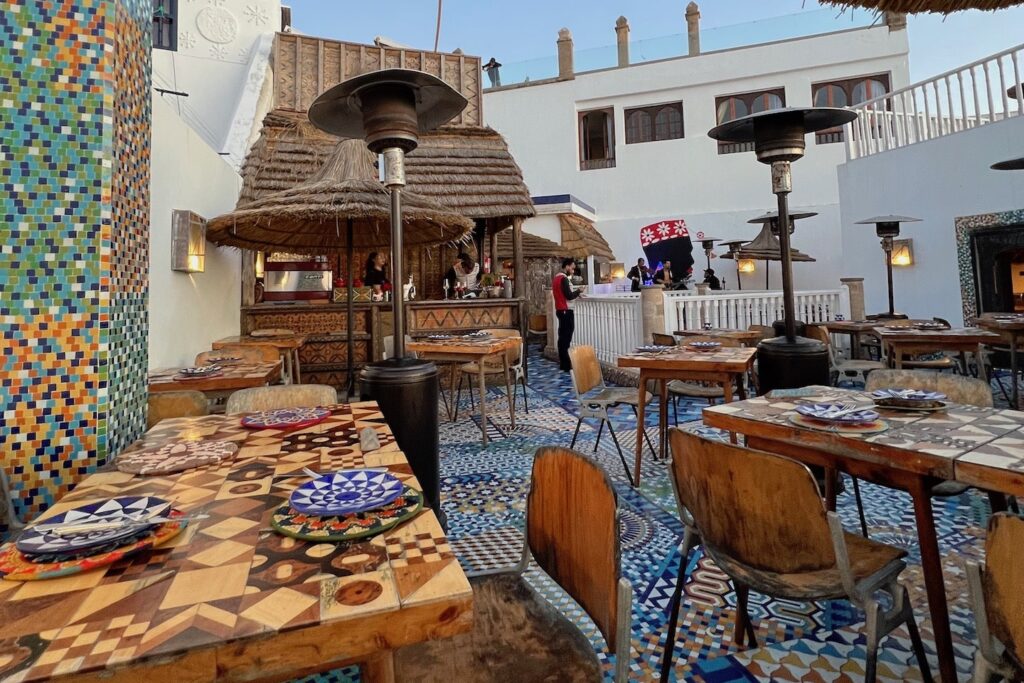
12 Best Restaurants in Essaouira (2024): The Ultimate Foodie Guide
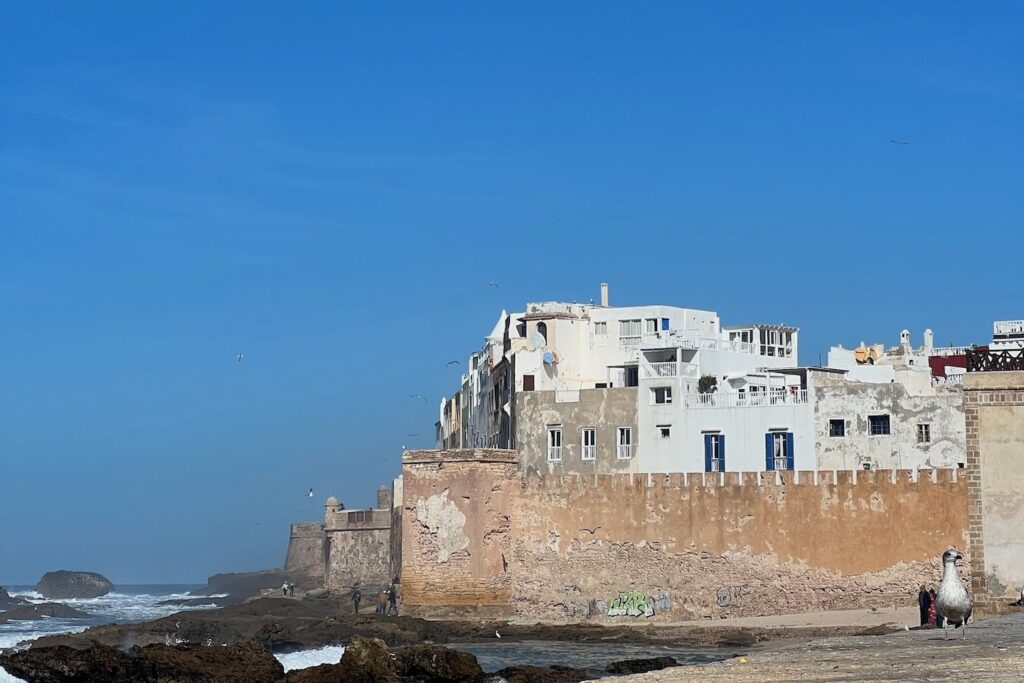
Essaouira Travel Guide 2024: Essential Information + Insider Tips
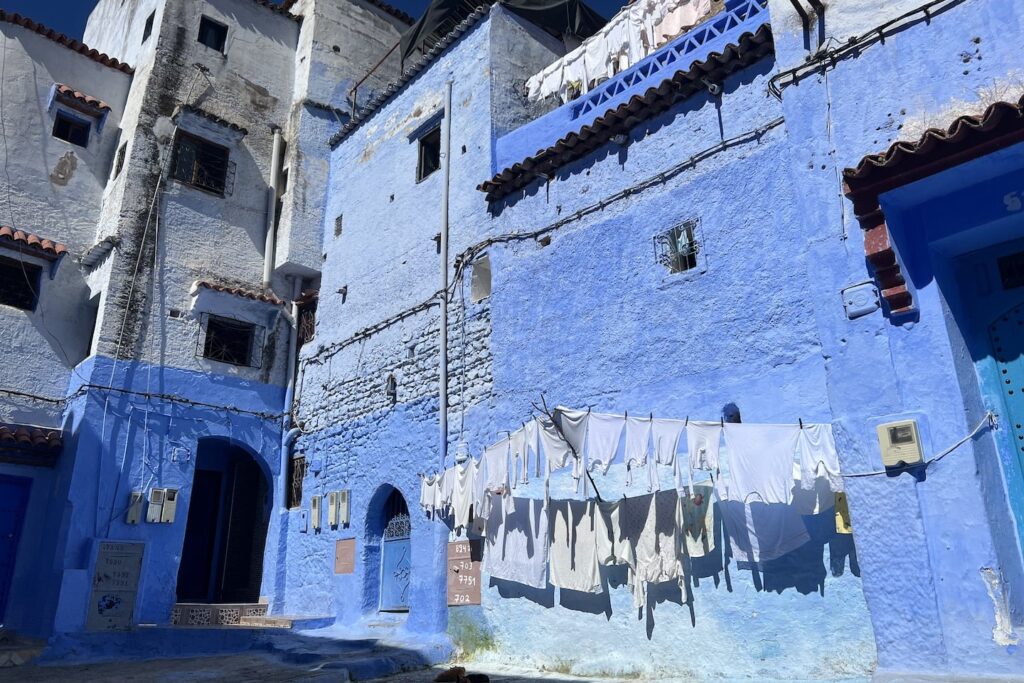
Chefchaouen Travel Guide (2024): Insider Tips + Pictures
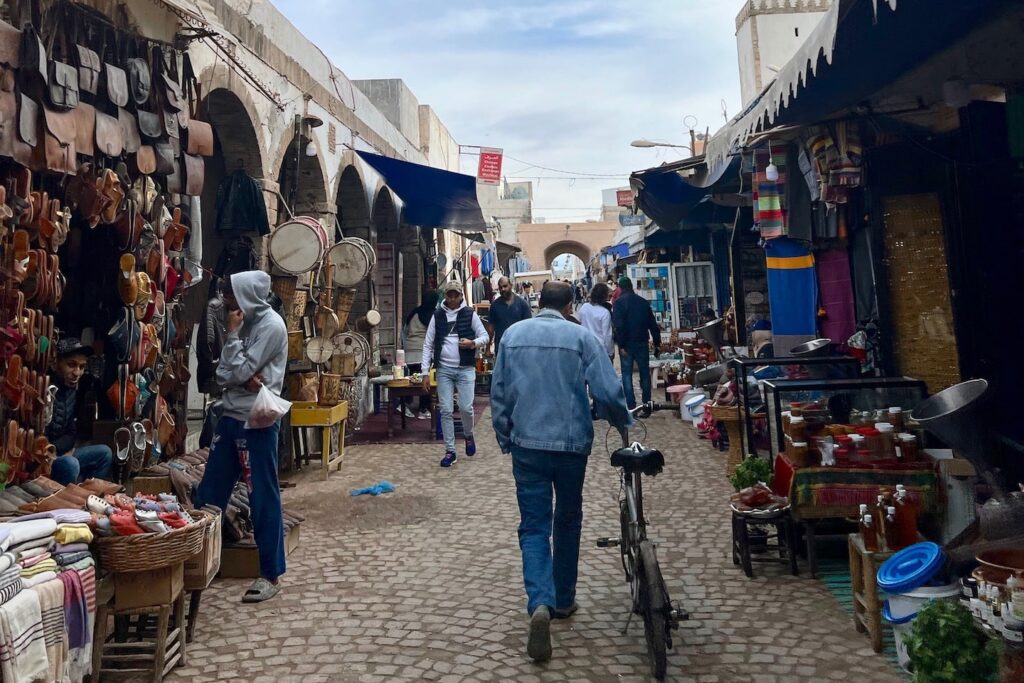
Best Time to Visit Essaouira (Season + Monthly Breakdown)

17 Unique Things to Do in Chefchaouen (With Pictures!)
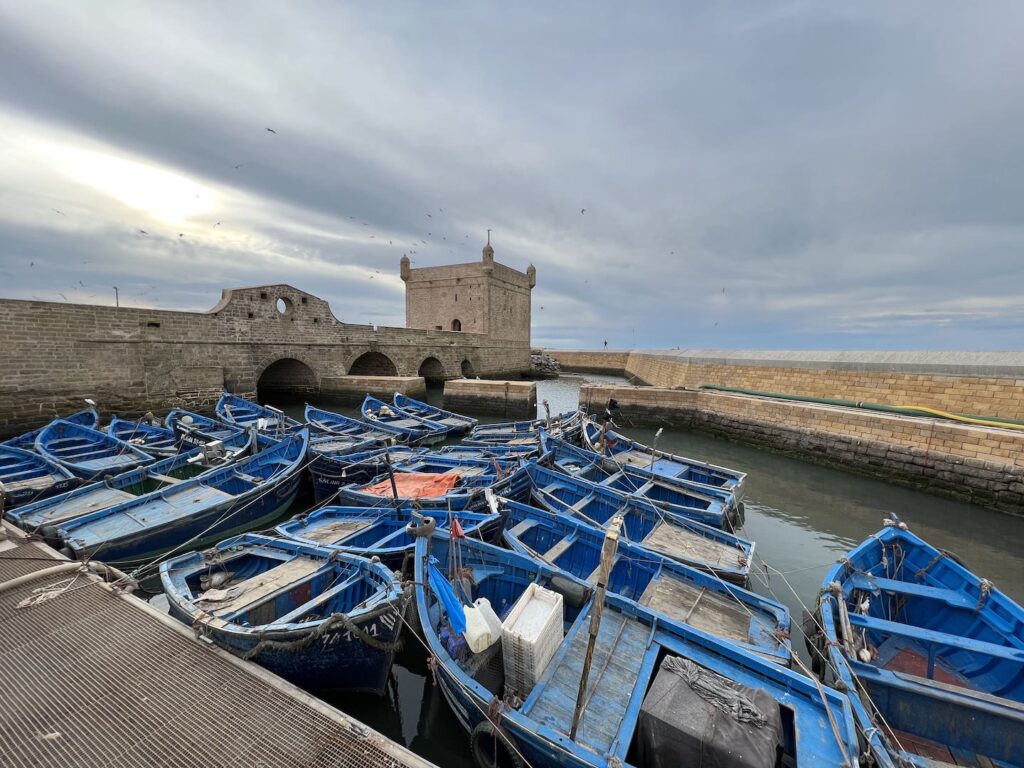
19 Things to Do in Essaouira in 2024 (+ Insider Tips)
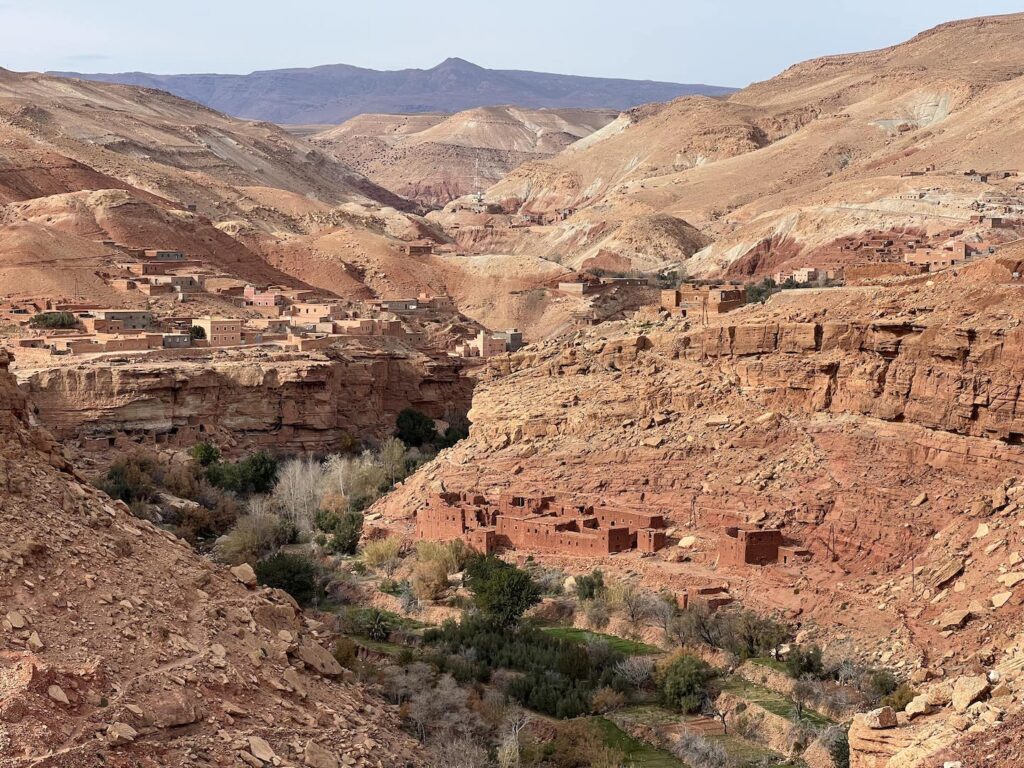
17 Captivating Places to Visit in Morocco (2024)
A first-timer's travel guide to Morocco

Update: Some offers mentioned below are no longer available. View the current offers here .
Editor's note: This post was originally published on May 26, 2015. It was updated with details from a recent trip taken by TPG Credit Cards Editor Benét J. Wilson.

Morocco is filled with sandy deserts, lively souks and Berber culture. TPG International Contributor Lori Zaino and Credit Cards Editor Benét J. Wilson share some of the hottest spots for a visit to Morocco, plus some handy travel tips for your own North African getaway.
New to The Points Guy? Sign up for our daily newsletter.
A little background
Set in the northwest corner of Africa less than 10 miles from Spain, Morocco is a world apart from Europe. Just slightly larger than the state of California, the country features gorgeous coastline, the famous Sahara Desert and the jagged, usually snow-capped Atlas Mountains. Ruled at various times by Berbers, Arabs, Spanish conquistadors and the French — plus hundreds of years as home to Jews — Morocco represents a fascinating kaleidoscope of cultures.
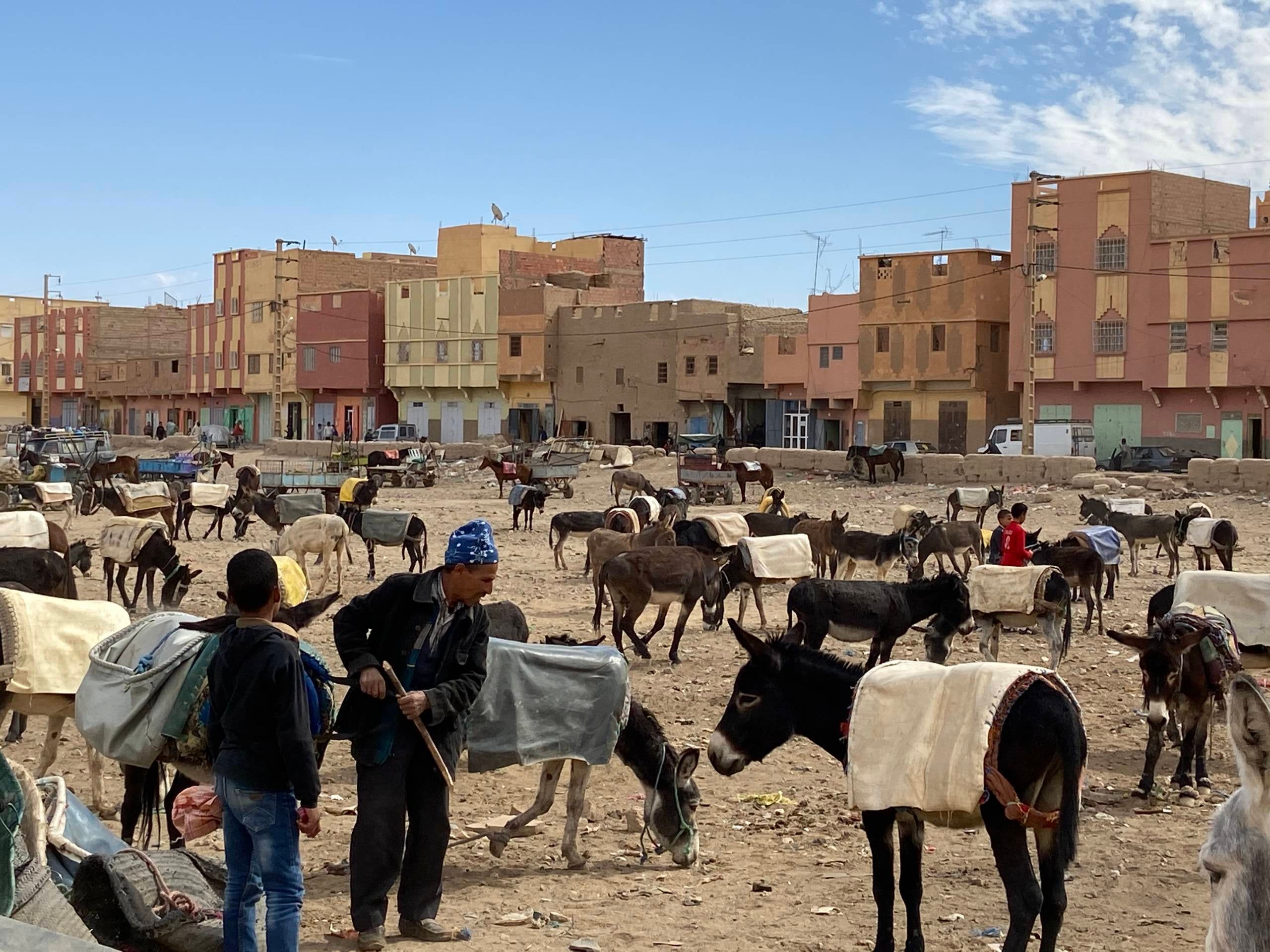
There are myriad cool retreats and excursions around the country — from camel rides to fishing tours , 4x4 desert Sahara excursions and mountain hikes — but four Moroccan cities are the most popular destinations for Western tourists: Marrakech, Chefchaouen, Essaouira and Fes.
Related reading: 9 mistakes travelers often make in Morocco

Back in 2005, when The Points Guy and Lori Zaino headed to Marrakech for the first time, they found a dizzying combination of bustling, jam-packed souks and quiet, tranquil spots hidden among the winding market streets.
Fast forward to 2020, Wilson and her group experienced the same. With the steady emergence of boutique riads (the Moroccan version of a bed-and-breakfast), trendy retreats for surfing and/or yoga (check out Surf Maroc ), glamping (consider the Dunes Luxury Camp in Merzouga ) and a booming food scene that attracts chefs from Australia and Europe, Marrakech is now sexier and safer than ever and a hot spot for celebrities such as the Beckhams, Eva Longoria and Madonna.

Though a dazzling experience of sights, sounds and colors, it can at times be overwhelming. Strolls around town might entail running across streets with no stoplights or crosswalks, being hassled by vendors, offered drugs or even tiptoeing across wooden planks to avoid huge holes in the roads.
On her second trip to Marrakech, Zaino found it as busy as ever. But she also easily found respite in the Heritage Spa — where she had a relaxing, cleansing hamman treatment — and in the delightful Jardines Le Majorelle , an exotic garden, created by designer Yves Saint Laurent and his business/life partner Pierre Bergé, full of graceful architecture that blends Moroccan and Art Deco details. It is worth a visit. Spring for admission to the site's Berber Museum — it's well worth it.
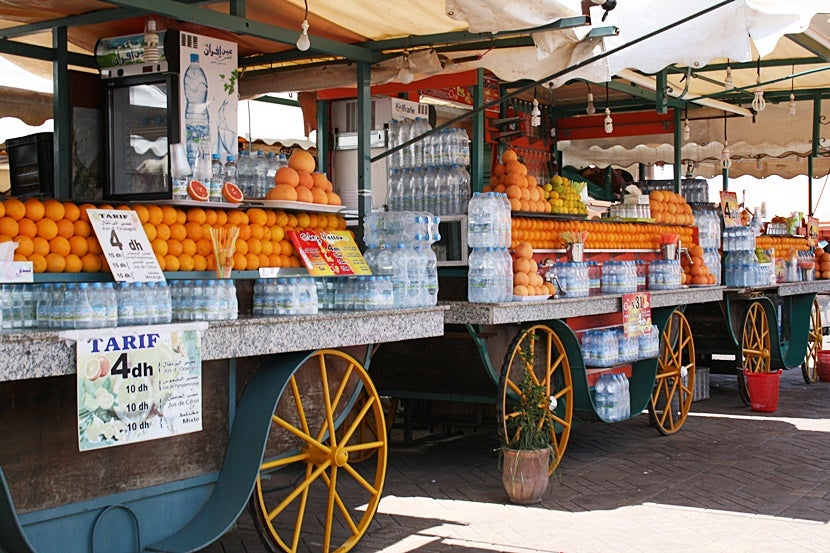
Don't miss the vibrant Jemaa El Fna main square, a UNESCO World Heritage Site where you can soak up a busy market scene as you sip a delicious fresh-squeezed orange juice and catch a view of the Koutoubia Mosque towering in the distance. For an extra dose of history and culture, check out the intricately detailed Mederesa Ben-Youseff , a 16th-century Islamic college.
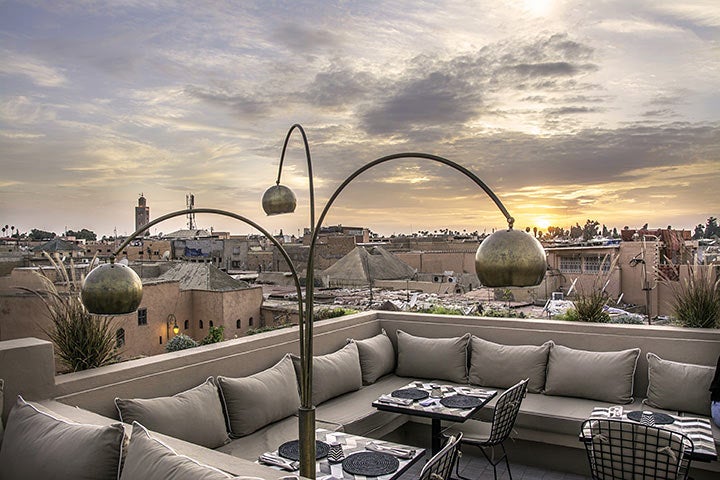
High above the Jemaa El Fna, rooftop restaurants such as the casual Chez Cafe ZaZa and the swanky Nomad provide great opportunities to kick back over a strong drink or an expansive Moroccan-French meal while overlooking the crowded square below.
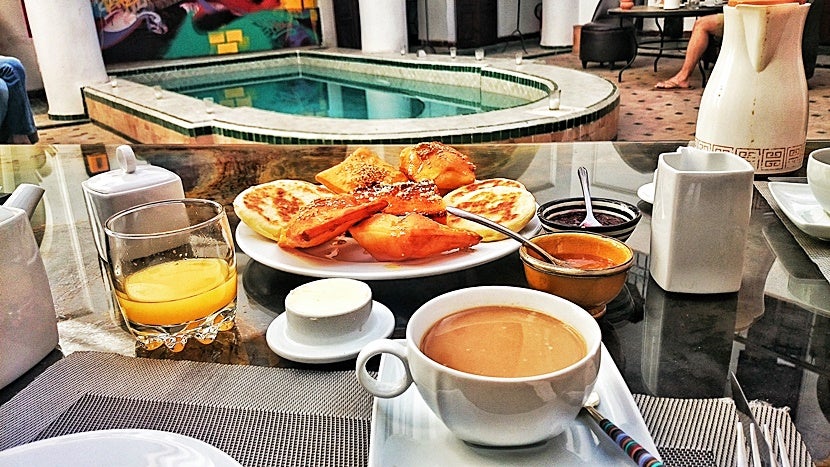
Where to stay in Marrakech
We're big fans of cozy, romantic riads, and would recommend the laid-back Riad Ka or Palacio de Las Especias , where you'll find traditional Moroccan décor, trendy European design touches and yummy, fresh-baked breakfast treats. However, La Mamounia and Peacock Pavilion are the chic design hotels everyone's whispering about, so you might want to give them a glance as well. The Riad l'Oriental is a gem hidden inside Marrakech's Medina that's worth a stay, especially since you can arrange your stay to include a Moroccan breakfast and dinner.

The Platinum Card® from American Express cardholders can get perks such as room upgrades, free Internet and breakfast at four Amex FHR properties . Visa Signature cardholders (including Chase Sapphire Preferred Card, World of Hyatt Credit Card, the Southwest Rapid Rewards® Premier Credit Card, the Southwest Rapid Rewards® Priority Credit Card and the Capital One Venture Rewards Credit Card), can get similar benefits at six Visa Signature Hotel properties .
Chefchaouen

Located 80 miles north of Fes is the Blue City. It feels like Santorini without the water and nestled among the hills. It's known for its colorful buildings, along with local crafts including intricate woven blankets and wool clothing. It also makes a goat cheese that is some of the best you'll ever taste. When asked how the buildings got their blue color, a guide explained it kept mosquitoes away in the summer. The color blue is also seen as a representation of heaven and the skies.

Where to stay in Chefchaouen
If you get a chance to stay overnight in the Blue City, do it at the Riad Zaitouna Chaouen in the outskirt of the city. All rooms are air-conditioned, have a private bathroom and equipped with a flat-screen TV with satellite channels. Ask for a room with a view of the city, and enjoy your traditional Moroccan breakfast on the roof for great views of the city.
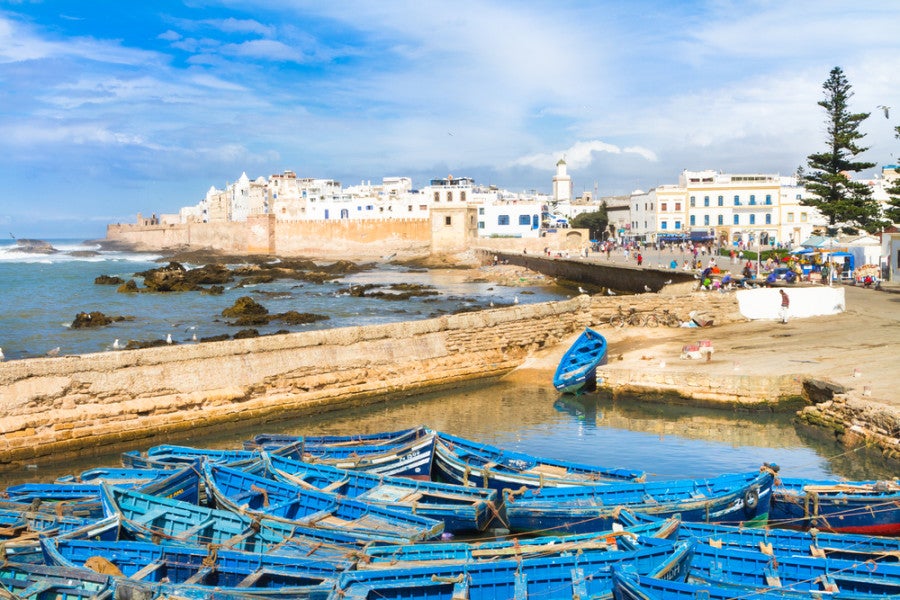
After the dusty desert of Marrakech, a visit to the unspoiled beaches of Essaouira is in order. Designed by the same Frenchman behind several of the Brittany region's port towns, this charming fishing town has a distinct French feel. However, once you enter the city center's fortified, whitewashed walls, the vibe switches back to Moroccan, with an energetic market scene. Thanks to strong seaside winds, both surfing and wind surfing are common pursuits out on the water. The best place to enjoy a relaxing evening after a long day of wandering the markets or being tossed by waves is Taros Cafe , a rooftop restaurant with traditional Moroccan tagines and couscous, as well as sparkling sea views.
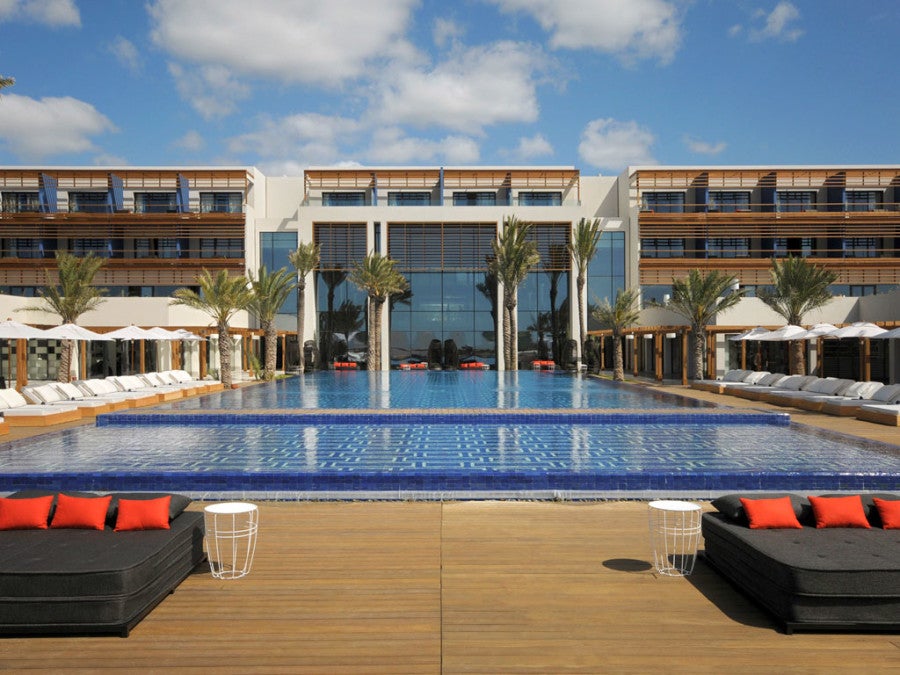
Where to stay in Essaouira
The luxurious Dar Liouba offers refreshingly bright and well-priced rooms close to both the beach and city markets. For those preferring a Western brand, the Sofitel Essaouira Mogador Golf & Spa is set on a golf course overlooking the Atlantic Ocean.

The tourism infrastructure in Morocco's medieval-era capital isn't as strong as those in the other cities, but its labyrinthine Medina and leather tanneries still serve as tourist draws. The old city center of Fes el-Bali (also a UNESCO World Heritage site) is the world's largest urban car-free zone, so go for a slow wander and prepare to get lost immediately, and to find your way eventually. The old Berber pharmacy offers endless jars of spices and remedies, but be careful when sampling these often exotic herbs; it can be hard to know how they'll affect you. If you want to visit the working leather tanneries, enlist a guide to take you in and plan to tip them a few dirhams. Also, take fresh mint or marjoram to mask the strong smell.
Where to stay in Fes
The impeccably decorated and British expat-owned Riad Idrissy strikes the balance between relaxed and upscale with whitewashed walls, intricate tiles and wood-burning fireplaces, and the intimate courtyard restaurant, the Ruined Garden , is famous for its fresh, home-cooked specialties.
Getting to Morocco

Morocco's own Royal Air Maroc offers nonstop flights to Marrakech (RAK), Essaouira (ESU) and Fes (FEZ) (generally routing through Casablanca (CMN)) from the North American cities of Montreal (YUL), New York (JFK), Washington Dulles (IAD) and Miami (MIA). And the country's flag carrier is joining the Oneworld alliance on April 1, 2020.
However, it can save you a few hundred dollars to route through major European cities such as Madrid (MAD) (a two-hour flight), Paris-Charles de Gaulle (CDG) (three hours) and London Heathrow (LHR) (four hours) on Royal Air Maroc, British Airways or Emirates , as well as on low-cost carriers EasyJet and Ryanair.
A few travel tips for Morocco

Many Moroccan locals are more likely to speak French than English, so be sure to brush up on your parlez-vous. We also encountered residents that spoke Spanish.
Temperatures are at their most mild from April to June, and September to November, while summer temps can reach 120 degrees Fahrenheit. Be sure to dress modestly — especially women. In tourist areas, you're sure to see ladies in tank tops and shorts, but you might feel more comfortable in long skirts with shoulders covered, and keep a headscarf on hand at all times.
Related reading: 8 tips for not just surviving but thriving on a group trip
Be wary of random locals offering to serve as your guides. They'll eventually ask for money, so be prepared to offer some, or to politely but assertively refuse their help in the first place. Instead, consider hiring a guide — Wilson used Trips To Morocco — to create a custom itinerary, including transportation and lodging, to take you to the places you want to see around the country
Watch who and what you photograph. Some people will get angry if you take pictures of them or their place of business, and some will insist that you either delete your photo(s) or offer them payment.

Typically, non-Muslim foreigners are permitted to photograph the exterior of mosques but are rarely allowed inside. A rare exception is Casablanca's Hassan II Mosque, the second-largest in the world. Between its interior and outdoor spaces, it can hold more than 100,000 worshippers.
There are several cards that don't charge foreign transaction fees — including the Chase Sapphire Preferred Card, the Capital One Venture Rewards Credit Card and The Platinum Card® from American Express (see rates & fees) — and therefore make sense to use on overseas vacations. However, also be sure to have Moroccan dirhams on hand for souk purchases, and don't be afraid to barter.
Additional reporting by Benét J. Wilson
For rates and fees of the Amex Platinum card, click here.
- AU$ Australian Dollar
- £ British Pound Sterling
- CA$ Canadian Dollar
- ¥ Japanese Yen
- NZ$ New Zealand Dollar
- US$ US Dollar
- Destinations
- How It Works
- Morocco Tours
Morocco Travel Guide
The ultimate guide to travel morocco like a local.
Endless desert, fascinating imperial cities, charmingly, chaotic souks, snow-capped mountain ranges, alluring culture; Morocco is a destination that holds an enduring fascination.
From its vast desert plans and stunning beaches to its arid valleys and snowy peaks; Morocco’s landscapes are almost as diverse as its culture and people. In one just one day, you can both sandboard and snowboard due to the country’s dramatic geography and well-connected travel routes.
Marking the beginning of the Silk Road, Morocco’s ancient trading past oozes from the 9,000 alleys of Fes’ El-Bali, and can be felt in the vibrant medina of Marrakesh, two of the four imperial cities in the country. As diverse as its cities, through centuries of Arabic, Berber and European influences, Morocco’s alluring culture intrigues every traveller and awaits discovery in every crevice.
From the mosque-filled, vibrant cities, you can make your way along the dusty roads past kasbahs and caravans to a world that is uniquely Moroccan. Ouarzazate, the gateway to the desert, has long been a popular stop for African traders and is home to one of the best places to visit in Morocco, Ait Ben Haddou.
When you can finally tear yourself away from the fine earthen-clay architecture, Merzouga awaits as the doorway to one of the most impressive Morocco desert areas. No Morocco tour is complete without spending a day, or even a night or two sleeping under the stars in the desert in a Berber camp.
In between sightseeing, your hunger can be satiated by one of the most famous cuisines in the world, richly enjoying a balance of African, Mediterranean and Arab dishes with a twist that is best discovered on a Morocco private tour .
Whether you have a Morocco desert tour in your sights or you’re coming to tick off the imperial cities and all the bucket-list stops, this intriguing nation welcomes travellers of all styles with open arms. Read on for everything you need to know packed into this handy Morocco travel guide.
When Is the Best Time to Travel Morocco

The best time to take a Morocco holiday if you’re looking for a pleasant climate and summer vibes without it being extreme is spring (April to May) or early autumn (September to October) - also known as the shoulder seasons.
You’ll want to avoid the height of summer (July and August) as the temperatures, especially in the south, make it far too hot to explore in the day. If you’re planning to visit Morocco in the winter, you should be prepared for it to drop to bitterly cold temperatures at night. In winter, the coasts are wet, and the mountains receive a lot of heavy rainfall; it’s not the best time to visit Morocco.
If you’re looking to go hiking in the Atlas Mountains , then the shoulder seasons are your friend. If you’re looking to be a beach bum and try out surfing in places like Tangier and Essaouira then the summer with its high temperatures and cooling ocean breeze is the best time for your Morocco trip.
Best Places to Visit & Unique Experiences to Add to Your Morocco Itinerary

You could write a book on all of the invaluable experiences on offer in Morocco. To save time, we’ve surmised the best Morocco destinations and things to do;
Marrakesh Desert Tours & Camel Trekking in the Sahara
Perched on the border of the Western Sahara and Algeria, Morocco has become a top destination to experience the desert. Known for its luxury camps, unique Berber experiences and camel trekking, Morocco desert trips are accessible from multiple cities in Morocco and open you up to a world of experiences.
This Marrakesh desert tour takes you on a journey through the Dades Valley, from Marrakesh to the Sahara Desert and finally, to the imperial city of Fes. Picture yourself riding into the sandy sunset on a camel, and you’re there!
Jemaa El-Fna & Marrakesh
There is nowhere quite like the Jemaa El-Fna Square. A chaotic mix of Moroccan and international culture, serving up delicious dishes and entertainment from storytellers, magicians and snake charmers, a surprise awaits you around every corner.
By day, the square is a large open space where traditional pharmacists display cures for all to see and those with flutes charm cobras. By night, thousands of people pour in to spend the night eating, shopping, listening to live music and more. It is one of the most fascinating places to go in Morocco.
Make the most of this eclectic city on this 4-day Marrakesh tour .
In a country of historical imperial cities, there is one that stands out. Fes is the oldest and arguably most impressive imperial city; it is an eclectic burst of spices, sounds and colours all accumulating in the city’s vast medina.
Here, you can lose yourself in the maze of its medieval streets. Designated a UNESCO World Heritage Site, Fes’ Medina is known for its vibrant souks, timeless architecture and ancient atmosphere.
You can travel Morocco and experience the beating heart of the city on this 8-day Marrakesh to Fes tour !
Trekking in the High Atlas Mountains
If you were intrigued by the earlier statement of being able to sandboard, snowboard and hike in just one day then the Atlas Mountains in Morocco is your ideal destination.
North Africa’s highest mountain range, the Atlas Mountains are characterised by miles of mountains, soaring peaks, dramatic canyons and charming Berber villages running diagonally across the country forming its jagged backbone. Since the arrival of paved roads in 2013, the Atlas Mountains have begun attracting attention from adventurers from all over the world including kayakers, rafters, trekkers and more.
For avid hikers, the High Atlas Mountains are your playground. Spend three days trekking in the High Atlas Mountains on the popular Mount Toubkal trek, and you’ll never look back!

Ait Ben Haddou
Sitting on the outskirts of Ouarzazate on the ancient trading route between Sudan and Marrakesh, Ait Ben Haddou is a vast ancient complex of kasbahs known as an ighrem . Fortified by clay walls and standing tall on the plains, Ait Ben Haddou is a sight that will take most traveller’s breath away.
The finest example of Moroccan earthen clay architecture that still stands today, Ait Ben Haddou is a fortified village that dates back to the 17th century and has appeared in several films and TV series, including The Mummy, Gladiator and Game of Thrones.
You can travel through the imperial cities, the desert and ancient kasbahs, including Ait Ben Haddou, on this 12-day Morocco itinerary .
Chefchaouen
Morocco’s famous ‘Blue City’, Chefchaouen sits pretty below the cliffs of the Rif mountain range dominated by blue hues of paint covering every doorway, wall, path and house in the city.
Tumbling down from the mountainside, Chefchaouen’s Medina enchants every visitor with its cafe-filled main square perfect for sipping mint tea and people-watching to its grand clay-hued kasbah. Despite claiming the title of one of the prettiest places to visit in Morocco, Chefchaouen has retained its wonderful laid-back atmosphere and authenticity from years gone by.
This 8-day holiday in Morocco invites you to explore its imperial cities as well as the charming blue city of Chefchaouen.
The Ruins of Volubilis
Just beyond the imperial city of Meknes, you’ll find the partly excavated Berber and Roman ruins of Volubilis. Developed during the 3rd century BC initially as a Berber settlement, Volubilis grew rapidly into a kingdom spanning 42 hectares circumambulated by stone city walls added during Roman rule in the 1st century.
Falling as fast as it rose, the city lay inhabited from the 3rd century until the 8th century then abandoned once again in the 11th century. Today, it has been extensively restored and excavated to reveal fine mosaics, public buildings and houses.
Now protected as a UNESCO World Heritage Site, you can explore the ruins of Volubilis on this 7-day Morocco vacation .
Casablanca Architecture
The economic and business centre of Morocco, Casablanca is often missed off the classic itineraries in favour of cities that have more of an immediate bucket-list-ticking draw. However, Casablanca’s architecture is some of the finest in Northern Africa.
Having been a gem of the French empire, a wealth of Moorish art and art-deco buildings scatter the downtown areas where you only need to look up to be impressed by the fine buildings with wrought-iron balconies and tumbling flower arrangements.
Of course, no tour is complete without visiting the impressive Hassan II Mosque like on this 6-day Morocco tour from Casablanca . You’ll immediately recognise the mosque’s minaret which stands as a symbol of Morocco as a whole.
Morocco’s laid back beach town, Essaouira boasts charming harbourside houses, a maze of markets and inviting beaches. Each makes for the perfect escape from the sometimes overwhelming cities.
In Essaouira, you’ll find yourself strolling around the picture-perfect harbour, lounging on the beaches and dipping in and out of the terraced restaurants sampling stunning seafood as you go. You can experience all this on this 5-day Morocco holiday to Agadir, Marrakesh and Essaouira .
How to Get Around on Your Tour of Morocco

Morocco’s long-standing history as an ancient trading route has fed into its current-day transport links and options; getting around Morocco is relatively easy.
Morocco’s rail network connects major cities like Marrakesh, Casablanca, Fes and Meknes with ease. If you’re short on time, there’s now a high-speed train that runs between Casablanca and Fes. Most often, the trains are comfortable, affordable and reliable with few disruptions. If you’re especially short on time, domestic flights between cities run often and are affordable if you book ahead of time.
For a cheaper, possibly more local experience, nationally-run buses lace the country connecting smaller cities and towns. Whilst they are cheap, these buses can be slow and often overcrowded. If you’re just travelling between cities, then it may be better to jump into one of Morocco’s ‘grand taxis’, which carry up to six people and only leave once the taxi is full.
If public transport isn’t your style or you’d like to experience Morocco with a local guide at your side, then you should consider a private Morocco tour . Customised to your liking, private tours in Morocco enable you to experience the country through a local’s eyes, ensuring you never miss the best places to see and eat, off the beaten path. Our Local Designers in Morocco are on the ground ready to create your custom Morocco itinerary.
Where to Stay When You Travel Morocco

Morocco presents a wide range of excellent accommodation options to suit every budget and need. For those on a tight budget, Morocco’s backpacker scene shows up with an array of pleasant hostels and shared accommodation. For those that want to splash out, a number of international luxury chains can be found in Morocco’s major cities.
When it comes to hotels in Morocco, there’s a wide range of choice from budget to luxury and of unclassified and classified. In this case, classified doesn’t always mean superior, so it’s often worth taking a gamble on a place if the reviews are good or you’ve been recommended. As always, it pays to do some research before booking your stay.
Riads are traditional guesthouses in Morocco. Usually refurbished, most riads date back to the 18th or 19th century and can be found in the medinas of Morocco’s bustling cities. If you’re looking for something a little more unique to Morocco, then a riad is the best option. However, be prepared to pay a little more than a hotel but be doubly enchanted by your stay!
To be exact, a riad can only be classified as such if it has a garden divided into quarters with a central fountain. Accommodation in Morocco which features rooms around a courtyard are known as ‘dars’.
Experience the wonder of staying in riads on this 7-day Morocco to Fes tour !
Desert Camps & Berber Experiences
No trip to this country of sand and stone would be complete without a Morocco desert tour from Marrakesh. If you choose to stay overnight in the desert, you can truly experience the Berber life by staying in a desert camp. Just like on this 7-day luxury desert tour of Morocco !
Tip : If you are visiting Morocco in the winter, make sure your accommodation has heating as it can be very chilly!
Must-Try Food and Drink on Your Tour of Morocco

With strong traditions rooted in history, influence from European, Arabic and African cultures and a diverse landscape of vibrant cities, mountain ranges and deserts, Morocco is one of the greatest cuisines in the world.
Moroccan food takes on subtle spices, with aromatic scents and intriguing flavour combinations to make unique mouthwatering dishes. From so-good-they-named-it-twice side dish, couscous, to succulent kebabs and delicious soups, food is sure to be a highlight of your Morocco travel package.
Let’s dive in with a handful of the must-try foods and drink!
Tagine (or tajine, as is often used) is one of the staple dishes of Morocco, one you’ll find everywhere. Classic tagines consist of lamb, prunes and almonds or chicken, olives and lemon cooked in an earthenware cooking pot with a conical clay lid that slowly steam-cooks the delicious combinations to result in a bubbling, mouthwatering dish. You’ll find tagines, served with bread or couscous, everywhere from roadside cafes to high-end restaurants.
Pastilla or B’stilla
For a dish completely unique to Morocco, you should try pastilla, or b’ stilla as it’s also known. This savoury meat pie is made with a paper-thin filo pastry outer and is often infused with saffron, cinnamon and fresh coriander, and dusted with cinnamon and icing sugar to complete. Camel meat is often a popular ingredient in this dish. If Fes is the culinary heart of Morocco, then pastilla sits at the centre.
The drink of choice for every local and the national tipple of the country, mint tea is to Morocco what whisky is to Scotland. Gunpowder tea is added to a teapot which is stuffed with springs of spearmint and heavily sweetened with sugar. At art to pouring it, mint tea is best poured from a height into a tea glass to create a froth known as the crown. The higher the teapot that’s poured, the better.
Whilst drinking alcohol isn’t a big deal in this Islamic country, mint tea will be your go-to choice. Be aware - it’s extremely addictive!
Harira is a classic spicy, steaming bowl of pasta and beans, and often meat. Tomatoes, chickpeas, lentils and lamb complete with a squeeze of lemon juice and a sprinkle of coriander completes this dish.
Harira is the go-to starter for any meal and is usually served with chebakkiya, a sweet sticky pretzel.
Special Events & Festivals in Morocco

Morocco’s events and festivals are enticing, exciting and enthralling. Here’s our pick of the top special events and festivals in Morocco;
Fes’ Festival of World Sacred Music
From grand musical performances in magnificent monuments to intimate concerts in charming riads, this festival is your chance to experience sacred music from an abundance of civilisations and religions from all over the world.
Imilchil Wedding Festival
Each year, several Berber communities gather in the rural town of Imilchil to celebrate the ritual of allowing young men and women from different communities to choose their own spouses. The festival was born out of a legend of two star-crossed lovers who were forbidden to marry and drowned themselves in their own tears. Many couples get engaged at the festival, whilst the marriages take place later.
Kalaat Mgouna Rose Festival
One of the most unique and oldest festivals in Morocco, Kalaat Mgouna, celebrates the harvest of its Valley of Roses’ (Dades Valley) fragrant rose fields. The three-day festival annually occurring in June attracts people from all over the world with rose parades, stalls selling rose products and traditional performances.
Marrakesh Popular Arts Festival
Attracting musicians, artists and entertainers from all over the world, this festival takes place in Jemaa El Fna with a special after-dark performance outside the city walls featuring hundreds of traditionally-dressed charging horsemen. It is a sight to behold!
Ramadan and Eid al-Fitr
Ramadan is a time to purify the soul by abstaining from food, drink and other needs during daylight hours of the ninth month in the Muslim calendar each year. The festival invites worshippers to refocus their attention on God. The end of Ramadan month is marked by Eid al-Fitr, a several-day celebration of feasting and traditional performances.
Quick Tips & Important Facts To Read Before You Travel Morocco

Language: The two official languages are Arabic and Amazigh. However, with Morocco’s strong Spanish, Berber, French and Arabic influences it is not uncommon for locals to speak several languages including English which is widely spoken.
Currency: Morocco uses the Moroccan Dirham (MAD). At the time of writing, 1 USD is roughly 9.17 MAD.
Photos: Always ask before taking photos of people or possessions in Morocco. In some cases, you may be expected to pay if you want to take a picture. Generally, politely asking before taking a picture should be a rule of thumb for anywhere you travel.
Dress appropriately: When in Morocco, it is important to cover up and dress appropriately out of respect for the locals. Always keep a scarf or shawl handy to cover up.
ATMs: Withdrawing cash in Morocco can be a bit hit or miss with ATMs often running out of cash or breaking down so be prepared and bring enough cash with you.
Haggle to your heart’s content: Haggling is engrained in Moroccan culture and is seen as a must in bazaars, souks and markets so get practising your bargaining skills!
Fridays: Friday is a holy day in Morocco so most shops and attractions will close.
Mosques: Despite having your hopes up of entering some beautiful mosques, if you are not Muslim, be prepared to be turned away from most with the exception of the Hassan II Mosque in Casablanca.
Ready to Travel Morocco?
There really is no country like Morocco. The diversity of activities, landscapes and cultures on offer will draw you in like no place you’ve been before. Choosing to travel Morocco on a custom tour designed by one of our Local Designers in Morocco will ensure an experience of a lifetime.
Browse our gallery of fully-customisable Morocco tours or design your own trip to Morocco ! Either way, you’ll be connected with one of our Local Designers on the ground who will make your dream trip a reality!
Design Your Own Morocco Trip
Connect with our Local Designers in Morocco , share your trip requirements and they will design the perfect trip, just for you.
Top Tours in Morocco

5-Day Discover Magical Fes

8-Day 4x4 Moroccan Highlights Adventure

11-Day Morocco Discovery

8-Day Luxury Imperial Cities & Desert
Call us : +212 662 432890
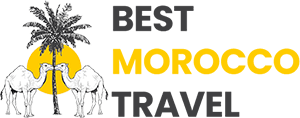
Morocco Travel Guide: Experience the Magic of North Africa
- April 11, 2024
- Travel Blog

Morocco is a fascinating country that has a lot to offer for travelers looking for an exotic and unique destination. Located in North Africa, it is a place where you can explore a rich and diverse culture, history, and natural beauty. From the lively markets and colorful cities to the stunning beaches and majestic mountains, there is a dose of dopamine for everyone in Morocco.
One of the best ways to experience the culture of Morocco is through its delicious and aromatic cuisine. Moroccan cuisine is a balance of Arab, Berber, and Mediterranean savors, creating a unique fusion of flavors and spices. Some of the most popular dishes include tagine, couscous, and pastilla that will tantalize your taste buds and give you a true taste of Morocco. In addition to its food, Morocco is also known for its incredible architecture and design. The country is home to some of the most beautiful and intricate buildings in the world, such as the Hassan II Mosque in Casablanca and the Bahia Palace in Marrakech. Visiting these sites is a must for anyone interested in history and architecture. Another highlight of Morocco is its stunning natural landscapes. From the vast Sahara Desert to the picturesque Atlas and Rif Mountains, the country boasts some of the most breathtaking scenery in the world. Outdoor enthusiasts will enjoy hiking, camel trekking, and camping in these areas, while those seeking relaxation can soak up the sun on the pristine beaches of Essaouira or Agadir.
Whether you’re interested in exploring the culture, history, or natural beauty of Morocco, there is something for everyone. With Best Morocco Travel , we can help you plan your dream vacation to this beautiful country and ensure that you have an unforgettable experience.
Best time to go to Morocco
The best time to visit Morocco depends on your preferences and the activities you want to do. The peak season is from March to May and September to November when the weather is mild, and the landscapes are green and lush. This is an excellent time for hiking, exploring the cities, and enjoying outdoor activities.
If you’re interested in visiting the Sahara desert , the best time is from November to February when the weather is cooler and more comfortable. The summer months from June to August can be scorching, especially in the desert regions, and may not be the best time for outdoor activities.
Morocco is a year-round destination, and each season has its unique attractions and experiences. At Best Morocco Travel agency , we can help you plan your trip based on your preferences and the best time to visit. Whether you’re looking for cultural experiences, outdoor adventures, or simply relaxing in a beautiful setting, we’ll create an itinerary that suits your needs and ensures you have an unforgettable Moroccan experience.
Travel visa requirements for Morocco
Morocco has a relatively straightforward visa policy, and many visitors can enter the country without a visa for stays of up to 90 days. Citizens of visa-exempt countries, including the US, Canada, and most European countries, can enter Morocco with just a valid passport. However, it’s essential to check the visa requirements before traveling as they can change at any time due to politics and politicians.
For citizens of countries that require a visa, they can apply for a visa through the Moroccan embassy or consulate in their country. The visa application process typically requires a valid passport, a completed visa application form, and a passport-sized photo. In some cases, applicants may need to provide additional documentation, such as proof of travel arrangements, accommodation, and financial means.
At Best Morocco Travel agency , we understand that visa requirements can be confusing, and we’re here to help. We can provide you with the most up-to-date information on visa requirements for your specific nationality and guide you through the application process if necessary. With our expert assistance, you can focus on enjoying your trip to Morocco without worrying about visa issues.
Getting There: Morocco’s Major Cities and Airports
As a travel agency, Best Morocco Travel understands the importance of easy and hassle-free travel arrangements for our clients. Morocco has several major cities and airports that serve as entry points for international visitors. The busiest airport in the country is Mohammed V International Airport in Casablanca, which is served by numerous airlines from all over the world. Other major airports include Marrakech Menara Airport, Agadir Al Massira Airport, and Fes Saiss Airport.
Depending on your location and airline preferences, there are several flights to these airports from various cities across the globe. Some popular airlines that fly to Morocco include Air France, British Airways, Lufthansa, Emirates, and Royal Air Maroc. It is important to note that flight prices can vary greatly depending on the time of year and how far in advance you book. As a travel agency, Best Morocco Travel can help you find the best flight deals to suit your needs and budget. here are some suggested flight itineraries to Moroccan airports:
- 1. New York (JFK) to Casablanca (CMN) with Royal Air Maroc
- 2. London (LHR) to Marrakech (RAK) with Ryanair
- 3. Paris (CDG) to Fes (FEZ) with Air France
- 4. Istanbul (IST) to Agadir (AGA) with Turkish Airlines
- 5. Dubai (DXB) to Tangier (TNG) with Emirates
These are just a few examples, and there are many other airlines and airports that connect to Morocco. It’s always a good idea to shop around and compare prices and schedules to find the best option for your travel needs.
Cultural Wonders: Exploring Morocco’s Rich History and Traditions
Morocco is a country with a rich and diverse cultural heritage that can be traced back to prehistoric times. Visitors to Morocco can explore a range of historical sites and cultural wonders that offer a glimpse into the country’s fascinating past.
One must-visit location for history buffs is the ancient city of Fes, which was founded in the 9th century and is considered to be the cultural and spiritual heart of Morocco. Fes is known for its sprawling medina, which is home to numerous mosques, palaces, and Madrasas (Islamic schools). The city is also famous for its leather tanneries, which have been in operation since medieval times. Another must-see destination is Marrakech, a city that has been a hub of commerce and culture for centuries. Marrakech is home to the historic Koutoubia Mosque, as well as the Bahia Palace and the Saadian Tombs. Visitors can also explore the city’s vibrant souks (markets) and sample traditional Moroccan cuisine at the famous Jemaa el-Fnaa square.
For those interested in Morocco’s nomadic heritage, a visit to the Sahara desert is a must. Visitors can take a camel trek into the desert and spend the night in a traditional or Luxury Berber tent, where they can enjoy a traditional Berber meal and learn about the nomadic way of life.
Best Morocco Travel suggests considering a guided tour to explore these cultural wonders, as well as hiring a knowledgeable local guide to enhance the experience and provide deeper insights into the country’s rich history and traditions.
Natural Beauty: Morocco’s Stunning Landscapes and National Parks
Morocco boasts an impressive variety of natural landscapes, from the rugged Rif Mountains in the north, the Atlas Mountains to the vast Sahara desert in the south, and everything in between. One of the most popular destinations for nature enthusiasts is the Atlas Mountains, where you can go trekking , hiking, or mountain biking to explore the stunning scenery and experience traditional Berber culture. There are also several national parks and reserves in Morocco, including the Toubkal National Park, which is home to the highest peak in North Africa, and the Souss-Massa National Park, which is a great spot for birdwatching and wildlife observation.
Another must-see natural wonder in Morocco is the Sahara desert, where you can take a camel trek or a 4×4 tour to explore the endless sand dunes and experience A memorable experience that many travelers seek in Morocco is spending a night in a traditional Bedouin camp under the stars. This unique opportunity allows visitors to immerse themselves in the rich culture and traditions of the Bedouin people, who have lived in the Moroccan desert for generations. Sleeping in a nomadic-style tent, listening to the sounds of the desert at night, and waking up to a breathtaking sunrise is a once-in-a-lifetime experience that should not be missed. The coastal cities of Essaouira and Agadir are also great places to enjoy Morocco’s natural beauty, with stunning beaches, rugged cliffs, and clear blue waters.
Whether you’re a nature lover or just looking for a change of scenery, Morocco’s natural wonders will leave you in awe.
Culinary Delights: Tasting Morocco’s Delicious Cuisine
Morocco’s cuisine is a rich and diverse reflection of its long and storied history. The country’s location on the crossroads of Africa, Europe, and the Middle East has resulted in a blend of culinary traditions that make Moroccan cuisine truly unique. From the hearty tajines to the fluffy couscous, the aromatic spices to the sweet pastries, Morocco’s food is a celebration of flavor, color, and texture.
One of the most iconic dishes in Moroccan cuisine is tajine, a slow-cooked stew typically made with meat, vegetables, and a blend of aromatic spices such as cumin, ginger, and cinnamon. Another popular dish is couscous, a fluffy semolina grain that is often served with vegetables and meat and can be flavored with a variety of spices, herbs, and sauces.
Moroccan cuisine also boasts a range of delicious street food, such as Bissara, a hearty soup made from fava beans and spices, or Msemen, a flaky, layered pastry that is often filled with savory ingredients like cheese or vegetables. And for those with a sweet tooth, Morocco offers a wealth of tempting desserts, from the sticky-sweet honey and almond-filled pastries known as Briouats to the refreshing mint tea that is often served after meals.
Morocco’s cuisine is a feast for the senses, and a journey through the country’s culinary delights is sure to leave any food lover feeling satisfied and inspired.
Where to Stay: Choosing the Perfect Accommodation
Choosing the right accommodation in Morocco depends on a variety of factors, including your budget, preferred level of luxury, and the type of experience you are looking for.
For those on a tight budget, Morocco offers a range of budget-friendly accommodation options, including hostels and guesthouses that offer basic amenities at an affordable price. These options are ideal for backpackers and travelers who prioritize affordability and value over luxury and comfort.
For those seeking a more luxurious experience, Morocco boasts a number of high-end hotels, riads, and resorts that offer top-of-the-line amenities and services. Many of these properties are housed in restored historic buildings, featuring beautiful traditional Moroccan architecture and design.
If you’re looking for a more immersive cultural experience, staying in a traditional Moroccan riad is a great option. Riads are historic houses or palaces that have been converted into guesthouses, offering a unique blend of traditional Moroccan architecture and design, along with personalized service and hospitality.
For those seeking a more adventurous experience, camping, and glamping are also popular options in Morocco, particularly in the country’s vast deserts and rugged mountains. Many tour companies offer camping and glamping packages, allowing travelers to experience Morocco’s natural beauty and unique landscapes while still enjoying comfortable accommodations.
Certainly! Morocco is home to a variety of unique and beautiful accommodations, each with its own distinct charm and character. Here are a few examples of different types of accommodations you can find in Morocco:
- 1. Riads: These traditional Moroccan guesthouses are typically located in the old medina of cities like Marrakech and Fes. They feature beautiful architecture, lush gardens, and a peaceful atmosphere away from the earsplitting city. Some popular riads include Riad Les Yeux Bleus in Marrakech and Dar Roumana in Fes.
- 2. Luxury hotels: Morocco is home to a number of high-end hotels and resorts that offer top-of-the-line amenities and services. Some of the most luxurious options include the Royal Mansour in Marrakech, the Four Seasons Resort in Casablanca, and La Mamounia in Marrakech.
- 3. Desert camps: For those seeking an adventurous experience, spending a night in a desert camp is a must. Best Moroccan Travel offers camping and glamping options in the Sahara desert, allowing travelers to enjoy a unique and unforgettable experience under the stars. Some popular desert camps include Luxury desert Camp in Merzouga and Erg Chigaga Luxury Desert Camp in Zagora.
- 4. Budget-friendly accommodations: For travelers on a budget, there are plenty of affordable options in Morocco, including hostels and budget hotels. Some popular budget-friendly options include Riad Dia in Marrakech and Hotel Central in Casablanca.
Ultimately, the perfect accommodation in Morocco will depend on your personal preferences and priorities. Whether you’re seeking affordability, luxury, cultural immersion, or adventure, Morocco offers a range of options to suit your needs. No matter what type of accommodation you choose in Morocco, you’re sure to find a unique and memorable experience that will enhance your trip to this beautiful country.
Getting Around: Navigating Morocco’s Transportation Options
As a leading Morocco travel agency , we understand that getting around the country can be an adventure in itself, with a variety of transportation options available to suit every traveler’s needs. That’s why we offer a range of services to help you navigate Morocco’s transportation options and create a personalized itinerary that suits your interests and preferences.
One of the most popular ways to explore Morocco is by private car. Our experienced drivers are familiar with the country’s roads and can provide valuable insight into the local culture, allowing you to explore at your own pace and avoid the annoyance of navigating public transportation or language barriers.
For longer distances, train travel is a great option, with modern and efficient trains running between major cities like Marrakech, Fes, and Casablanca. We can help you purchase first or second-class tickets and plan your journey to ensure a comfortable and enjoyable ride.
Within cities and towns, taxis and buses are often the most convenient options for getting around. Our team can help you book taxis or provide information on local bus services, making it easy to explore urban areas and reach your desired destinations.
For those seeking a truly unique and unforgettable experience, we offer guided camel or horseback tours through the Sahara desert or other scenic areas. Our expert guides will ensure your safety and comfort as you immerse yourself in Morocco’s stunning natural beauty.
No matter how you choose to explore Morocco, we’re here to help you navigate the country’s transportation options and create a customized itinerary that meets your travel goals.
Safety Tips: Staying safe during your visit
We want you to have a safe and enjoyable visit to Morocco. While it’s important to be aware of safety precautions, we also want to assure you that Morocco is a generally safe country with friendly and welcoming people. To help ensure your safety, we recommend taking some common-sense precautions. And if you’re ever unsure about the safety of a particular area or event, don’t hesitate to ask our team for guidance.
At the same time, we encourage you to embrace the adventure and immerse yourself in the vibrant culture and stunning natural beauty of Morocco. Take a guided camel or horseback tour through the Sahara desert, sample the delicious cuisine at local markets and restaurants, and explore the country’s rich history and architecture.
We’re here to support you every step of the way, from planning your itinerary to providing up-to-date safety information and guidance. And with travel insurance, you can have peace of mind knowing that you’re covered in the unlikely event of any unexpected incidents.
So come and experience the magic of Morocco. We’ll take care of the details and ensure your safety and comfort, so you can focus on making memories that will last a lifetime.
Suggested Itineraries: Making the Most of your time in Morocco
At Best Morocco Travel agency , we specialize in creating customized itineraries that showcase the best of Morocco. Whether you have a week or several weeks to explore this fascinating country, we can create an itinerary that suits your interests and preferences.
Here’s a sample itinerary that covers some of Morocco’s highlights:
- Day 1: Arrival in Casablanca Upon arrival in Casablanca, you’ll be met by one of our friendly and knowledgeable guides and transferred to your hotel. Spend the rest of the day relaxing and exploring this active city, which is home to the impressive Hassan II Mosque and a vibrant medina.
- Day 2: Rabat and Meknes After breakfast, we’ll take you on a scenic drive to Rabat, the capital of Morocco. Visit the 12th-century Kasbah des Oudaias and the stunning Mausoleum of Mohammed V. We’ll then continue on to Meknes, another historic city with impressive architecture and fascinating markets. Overnight in Meknes.
- Day 3: Volubilis and Fes In the morning, we’ll take you to the ancient Roman city of Volubilis, where you can explore well-preserved ruins and learn about Morocco’s rich history. Afterward, we’ll continue on to Fes, one of Morocco’s most iconic and fascinating cities. Overnight in Fes.
- Day 4: Fes Spend the day exploring the winding alleys and colorful markets of Fes, including the famous tanneries and the historic medina. Enjoy a delicious lunch of traditional Moroccan cuisine and take in the vibrant atmosphere of this vibrant city.
- Day 5: Sahara Desert Today, we’ll take you on a breathtaking journey through the stunning landscapes of the Sahara Desert. Enjoy a camel or horseback ride through the sand dunes, witness a beautiful desert sunset, and spend the night in a traditional Berber tent under the starry sky.
- Day 6: Todra Gorge and Ouarzazate After breakfast, we’ll drive to the spectacular Todra Gorge, where you can hike and take in the stunning natural scenery. We’ll then continue on to Ouarzazate, known as the “Hollywood of Morocco” for its role in numerous films and TV shows. Overnight in Ouarzazate.
- Day 7: Ait Ben Haddou and Marrakech In the morning, we’ll visit the UNESCO World Heritage Site of Ait Ben Haddou, a stunning kasbah that has been featured in numerous films and TV shows. We’ll then continue on to Marrakech, where you can explore the energetic souks and enjoy a delicious dinner in the famous Djemaa el-Fna square.
- Day 8: Departure After breakfast, we’ll transfer you to the airport for your departure flight. This itinerary is just a sample of what Morocco has to offer, and we can customize it to suit your interests and preferences. From scenic drives and outdoor adventures to cultural experiences and delicious cuisine, we’ll help you make the most of your time in this beautiful country.
Final Words About Experiencing The Magic of North Africa
Morocco is a country that offers something for everyone, from bustling cities and vibrant markets to stunning natural landscapes and rich history. With Best Morocco Travel agency , you can experience the magic of North Africa and create memories that will last a lifetime. We specialize in creating customized itineraries that cater to your interests and preferences, ensuring that you have an unforgettable experience in this fascinating country. Our team of knowledgeable and friendly guides will be with you every step of the way, providing insider tips and insights that will enhance your trip.
Whether you’re interested in exploring the ancient ruins of Volubilis, riding camels through the Sahara Desert, or indulging in the delicious flavors of Moroccan cuisine, we can help you make the most of your time in Morocco.
There you have it! With this travel guide, you’ll be well-equipped to explore the beauty, history, and culture of Morocco. From vibrant cities to natural wonders, this country has something for everyone. So why wait? Contact us to start planning your best Moroccan adventure!
Leave a Reply Cancel Reply
Your email address will not be published. Required fields are marked *
Name *
Email *
Add Comment *
Save my name, email, and website in this browser for the next time I comment.
Post Comment
- Destinations
Morocco Travel Guide 2024
Your gateway to adventure.
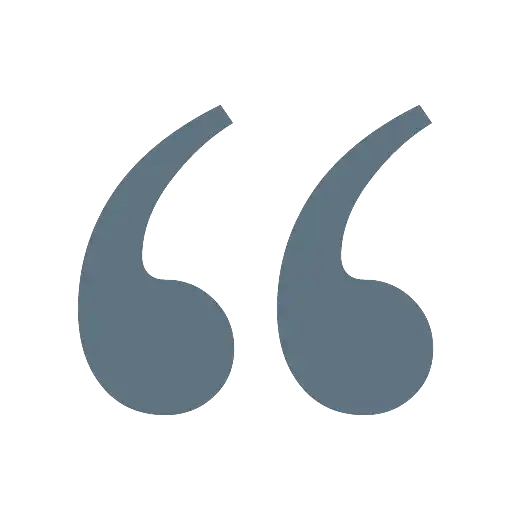
“After touring so much, I was looking for some peace. I found Morocco, and it was perfect. Everything I wanted to feel about peace, I found it there.”
About morocco.
Discover the beauty of Morocco with our comprehensive Travel Guide. From exploring the Sahara Desert to savoring Moroccan cuisine, we’ve got you covered.
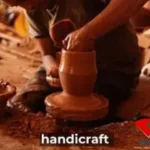
Morocco Travel Guide E-Book For Free
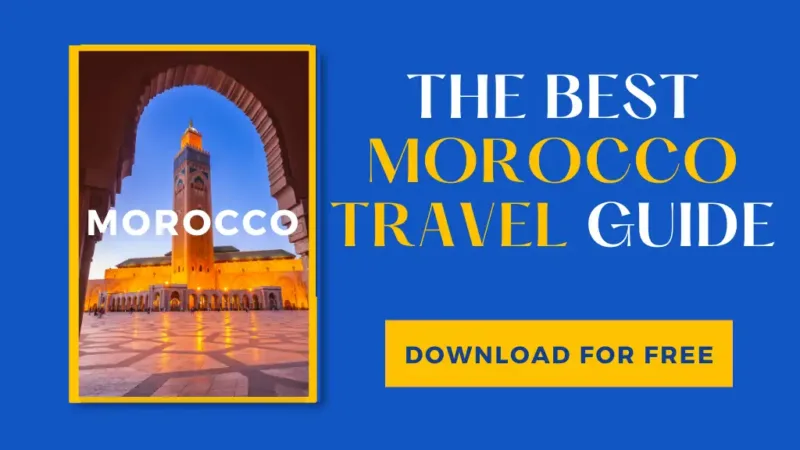
Best Morocco Travel Guide To Help You !

Discover 7 Hidden Marvels: Off the Beaten Path Morocco Destinations Unveiled!
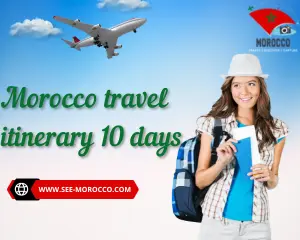
Explore the Wonders of Morocco: A 10-Day Travel Guide for Unforgettable Experiences!
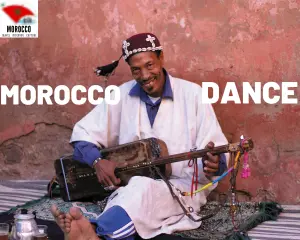
Unveiling the Rhythmic Tapestry: Exploring the Soul of Moroccan Dance
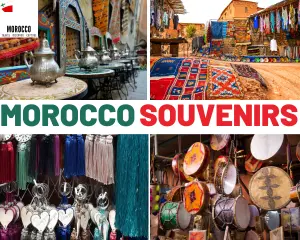
Discover the Top Moroccan Souvenirs: Unveiling the Rich Tapestry of Cultural Treasures
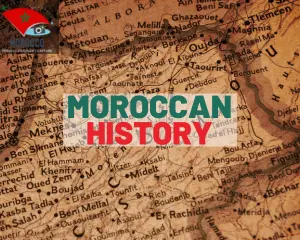
Moroccan History: A Journey Through Time

Moroccan Architecture: A Timeless Tapestry of Culture and Craftsmanship
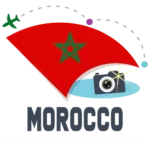
+212664846869
Ghassate ouarzazate Morocco
- Privacy Policy
- TERMS OF US
- AFFILIATE DISCLAIMERS

IMAGES
VIDEO
COMMENTS
Morocco. Africa. Check out this year's Best in Travel winners. A country of dazzling diversity, Morocco has epic mountains, sweeping deserts and ancient cities, and it greets travelers with warm hospitality and the perfect glass of mint tea. Best Time to Visit. Best Places to Visit.
Morocco Travel Guide: Best Things To Do (10-day Itinerary) Africa. morocco. Morocco: beautiful, diverse, adventurous, and mysterious. On the same day, you can walk with a camel in the Sahara at sunrise, snowboard in the Atlas Mountains by the afternoon, and relax in luxurious medina riads by evening. It is a large country with legendary scenery ...
Morocco Travel Costs. Accommodation - Dorm rooms with 6-8 beds cost between 80-110 MAD per night in the big cities like Marrakesh and Fez, and about 50-60 MAD in smaller places. Private rooms in hostels cost around 260-380 MAD. Free Wi-Fi is standard and many hostels also include free breakfast.
The Kairaouine Library and Mosque houses the world's oldest library and is Morocco's renowned spiritual and study center. Planning tip: While you're in the area, visit the imperial city of Meknes and the fantastically preserved ancient Roman ruins of Volubilis. 8. Tangier.
To get the most out of your trip to Morocco, use a guide who has in-depth expertise and speaks your language. In cities, check with the local tourism office or your accommodations for recommendations for licensed guides in the area. ... Morocco is a fantastic year-round vacation destination, but the best time of year to travel will depend on ...
With such diversity, it can be overwhelming trying to plan a trip to visit Morocco. The country is full of famous tourist attractions and hidden gems, but luckily there is something for everyone. Table of Contents. The Best Places to Visit in Morocco. 1) Marrakech. 2) Rabat. 3) Fez.
Spring and Autumn (March - May, September - October): The best time to visit Morocco is in Spring and Autumn, between March and May and September and October. This period brings warm temperatures between 20°C - 30°C and sunny skies, making travel throughout the country very pleasant.
Long-distance buses are a good budget option, while domestic flights are best for those with limited time. Once you arrive at your destination, use a local taxi (known as a petit taxi) to get around town. Travel Tip: Morocco is a Muslim country and tourists should dress modestly to avoid causing offense.
The Ultimate Morocco Travel Guide. ... Experience the best of Morocco by exploring its bustling souks, going on a thrilling hike, and spending some time at the beach. Learn about Moroccan culture by soaking up local traditions and sampling the delicious food. All this and more await you in this beautiful destination - so come explore it today!
Morocco Travel Guide. Your ultimate Morocco travel guide, with tips, things to do, and best things to see in Morocco. Great for first-time and returning travelers. Morocco is a fascinating multicultural country blended from African, Arab and European influences. It is our closest link to the continent of Africa and a diverse holiday destination.
The best way to travel between Moroccan cities is by train. Morocco now has Africa's fastest trains traveling at 300km/h (186mph) linking Tangier, Rabat and Casablanca every hour over a new high-speed line. Classic trains link northern Tangier and Casablanca with Meknes, Fes and Marrakech.
Top Morocco Tours. Book a Morocco tour and get to know the culture through a local. Sandboarding With Lunch In A Berber House In Agadir. Visit a Souk and Cook Moroccan Food in Marrakech. Quad Bike Adventure In Agadir.
Morocco travel facts; Size and location: Located on the northwest coast of Africa, Morocco is slightly smaller than France and Spain, and slightly larger than the US state of California at 446,550 square kilometres (722,550 sq km including the Western Sahara). Population:37 million. Religion: Nearly 99 percent of Moroccans are Muslim, with 1 percent Christian and a tiny minority (an estimated ...
Get information on Morocco Travel Guide - Expert Picks for your Vacation hotels, restaurants, entertainment, shopping, sightseeing, and activities. Read the Fodor's reviews, or post your own.
The best time to visit Morocco depends on the region you plan to explore. Spring (April to June) and fall (September to November) offer the most pleasant weather for most of the country. However, if you plan to visit the Sahara desert, the cooler months of November to February would be more suitable. 2.
Travel best Sport Golf in Morocco, a hundred-year-old history Golf in Morocco, a hundred-year-old history From North to South, the golfing experience in Morocco varies depending on whether you prefer to play in the sun, at the foot of the Atlas Mountains, on the Mediterranean coast or near cities rich...
Morocco is located in the northwest corner of Africa. Thanks to its stunning landscapes, colorful cities, year-round pleasant weather, and unique cuisine, Morocco is a popular travel destination. In this article, we'll highlight the most important things to know before going, the 10 best places to visit in Morocco, and some itineraries we recommend.
This is the ultimate Morocco travel guide for 2023, covering everything there is to know about visiting this beautiful country. I designed this page to be a complete resource for trip planning, outlining general things to know about Morocco, the top places to visit, bucket list experiences, how to get around, and a whole lot more.
The jam-packed souks can feel rather intense at times. (Photo by Benét J. Wilson/The Points Guy) Back in 2005, when The Points Guy and Lori Zaino headed to Marrakech for the first time, they found a dizzying combination of bustling, jam-packed souks and quiet, tranquil spots hidden among the winding market streets.
At the time of writing, 1 USD is roughly 9.17 MAD. Photos: Always ask before taking photos of people or possessions in Morocco. In some cases, you may be expected to pay if you want to take a picture. Generally, politely asking before taking a picture should be a rule of thumb for anywhere you travel.
This Morocco travel guide provides comprehensive information to help you plan your trip to Morocco. However, it is always best to consult trusted travel resources and official government sources and consider your personal preferences and requirements when making travel decisions, contact us for more information related to traveling to Morocco.
Best Morocco Travel Guide To Help You ! Explore the ultimate Morocco Travel Guide - Uncover hidden gems, plan itineraries, and savor Moroccan cuisine. Your adventure begins here!
How much you spend on your trip to Morocco depends on your travel style and budget. accommodation in Morocco ranges from $10-30 per night for a basic room in a hostel or guesthouse to $100-200 per night for a luxury hotel. meals can cost as little as $2-5 for street food or a simple dish in a restaurant to $30-50 for a nicer meal with drinks ...